JavaWeb快速入门
1.基本概念
1.前言
web开发:
2.web应用程序
web应用程序:可以提供浏览器访问的程序。
a.html.b.html……多个web资源,这些web资源可以被外界访问,对外界提供服务。
我们能访问到的任何一个页面或者资源,都存在于这个世界的某一个角落的计算机上。
URL
这些统一的web资源会被放在同一个文件夹下,web应用程序–>Tomcat:服务器。
一个web应用由多部分组成 (静态web,动态web)。
- html,css,js
- jsp,servlet
- Java程序
- jar包
- 配置文件 (Properties)
web应用程序编写完毕后,若想提供给外界访问:需要一个服务器来统一管理;
3.静态web
- *.htm, *.html,这些都是网页的后缀,如果服务器上一直存在这些东西,我们就可以直接进行读取。通络;

- 静态web存在的缺点:
- Web页面无法动态更新,所有用户看到都是同一个页面;
- 轮播图,点击特效:伪动态;
- JavaScript [实际开发中,它用的最多];
- VBScript;
- 它无法和数据库交互(数据无法持久化,用户无法交互)。
4.动态web
页面会动态展示: “Web的页面展示的效果因人而异”;

缺点:
- 加入服务器的动态web资源出现了错误,需要重新编写后台程序,重新发布;
优点:
- Web页面可以动态更新,所有用户看到都不是同一个页面;
- 它可以与数据库交互 (数据持久化:注册,商品信息,用户信息……..);
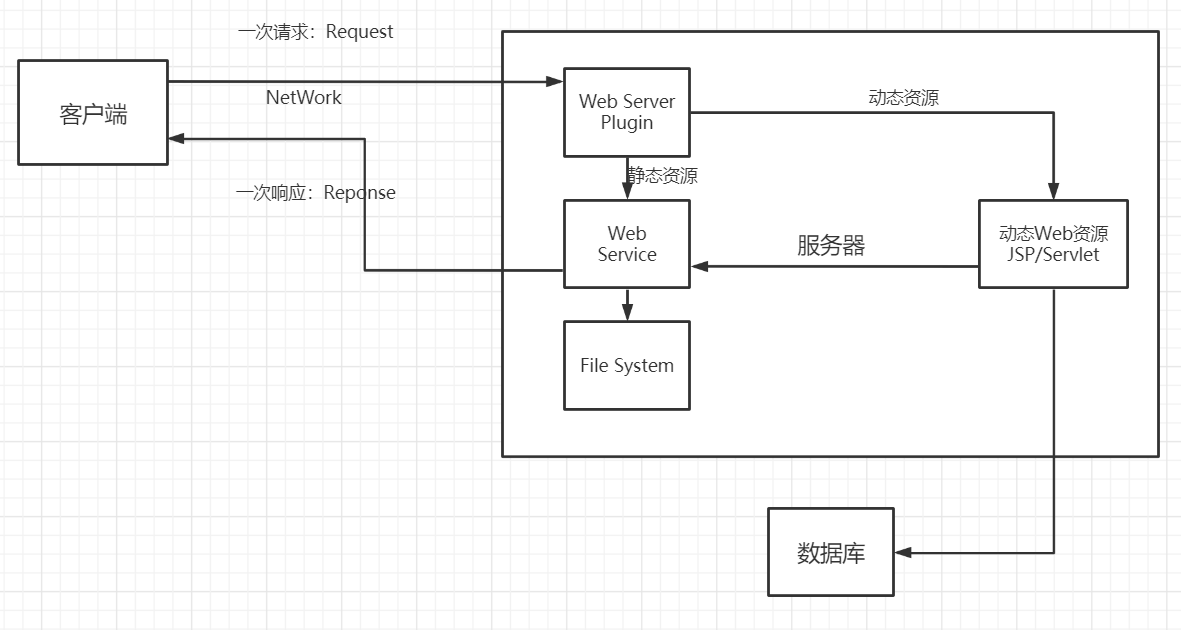
2.web服务器
1.技术讲解
ASP:
php:
- PHP开发速度很快,功能很强大,跨平台,代码很简单 (70% , WP)
- 无法承载大访问量的情况(局限性)
**JSP/Servlet : **
B/S:浏览和服务器
C/S: 客户端和服务器
- sun公司主推的B/S架构
- 基于Java语言的 (所有的大公司,或者一些开源的组件,都是用Java写的)
- 可以承载三高问题带来的影响;
- 语法像ASP , ASP–>JSP , 加强市场强度;
…..
2.web服务器

==面向百度编程==;
Tomcat是Apache 软件基金会(Apache Software Foundation)的Jakarta 项目中的一个核心项目,最新的Servlet 和JSP 规范总是能在Tomcat 中得到体现,因为Tomcat 技术先进.性能稳定,而且免费,因而深受Java 爱好者的喜爱并得到了部分软件开发商的认可,成为目前比较流行的Web 应用服务器。
Tomcat 服务器是一个免费的开放源代码的Web 应用服务器,属于轻量级应用服务器,在中小型系统和并发访问用户不是很多的场合下被普遍使用,是开发和调试JSP 程序的首选。对于一个Java初学web的人来说,它是最佳的选择。
Tomcat 实际上运行JSP 页面和Servlet。Tomcat最新版本为9.0。
….
工作3-5年之后,可以尝试手写Tomcat服务器;
- 下载tomcat:
- 安装 or 解压;
- 了解配置文件及目录结构;
- 这个东西的作用。
3.Tomcat
1. 安装tomcat
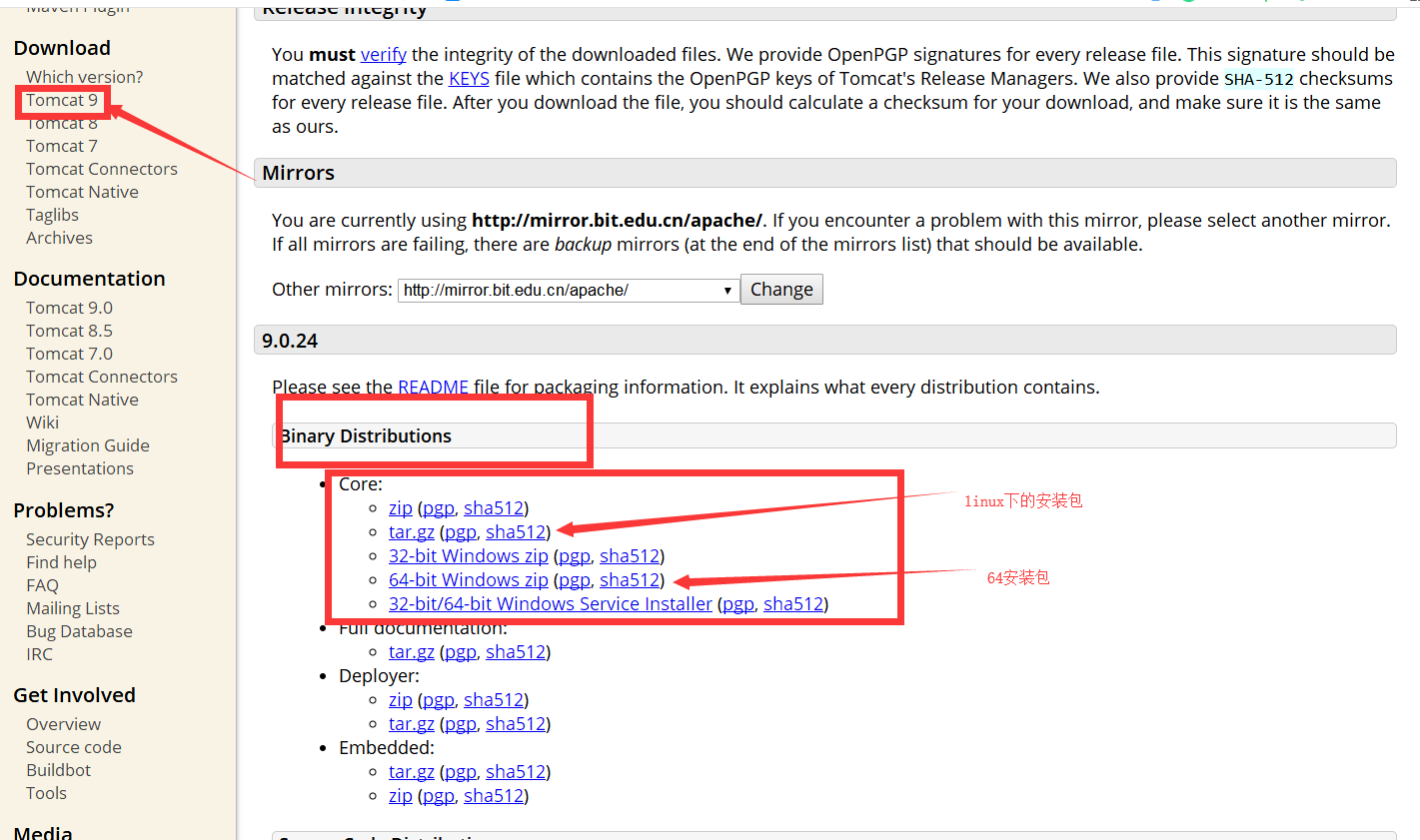

2.Tomcat启动和配置
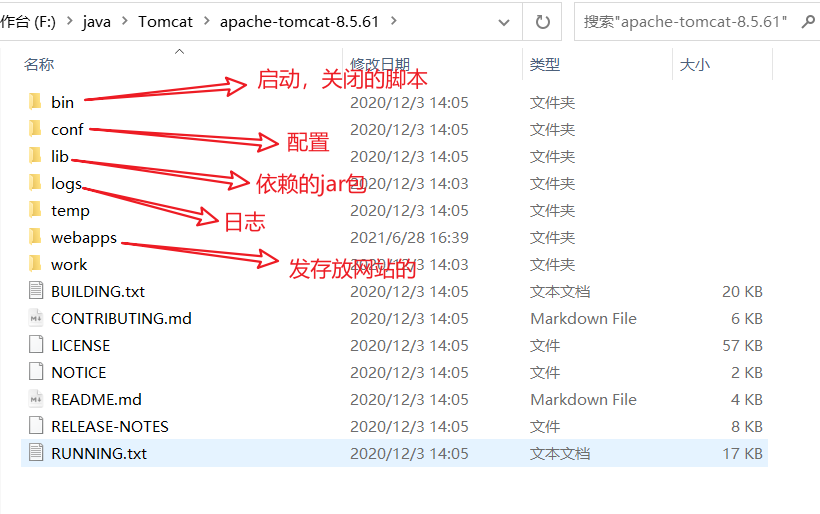
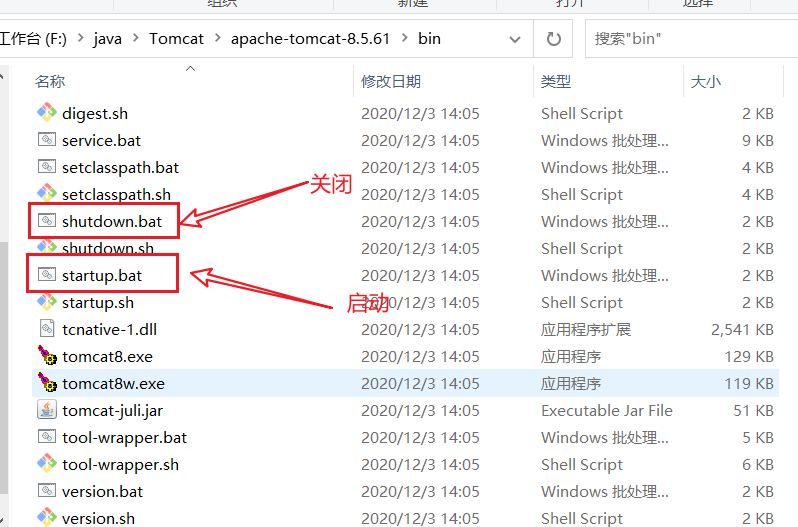
3.配置
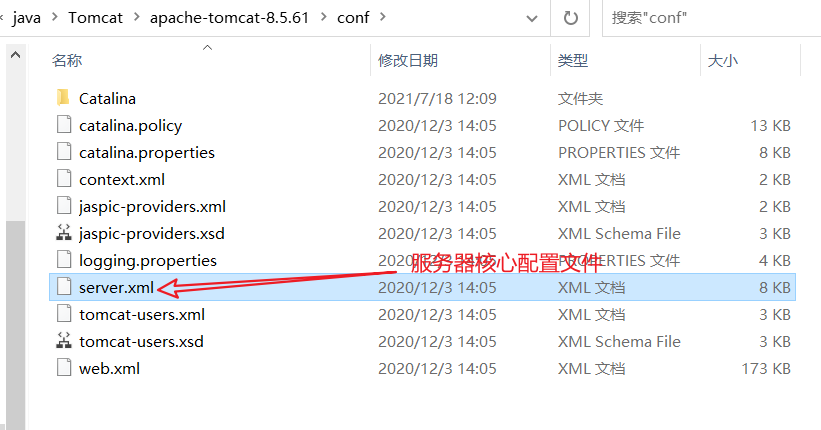
- 可以配置启动的端口号
- Tomcat的默认端口号为:8080
- mysql:3306
- http:80
- https:443
1
2
3
| <Connector port="8081" protocol="HTTP/1.1"
connectionTimeout="20000"
redirectPort="8443" />
|
- 可以配置主机的名称
- 默认的主机名为:localhost->127.0.0.1
- 默认网站应用存放的位置为:webapps
1
2
| <Host name="www.testly.com" appBase="webapps"
unpackWARs="true" autoDeploy="true">
|
高难度面试题
请你谈谈网站是如何进行访问的!
输入一个域名;回车
检查本机的 C:\Windows\System32\drivers\etc\hosts配置文件下有没有这个域名映射;
有:直接返回对应的ip地址,这个地址中,有我们需要访问的web程序,可以直接访问
1
| 127.0.0.1 www.testly.com
|
没有:去DNS服务器找,找到的话就返回,找不到就返回找不到;
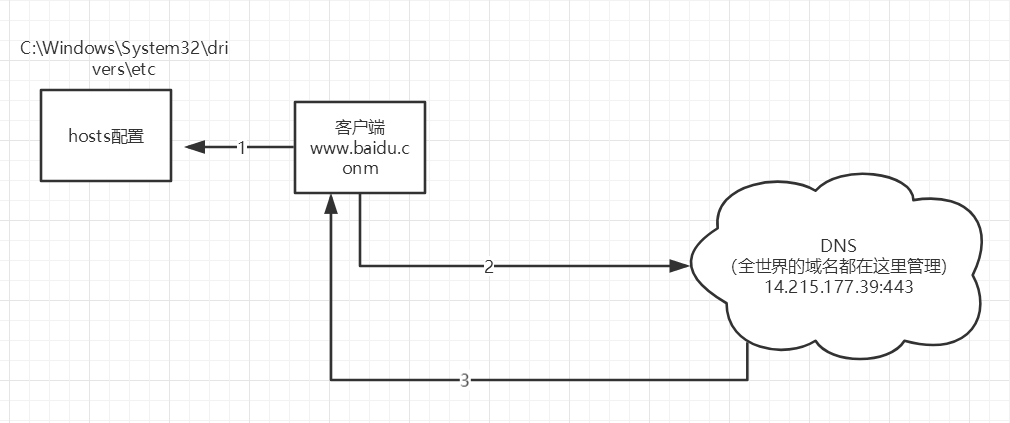
可以配置一下环境变量(可选性)。
4.发布一个web网站
不会就先模仿:
- 将自己写的网站,放到服务器(Tomcat)中指定的web应用的文件夹(webapps)下,就可以访问了。
网站应该有的结构
1
2
3
4
5
6
7
8
9
10
11
12
13
14
| --webapps :Tomcat服务器的web目录
-ROOT
-books :网站的目录名
- WEB-INF
-classes : java程序
-lib:web应用所依赖的jar包
-web.xml :网站配置文件
- index.html 默认的首页
- static
-css
-style.css
-js
-../img
-.....
|
HTTP协议 : 面试
Maven:构建工具
Servlet 入门
4.Http
1.什么是HTTP
HTTP(超文本传输协议)是一个简单的请求-响应协议,它通常运行在TCP之上。
- 文本:html,字符串 ….
- 超文本:图片,音乐,视频,定位,地图…….
- 80
Https:安全的
2.两个时代
http1.0
- HTTP/1.0:客户端可以与web服务器连接后,只能获得一个web资源,断开连接
http2.0
- HTTP/1.1:客户端可以与web服务器连接后,可以获得多个web资源。‘
3.Http请求
百度:
1
2
3
4
| Request URL:https:
Request Method:GET get方法/post方法
Status Code:200 OK 状态码:200
Remote(远程) Address:14.215.177.39:443
|
1
2
3
4
5
| Accept:text/html
Accept-Encoding:gzip, deflate, br
Accept-Language:zh-CN,zh;q=0.9 语言
Cache-Control:max-age=0
Connection:keep-alive
|
请求行
- 请求行中的请求方式:GET
- 请求方式:Get,Post,HEAD,DELETE,PUT,TRACT…
- get:请求能够携带的参数比较少,大小有限制,会在浏览器的URL地址栏显示数据内容,不安全,但高效
- post:请求能够携带的参数没有限制,大小没有限制,不会在浏览器的URL地址栏显示数据内容,安全,但不高效。
消息头
1
2
3
4
5
6
| Accept:告诉浏览器,它所支持的数据类型
Accept-Encoding:支持哪种编码格式 GBK UTF-8 GB2312 ISO8859-1
Accept-Language:告诉浏览器,它的语言环境
Cache-Control:缓存控制
Connection:告诉浏览器,请求完成是断开还是保持连接
HOST:主机..../.
|
4.Http响应
百度:
1
2
3
4
| Cache-Control:private 缓存控制
Connection:Keep-Alive 连接
Content-Encoding:gzip 编码
Content-Type:text/html 类型
|
响应体
1
2
3
4
5
6
7
8
| Accept:告诉浏览器,它所支持的数据类型
Accept-Encoding:支持哪种编码格式 GBK UTF-8 GB2312 ISO8859-1
Accept-Language:告诉浏览器,它的语言环境
Cache-Control:缓存控制
Connection:告诉浏览器,请求完成是断开还是保持连接
HOST:主机..../.
Refresh:告诉客户端,多久刷新一次;
Location:让网页重新定位;
|
响应状态码
200:请求响应成功 200
3xx:请求重定向
4xx:找不到资源 404
5xx:服务器代码错误 500 502:网关错误
常见面试题:
当你的浏览器中地址栏输入地址并回车的一瞬间到页面能够展示回来,经历了什么?
5.Maven
为什么要学习这个技术?
在Java Web开发中,需要使用大量的jar包,我们手动去导入,这种操作很麻烦,PASS!!!
如何能够让一个东西自动帮我导入和配置这个jar包。
由此,Maven诞生了!
1. Maven项目架构管理工具
在Javaweb的学习中,就是用来就是方便导入jar包的!
Maven的核心思想:约定大于配置。
Maven会规定好你该如何去编写自己的Java代码,必须要按照具体规范来。
2.下载安装Maven
官网:https://maven.apache.org/
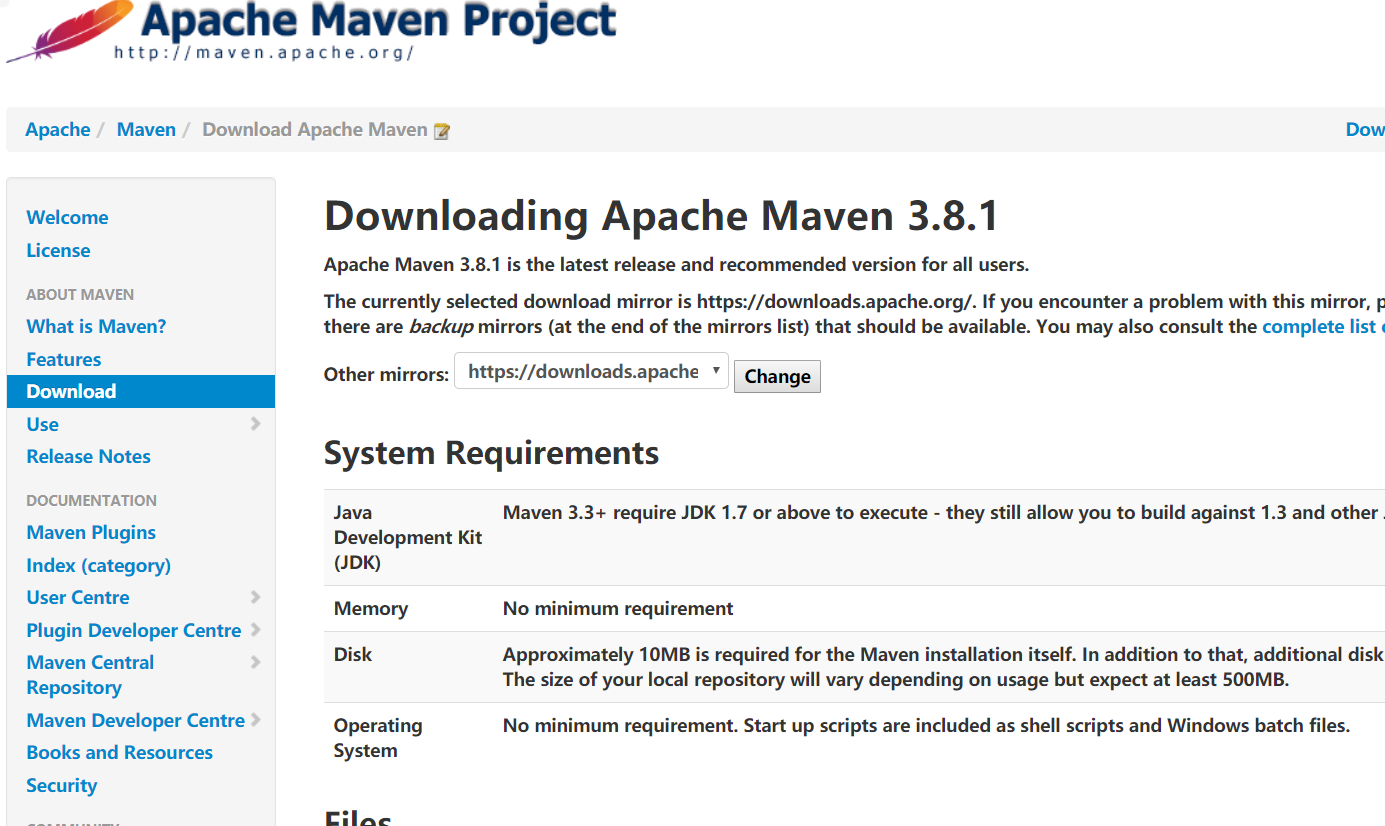

3.配置环境变量
环境不进行配置也可以使用,但建议配置环境!!!
在电脑的系统环境变量中,进行如下配置:
- 变量名:M2_HOME;变量值:你的maven目录下的bin目录。
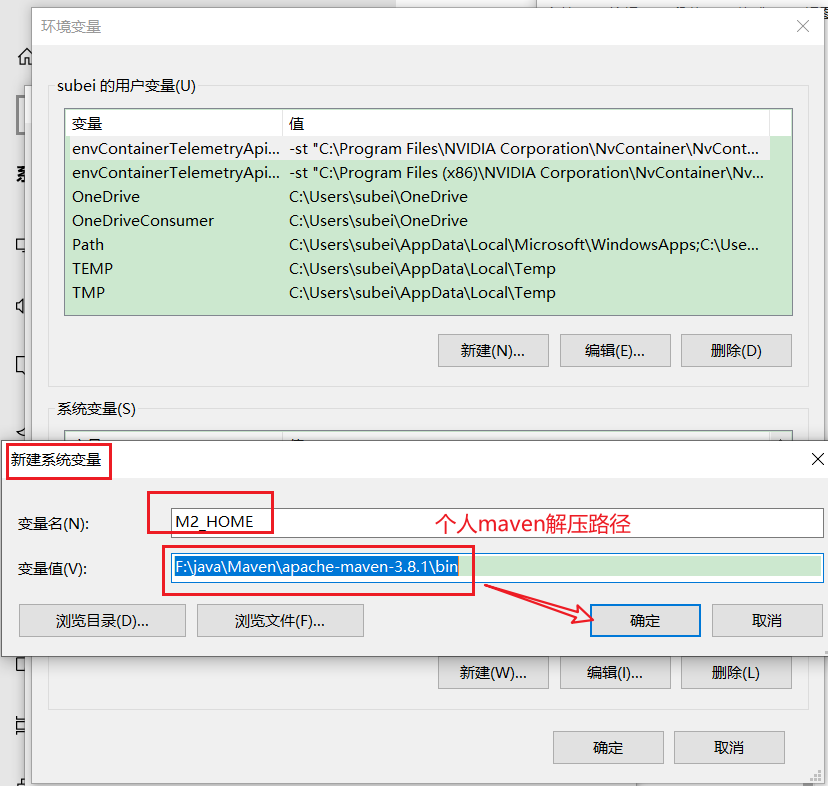
- 变量名:MAVEN_HOME;变量值:你的maven的目录。
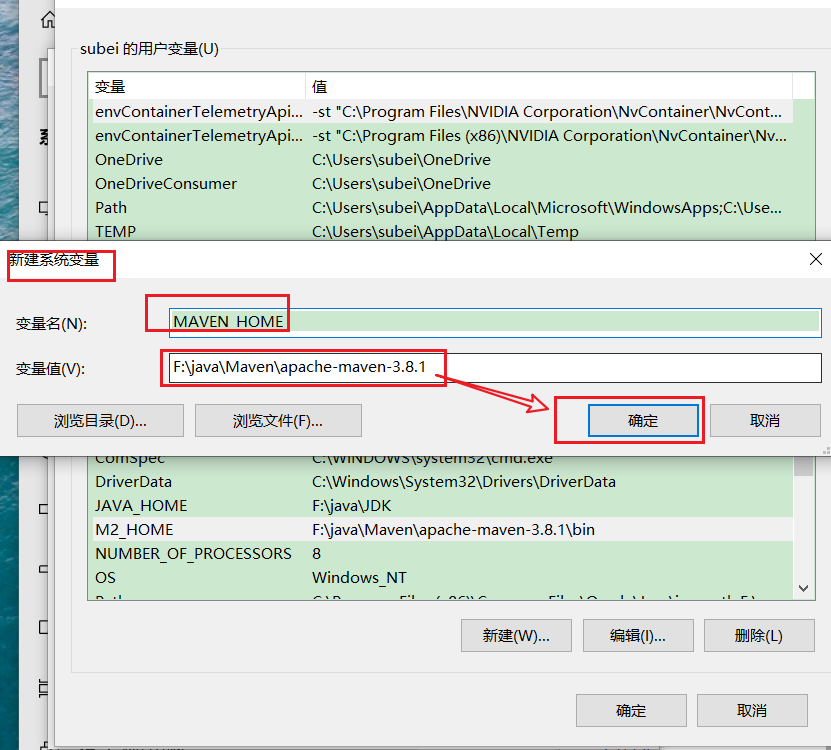
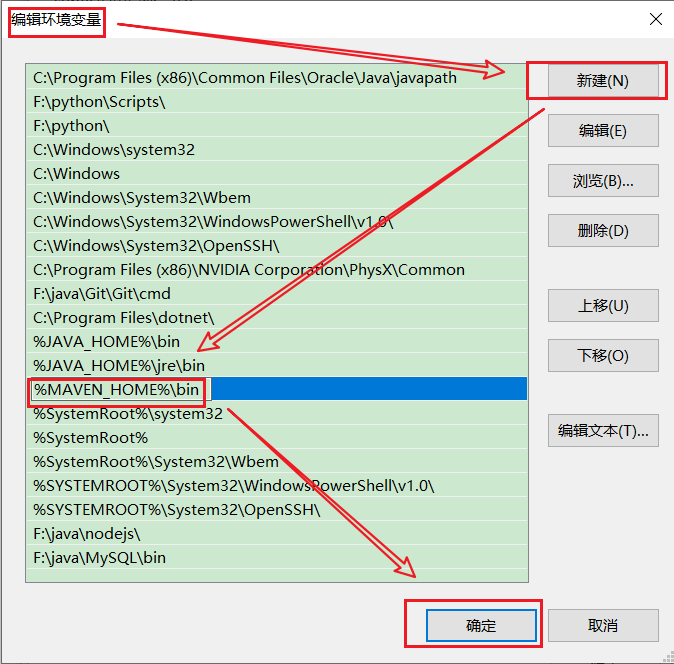
测试Maven是否安装成功,在cmd命令行输入:mvn -version,如下图则表示成功。

4.阿里云镜像
- 镜像:mirrors
- 国内建议使用阿里云的镜像。
- 在setttins.xml文件中找到标签对,进行修改:
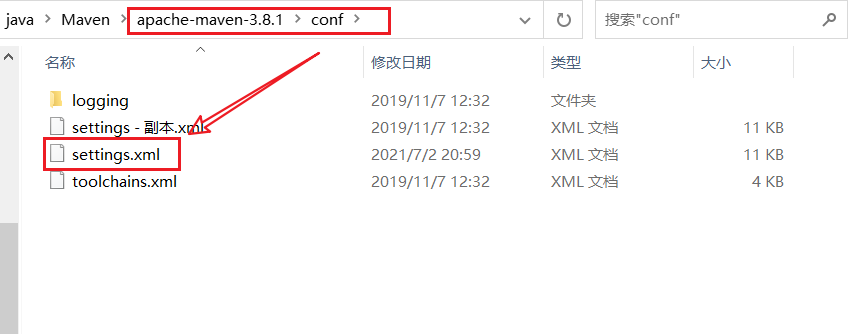

1
2
3
4
5
6
| <mirror>
<id>nexus-aliyun</id>
<mirrorOf>*</mirrorOf>
<name>Nexus aliyun</name>
<url>http://maven.aliyun.com/nexus/content/groups/public</url>
</mirror>
|
5.本地仓库
本地仓库:在本地的仓库。
建立一个本地仓库:localRepository
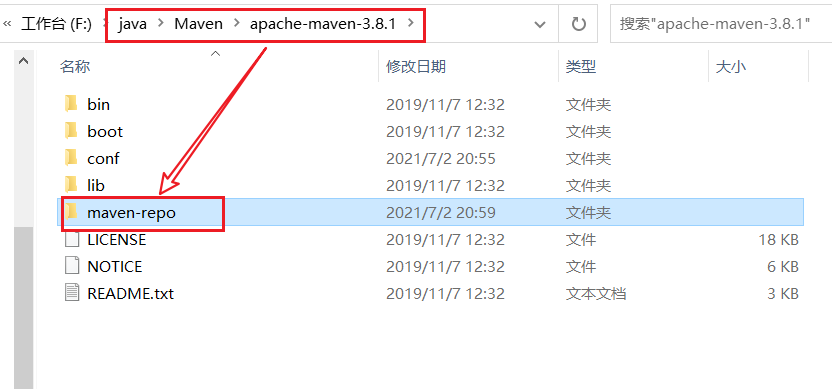
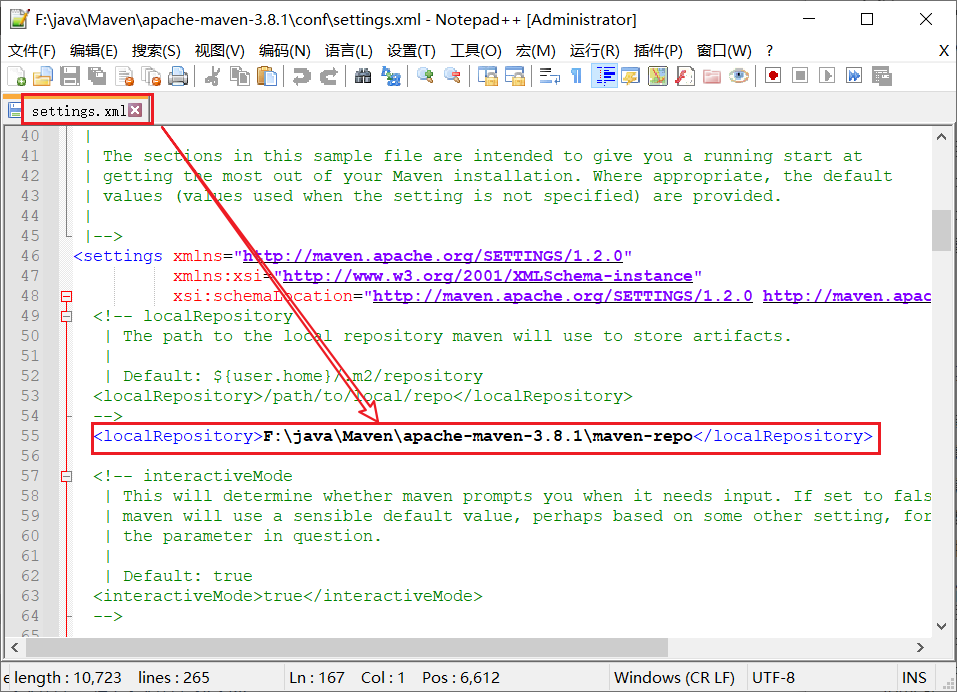
1
| <localRepository>F:\java\Maven\apache-maven-3.8.1\maven-repo</localRepository>
|
6.在IDEA中使用Maven
启动IDEA;
创建一个Maven项目;
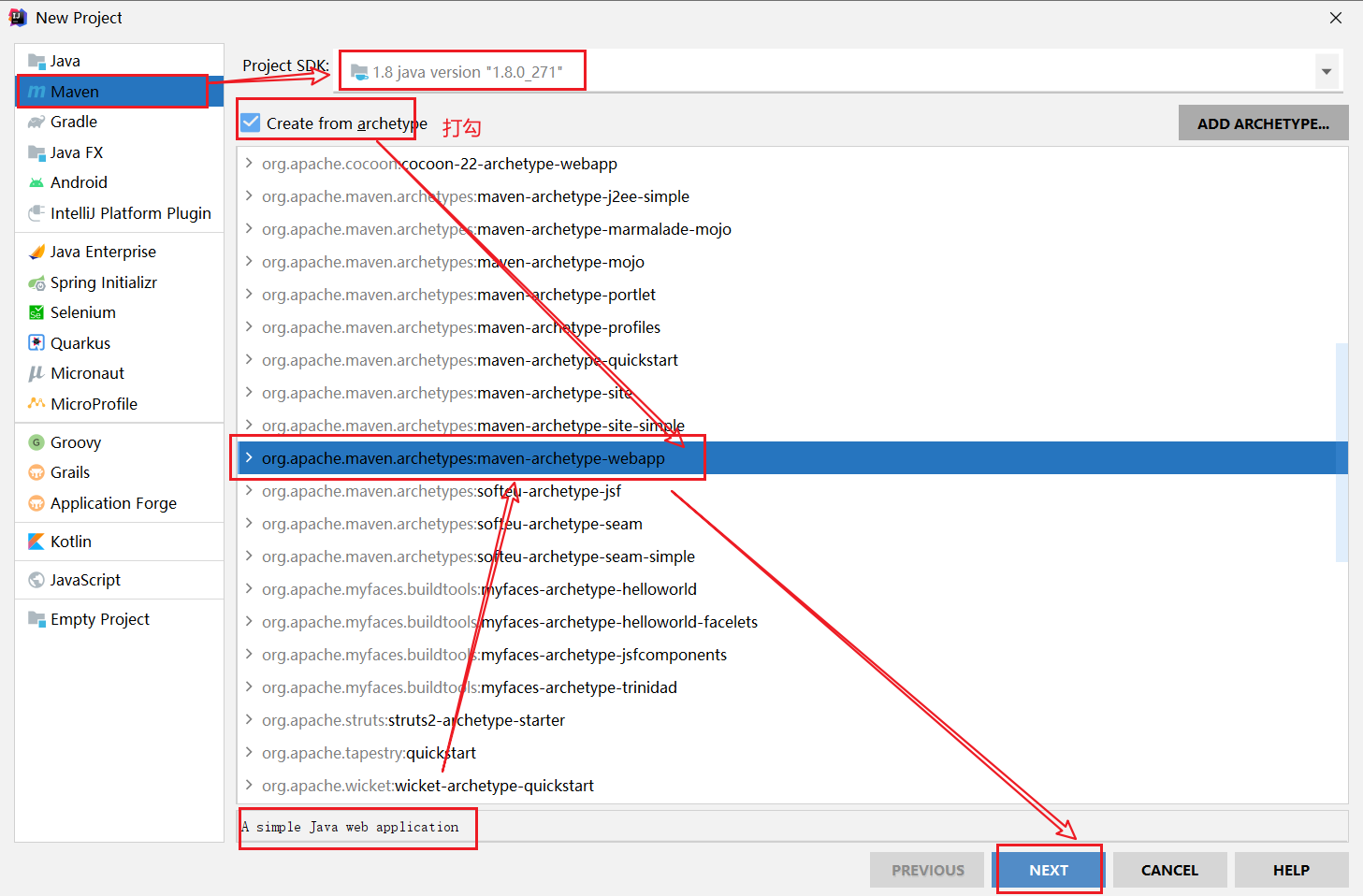

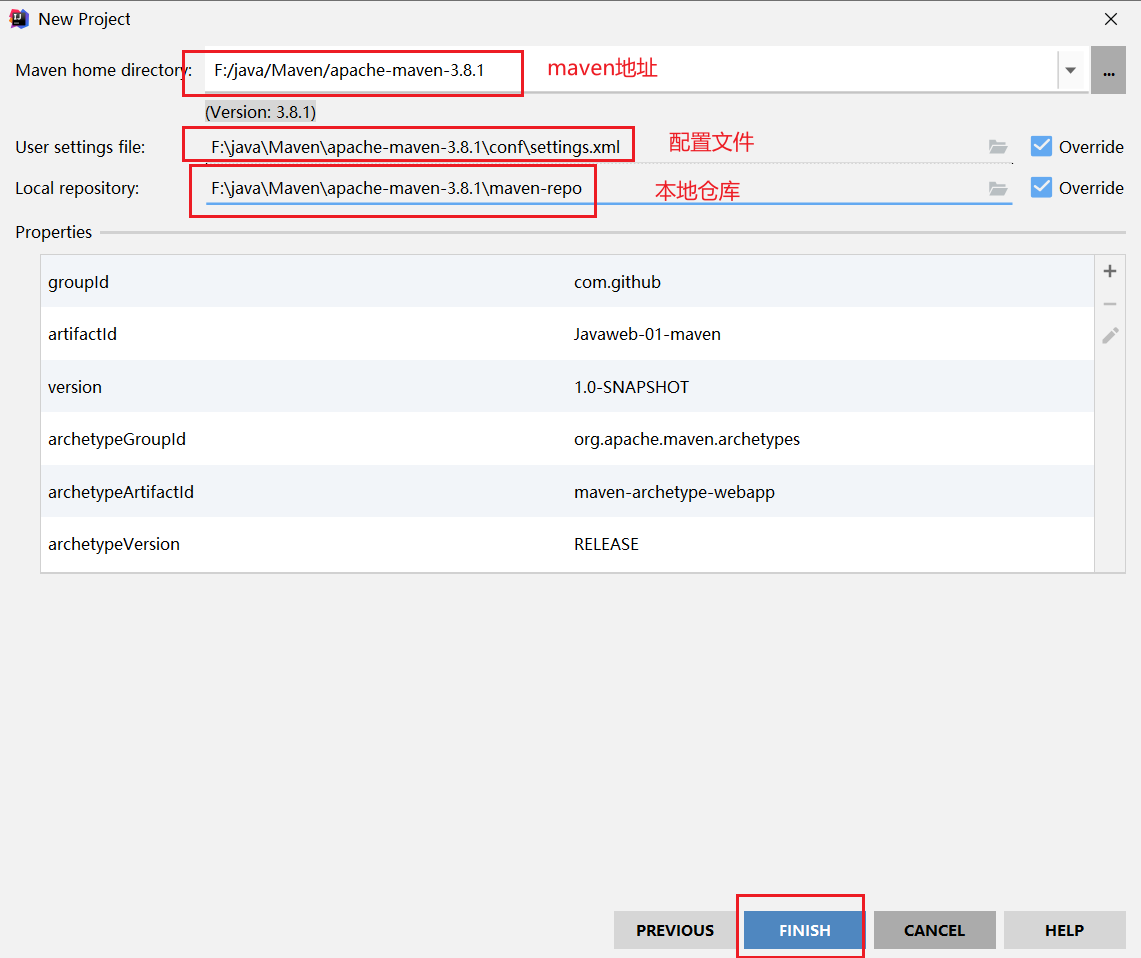

- 等待项目初始化完毕。最后运行结果如下图:
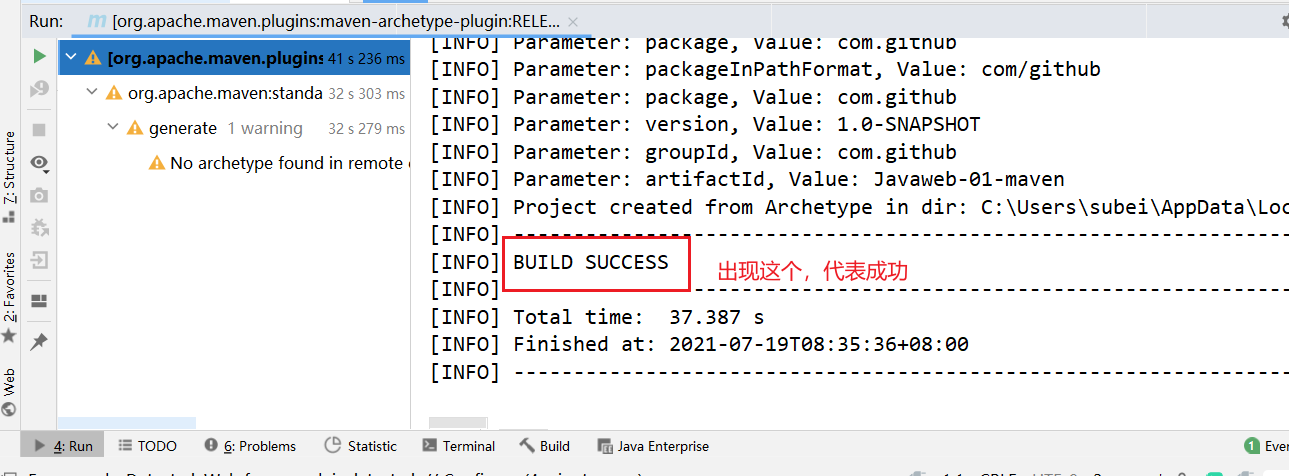
- 观察maven仓库中多了什么东西?
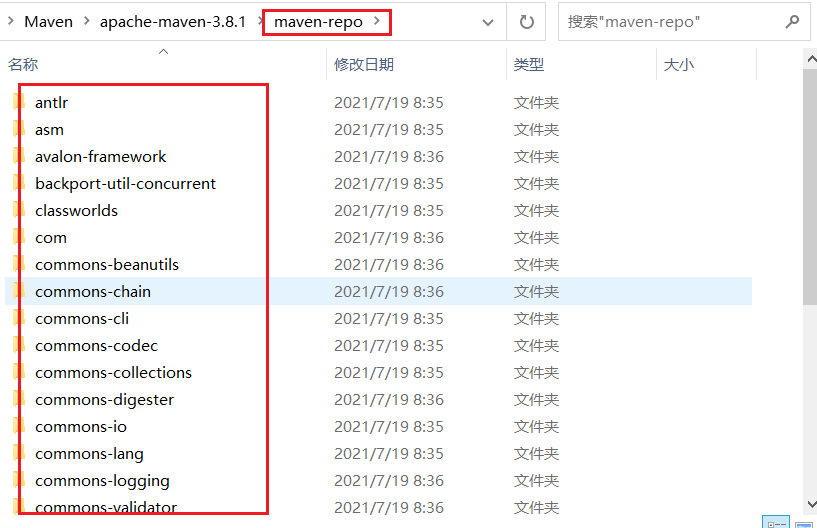
- IDEA中的Maven设置
注意:IDEA项目创建成功后,看一眼Maven的配置。

注意:在IDEA中配置,Maven经常在IDEA中会出现一个问题就是项目自动创建完成后,它这个==Maven Home会使用IDEA默认==,如果发先了这个问题,手动改为本地的。
- 到这里,Maven在IDEA中的配置和使用就OK了!
7.创建一个普通的Maven项目
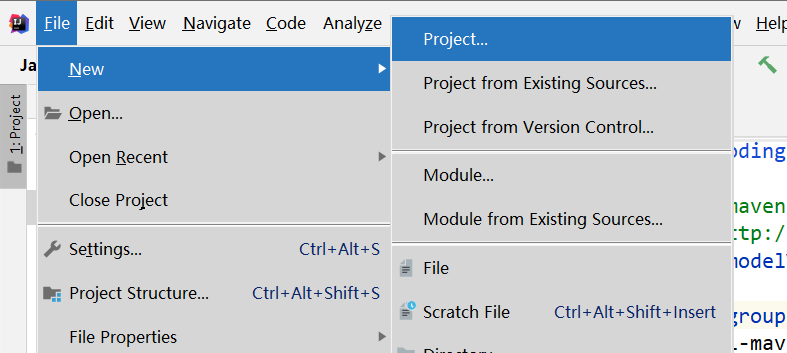
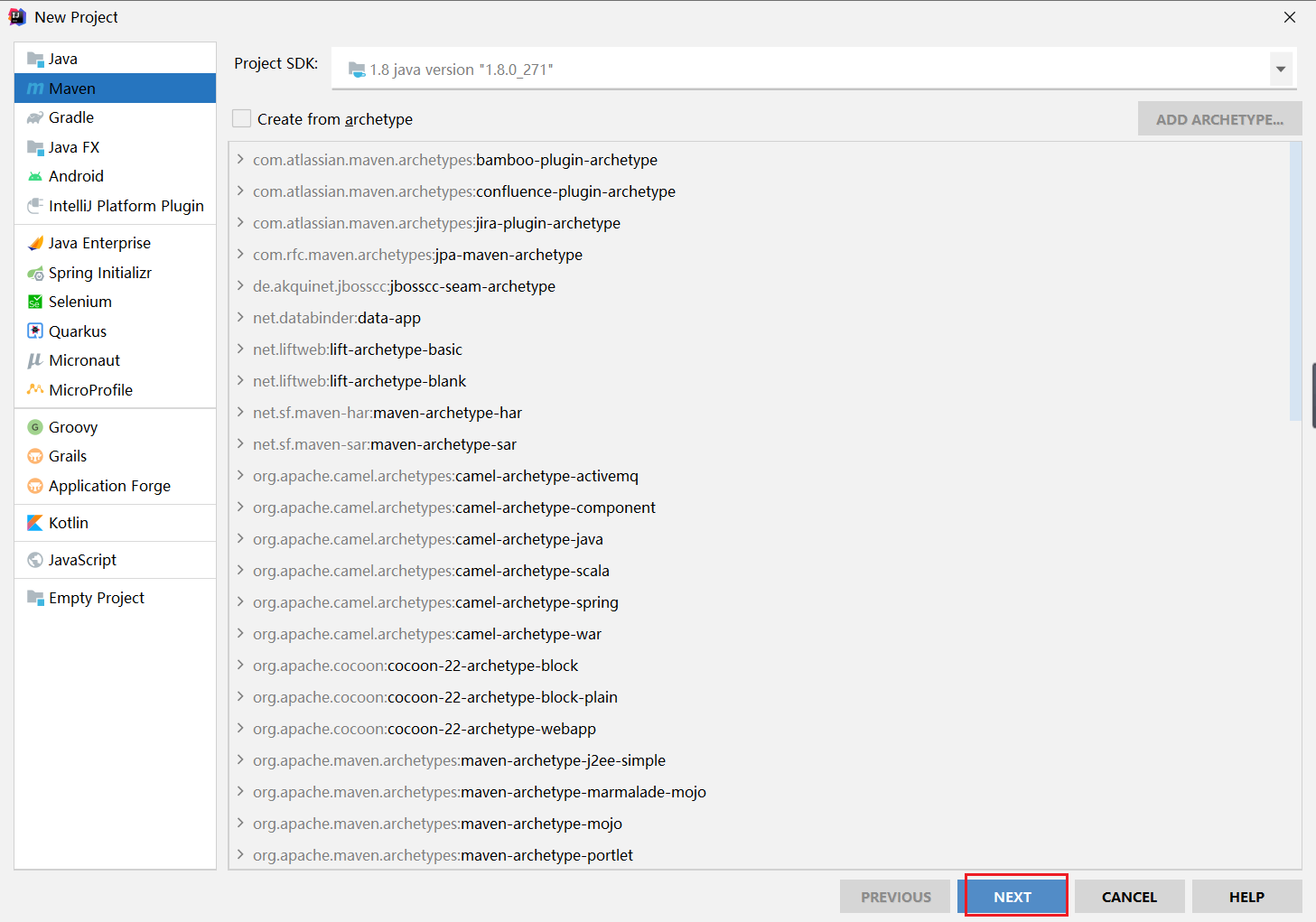
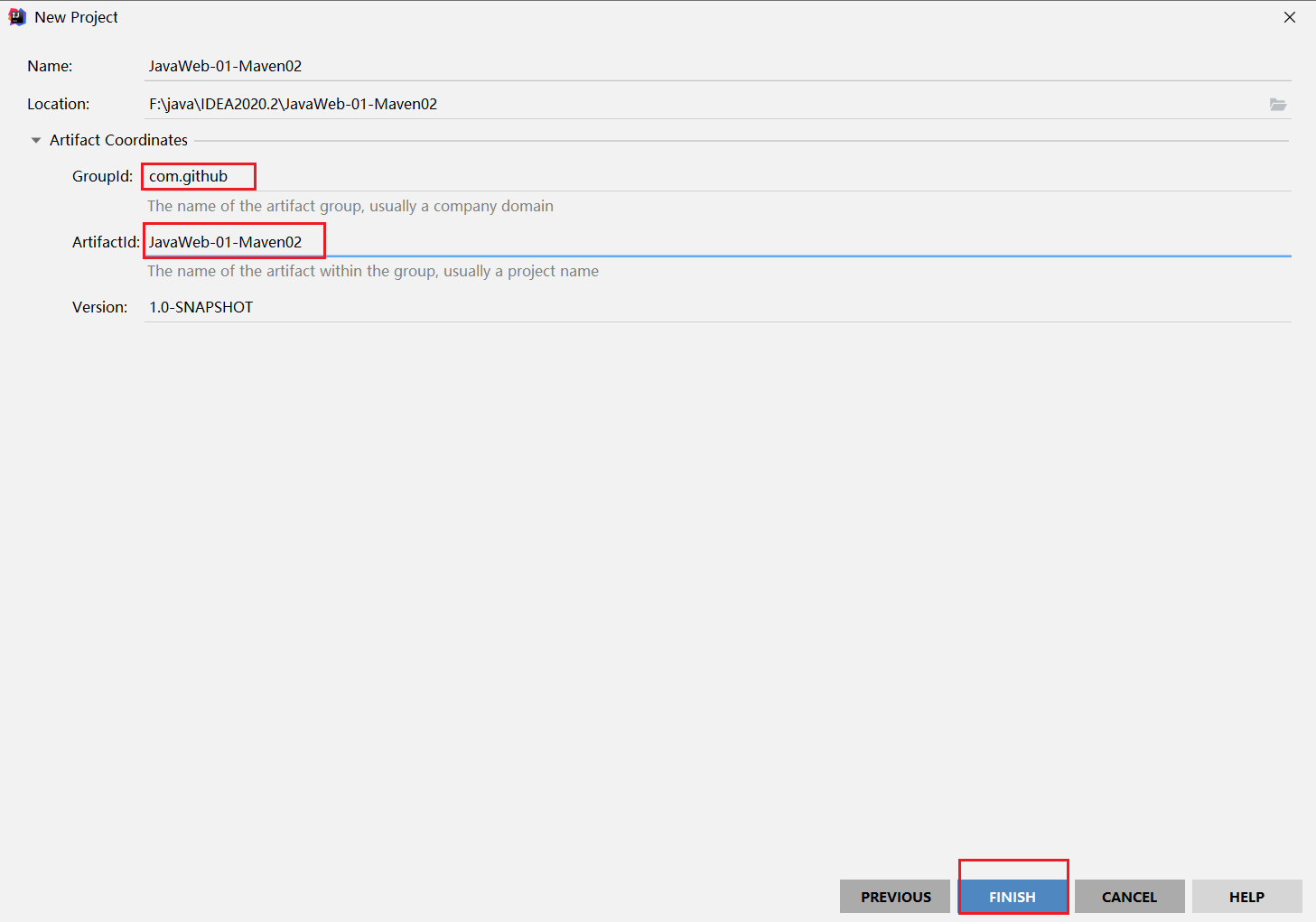
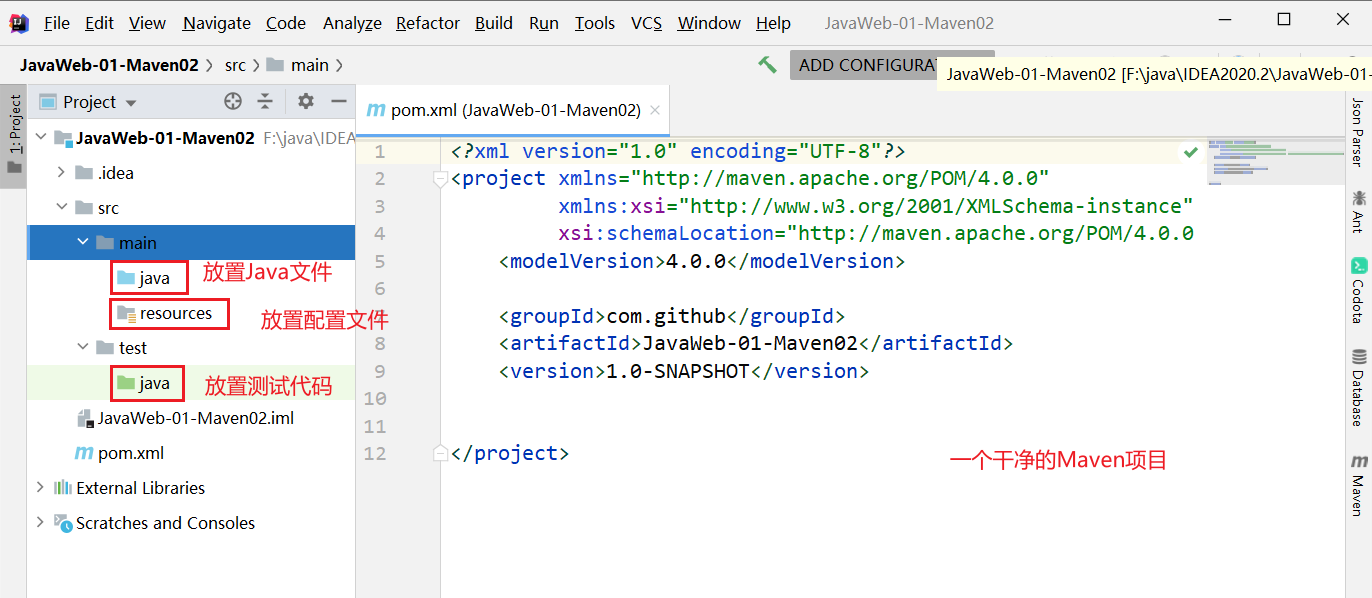
这个只有在Web应用下才会有!
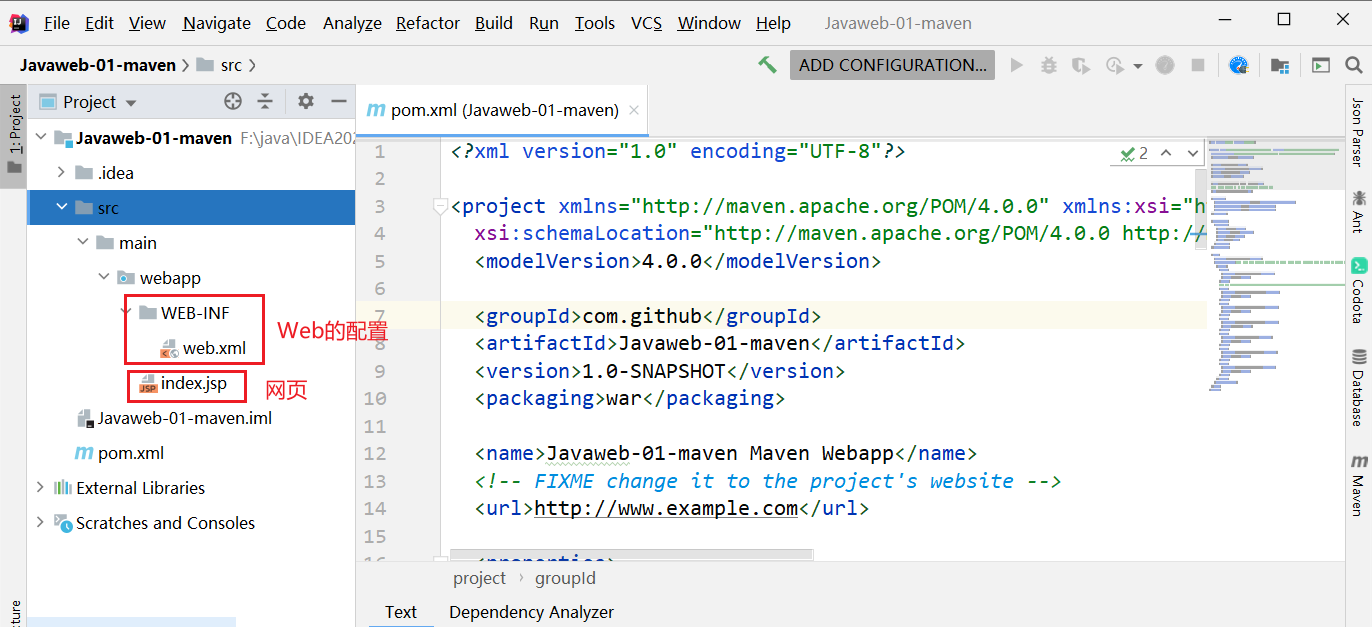
创建中报错:Cannot resolve plugin org.apache.maven.plugins:maven-jar-plugin

主要原因是本地maven的配置文件和仓库地址不一致。



修改后如果仍是不行,可修改一下项目的pom.xml文件,加入如下代码:
1
2
3
4
5
6
7
8
9
10
11
12
13
| <repositories>
<repository>
<id>alimaven</id>
<name>Maven Aliyun Mirror</name>
<url>https://repo.maven.apache.org/maven2/</url>
<releases>
<enabled>true</enabled>
</releases>
<snapshots>
<enabled>false</enabled>
</snapshots>
</repository>
</repositories>
|
再次进行刷新。如果你有更好的方法,欢迎留言交流!!!
8.标记文件夹功能
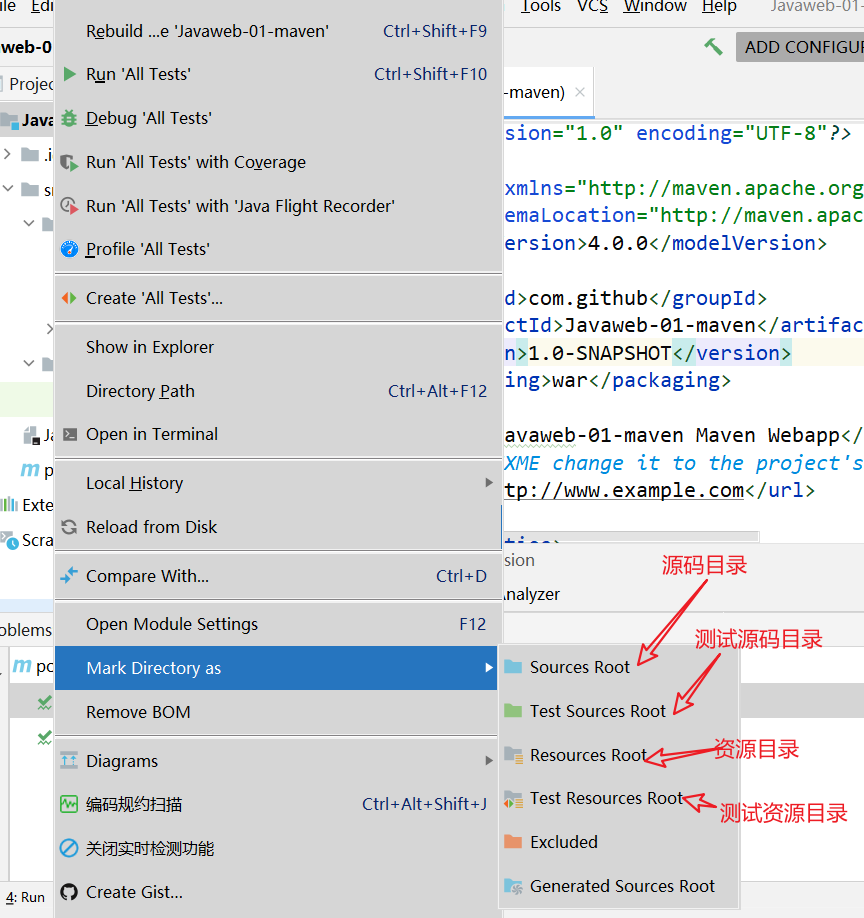
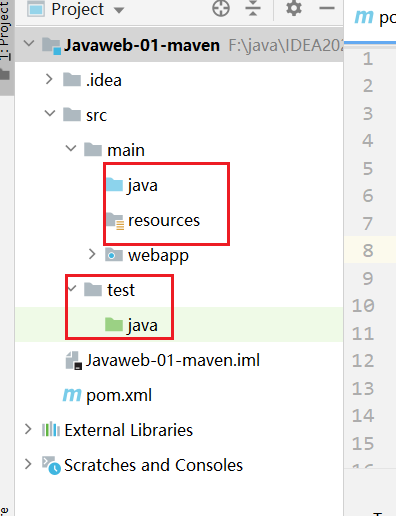
9.在 IDEA中配置Tomcat

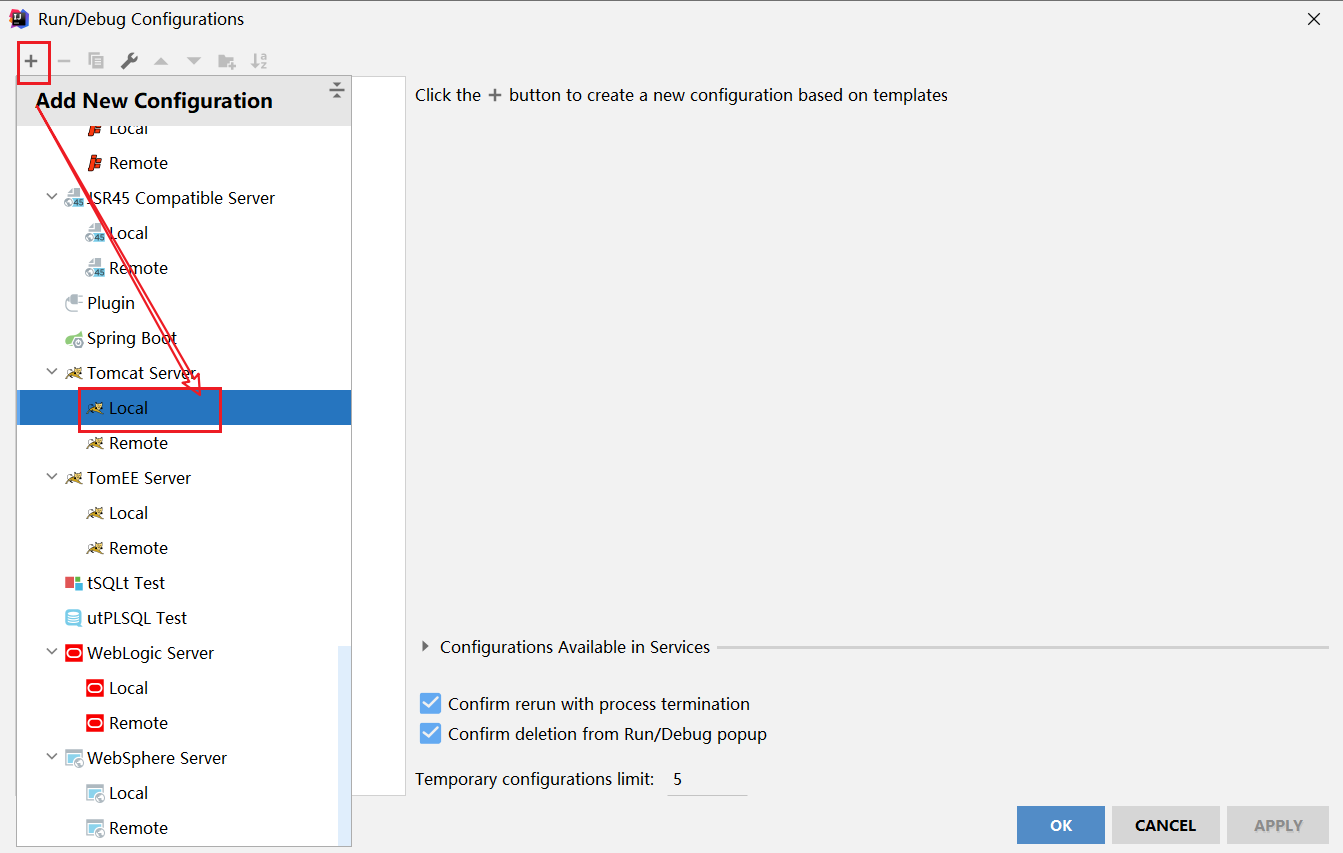
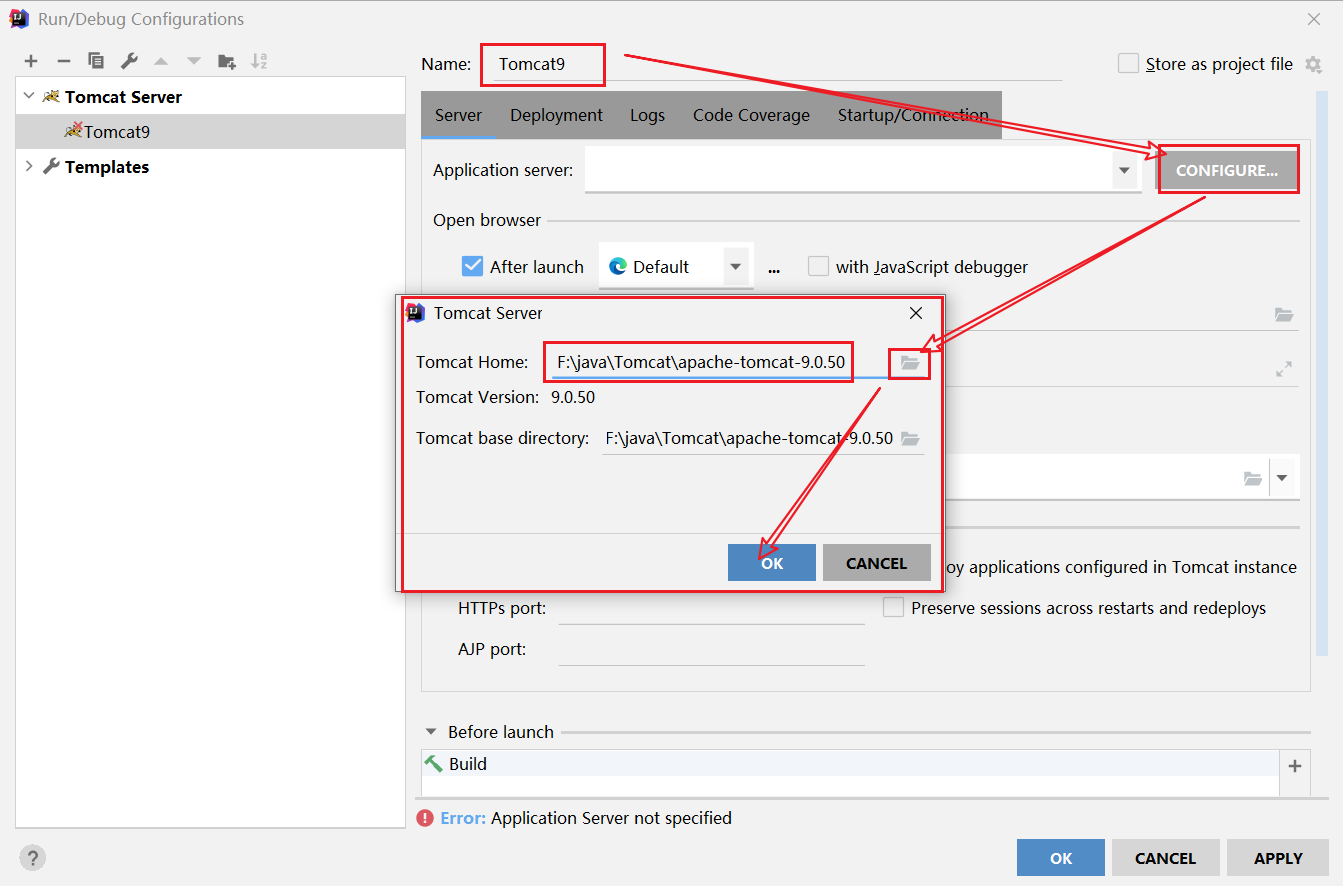
解决警告问题。必须要的配置:为什么会有这个问题:我们访问一个网站,需要指定一个文件夹名字;
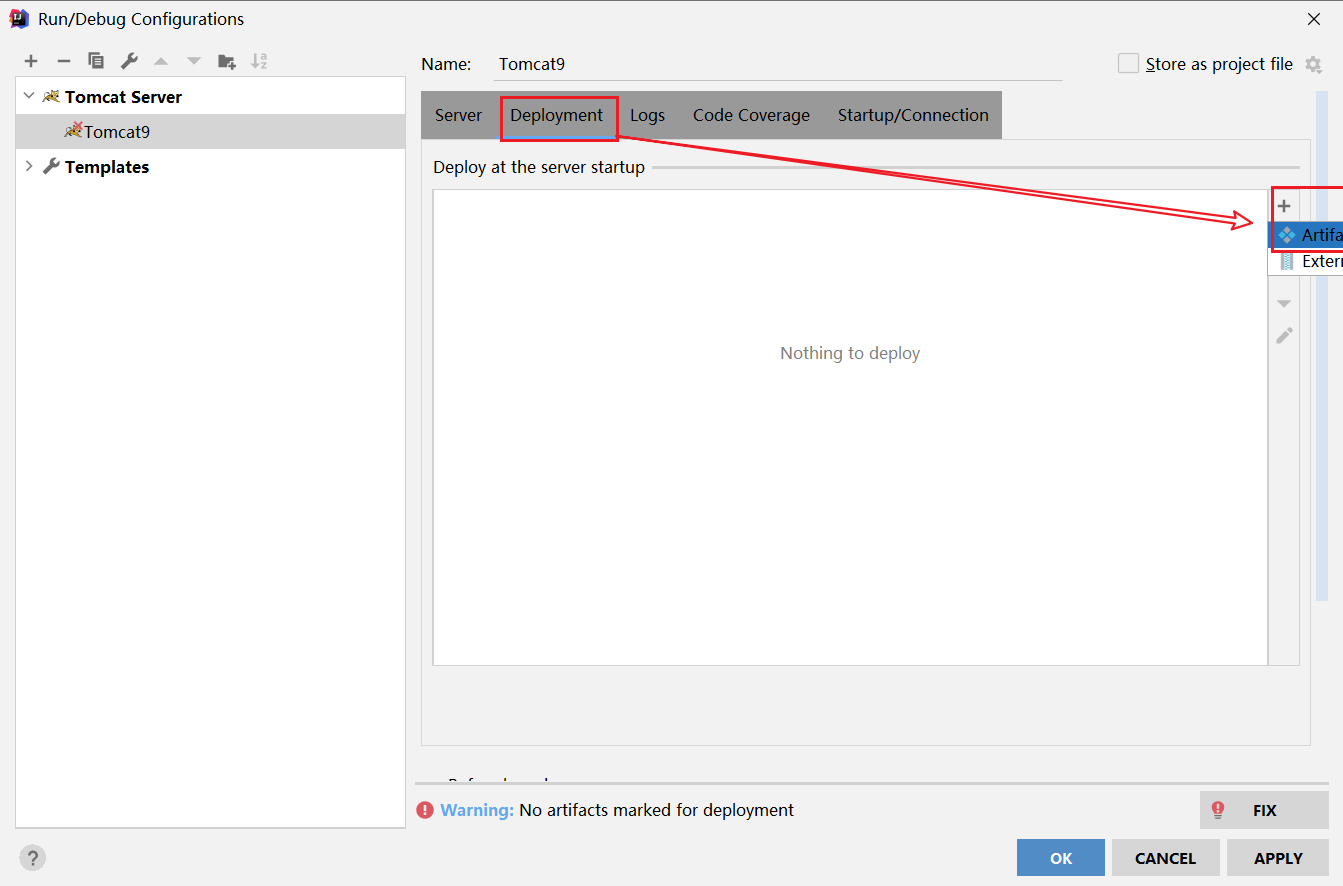
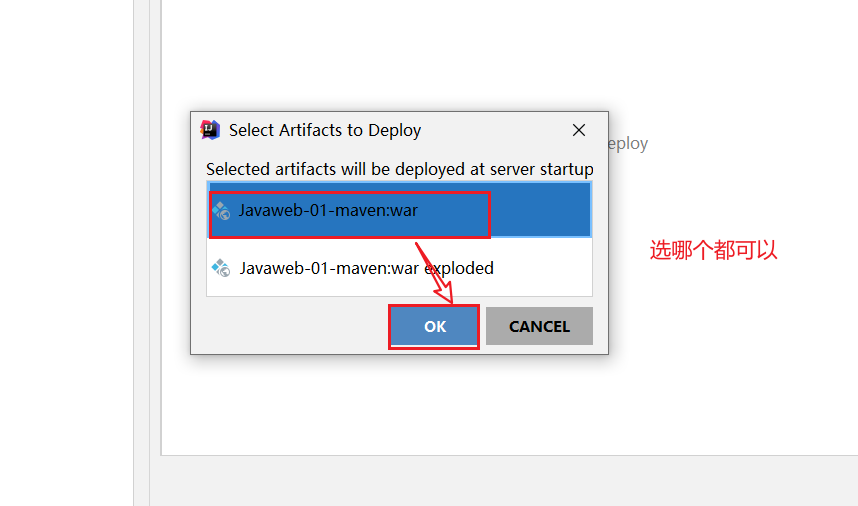
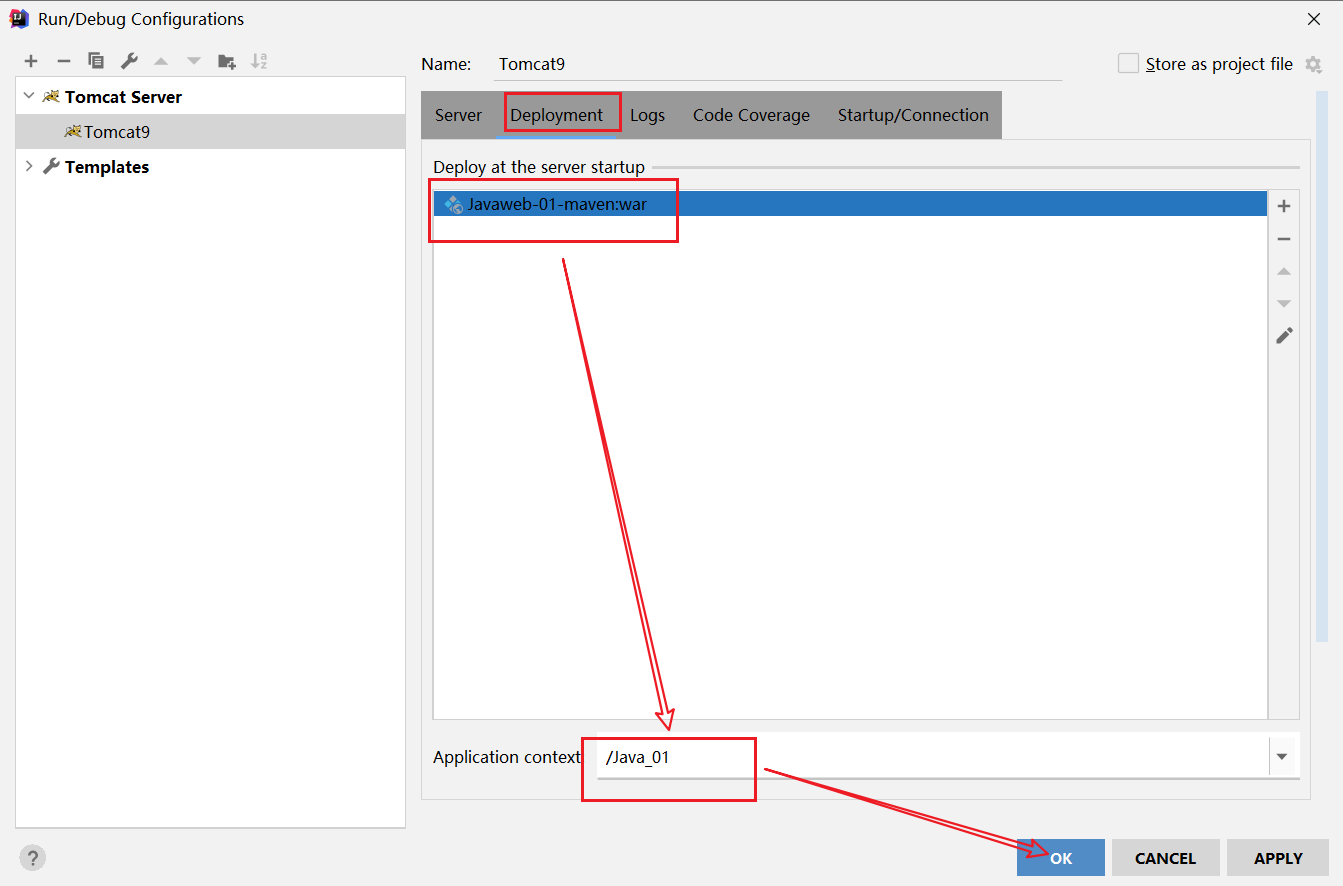
中间的地址,可以自定义。它是在浏览器中的访问地址。
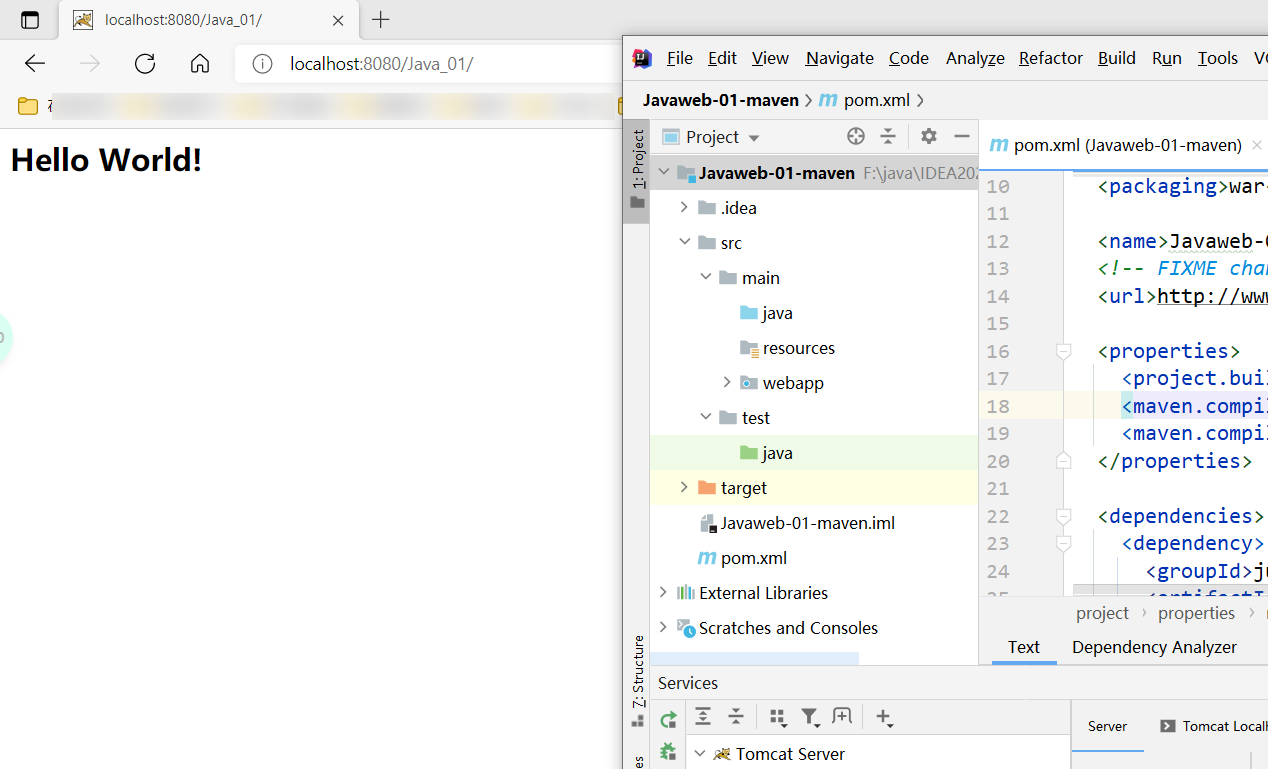
10. pom文件
pom.xml是Maven的核心配置文件。
1
2
3
4
5
6
7
8
9
10
11
12
13
14
15
16
17
18
19
20
21
22
23
24
25
26
27
28
29
30
31
32
33
34
35
36
37
38
39
40
41
42
43
44
45
46
47
48
49
50
51
52
53
54
55
56
57
58
59
60
61
62
63
64
65
66
67
68
69
70
71
72
73
74
75
76
77
78
79
80
81
| <?xml version="1.0" encoding="UTF-8"?>
<project xmlns="http://maven.apache.org/POM/4.0.0" xmlns:xsi="http://www.w3.org/2001/XMLSchema-instance"
xsi:schemaLocation="http://maven.apache.org/POM/4.0.0 http://maven.apache.org/xsd/maven-4.0.0.xsd">
<modelVersion>4.0.0</modelVersion>
<groupId>com.github</groupId>
<artifactId>Javaweb-01-maven</artifactId>
<version>1.0-SNAPSHOT</version>
<packaging>war</packaging>
<properties>
<project.build.sourceEncoding>UTF-8</project.build.sourceEncoding>
<maven.compiler.source>1.8</maven.compiler.source>
<maven.compiler.target>1.8</maven.compiler.target>
</properties>
<dependencies>
<dependency>
<groupId>junit</groupId>
<artifactId>junit</artifactId>
<version>4.11</version>
<scope>test</scope>
</dependency>
<dependency>
<groupId>javax.servlet</groupId>
<artifactId>javax.servlet-api</artifactId>
<version>4.0.1</version>
<scope>provided</scope>
</dependency>
</dependencies>
<build>
<finalName>Javaweb-01-maven</finalName>
<pluginManagement>
<plugins>
<plugin>
<artifactId>maven-clean-plugin</artifactId>
<version>3.1.0</version>
</plugin>
<plugin>
<artifactId>maven-resources-plugin</artifactId>
<version>3.0.2</version>
</plugin>
<plugin>
<artifactId>maven-compiler-plugin</artifactId>
<version>3.8.0</version>
</plugin>
<plugin>
<artifactId>maven-surefire-plugin</artifactId>
<version>2.22.1</version>
</plugin>
<plugin>
<artifactId>maven-war-plugin</artifactId>
<version>3.2.2</version>
</plugin>
<plugin>
<artifactId>maven-install-plugin</artifactId>
<version>2.5.2</version>
</plugin>
<plugin>
<artifactId>maven-deploy-plugin</artifactId>
<version>2.8.2</version>
</plugin>
</plugins>
</pluginManagement>
</build>
</project>
|
1
2
3
4
5
6
7
8
9
10
11
12
13
14
15
16
17
18
19
20
21
22
23
24
25
26
| <?xml version="1.0" encoding="UTF-8"?>
<project xmlns="http://maven.apache.org/POM/4.0.0"
xmlns:xsi="http://www.w3.org/2001/XMLSchema-instance"
xsi:schemaLocation="http://maven.apache.org/POM/4.0.0 http://maven.apache.org/xsd/maven-4.0.0.xsd">
<modelVersion>4.0.0</modelVersion>
<groupId>com.github</groupId>
<artifactId>JavaWeb-01-Maven02</artifactId>
<version>1.0-SNAPSHOT</version>
<dependencies>
<dependency>
<groupId>junit</groupId>
<artifactId>junit</artifactId>
<version>4.11</version>
<scope>test</scope>
</dependency>
<dependency>
<groupId>org.springframework</groupId>
<artifactId>spring-webmvc</artifactId>
<version>5.1.9.RELEASE</version>
</dependency>
</dependencies>
</project>
|
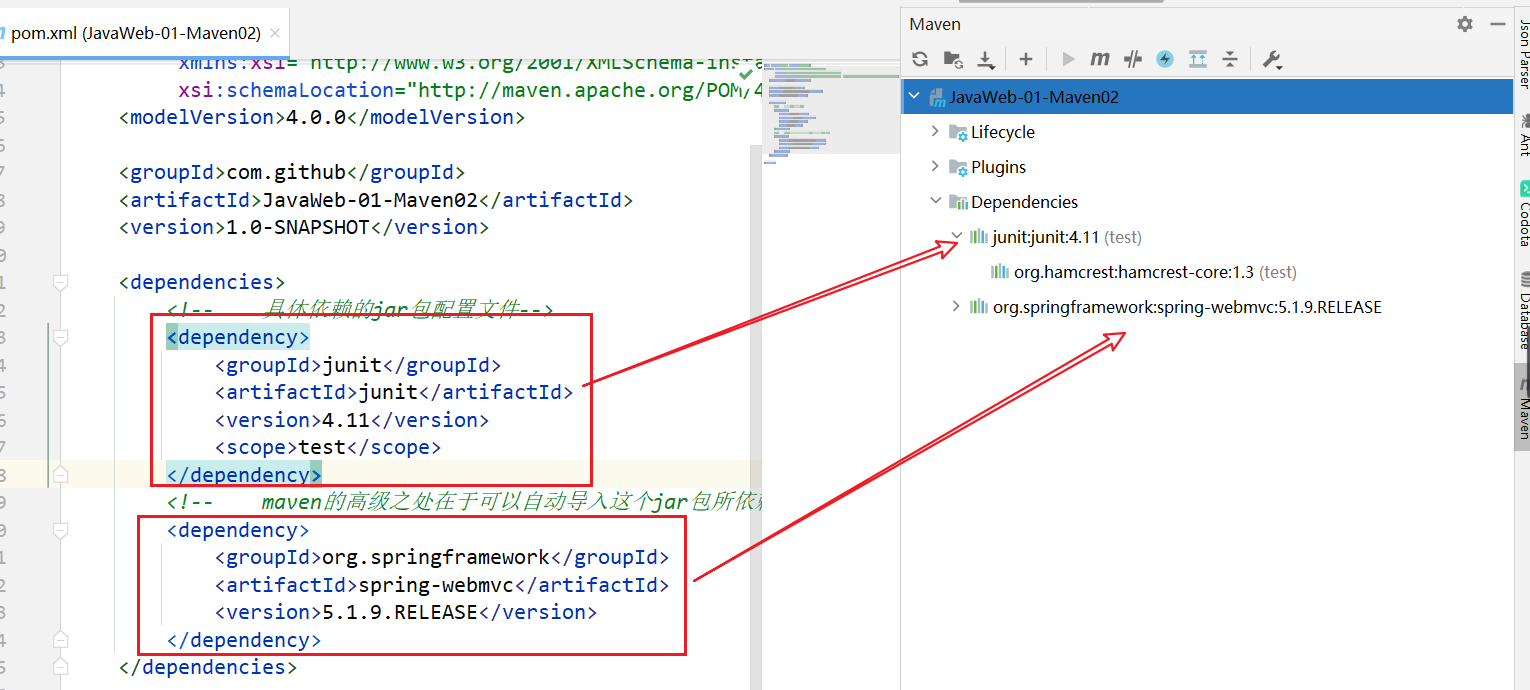
maven由于他的约定大于配置,我们之后可以能遇到我们写的配置文件,无法被导出或者生效的问题,解决方案:
1
2
3
4
5
6
7
8
9
10
11
12
13
14
15
16
17
18
19
20
21
|
<build>
<resources>
<resource>
<directory>src/main/resources</directory>
<includes>
<include>**/*.properties</include>
<include>**/*.xml</include>
</includes>
<filtering>true</filtering>
</resource>
<resource>
<directory>src/main/java</directory>
<includes>
<include>**/*.properties</include>
<include>**/*.xml</include>
</includes>
<filtering>true</filtering>
</resource>
</resources>
</build>
|
IDEA操作
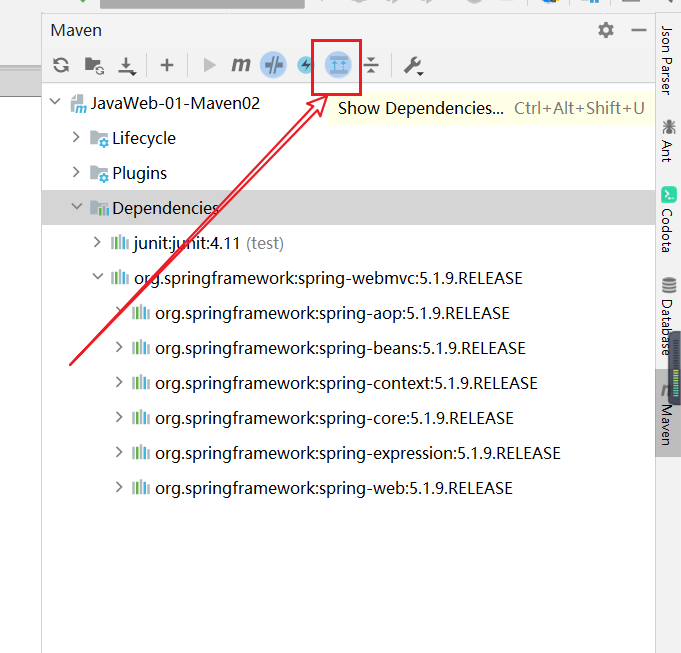
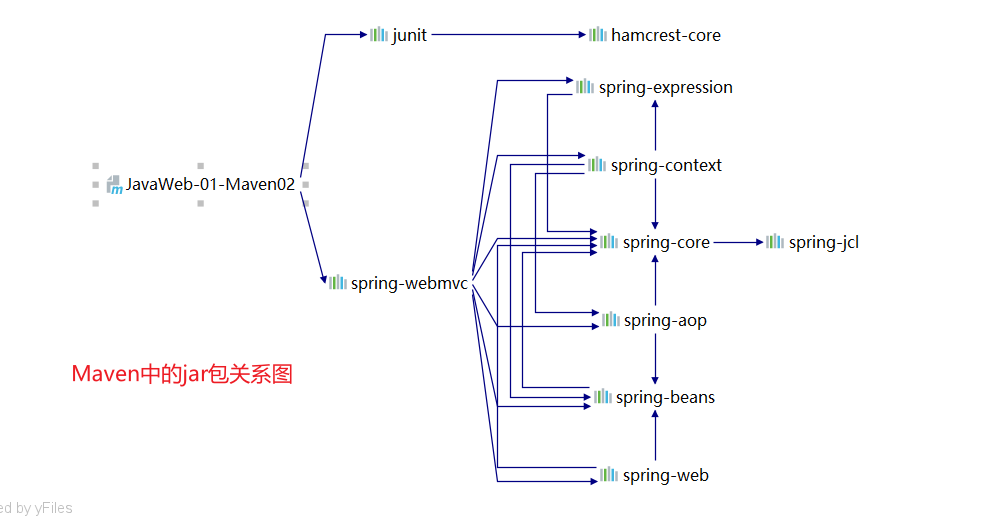
11. 解决遇到的问题
Tomcat闪退
IDEA中每次都要重复配置Maven;在IDEA中的全局默认配置中去配置。
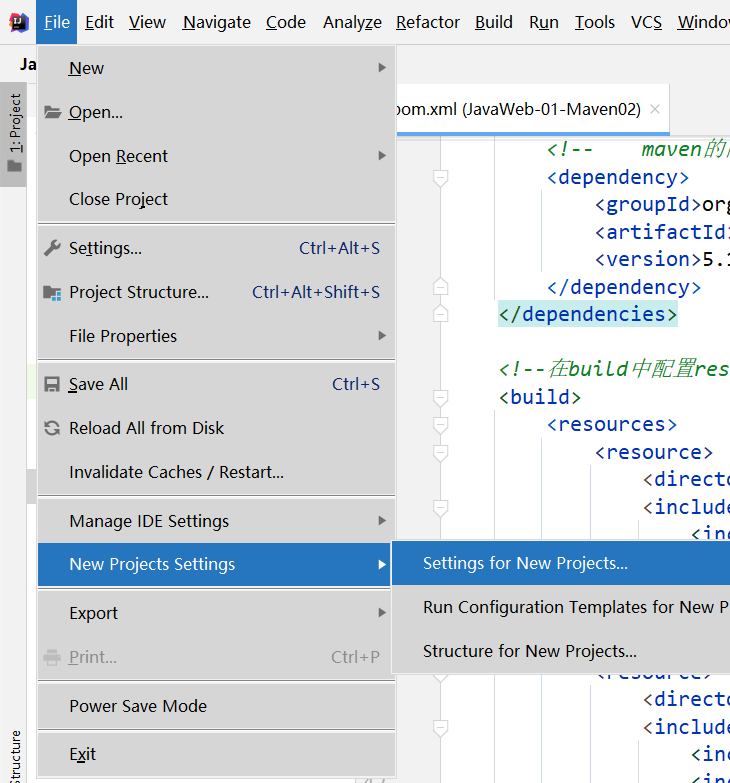
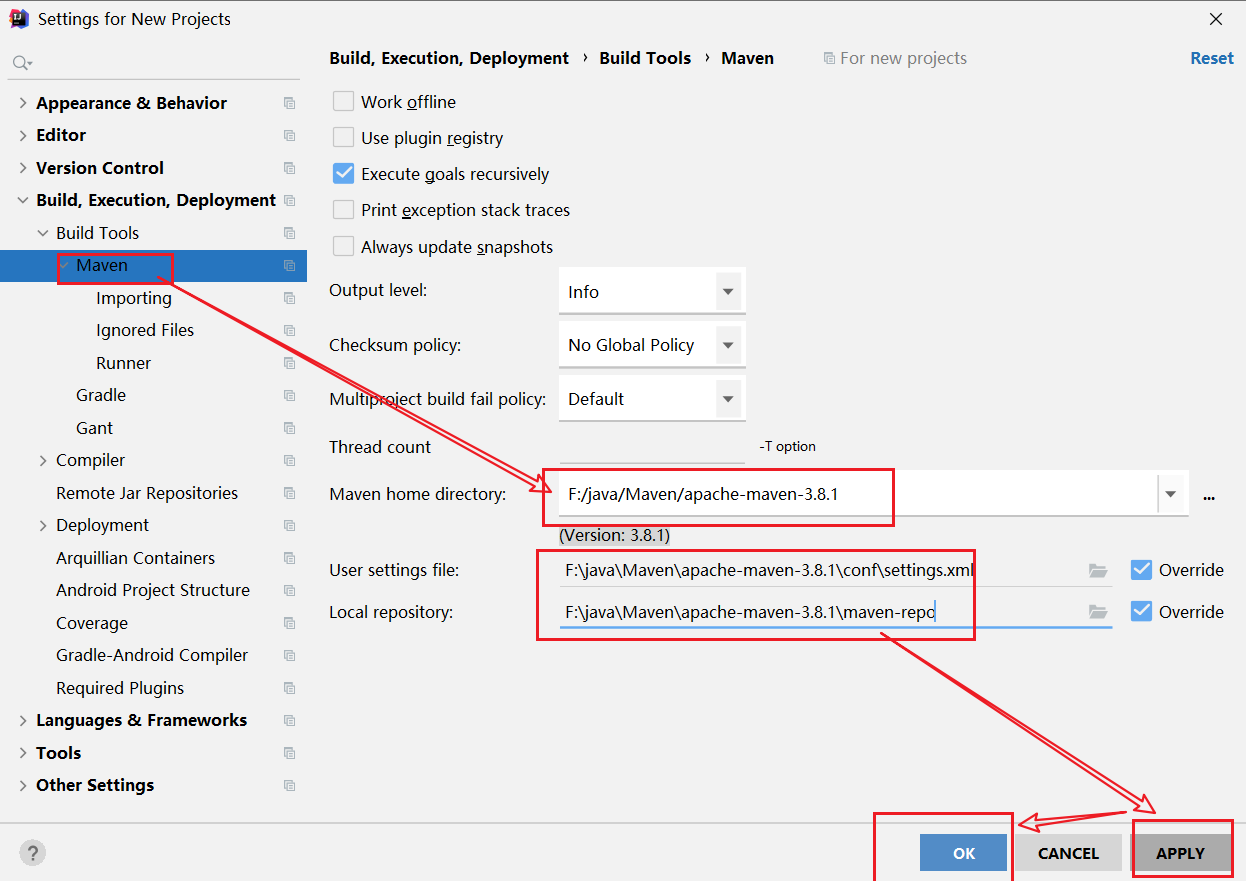
maven默认web项目中的web.xml版本问题。
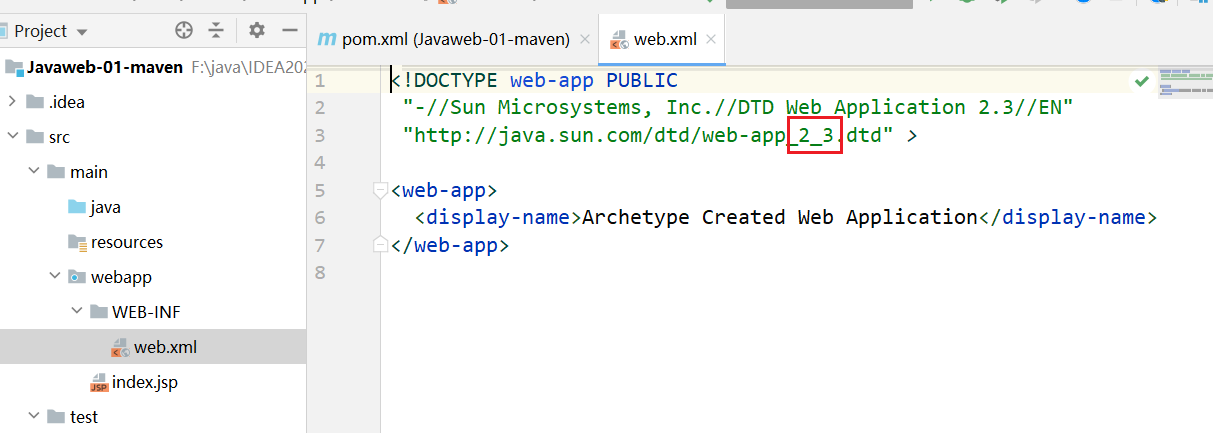
替换为webapp4.0版本和tomcat一致。
1
2
3
4
5
6
7
8
9
| <?xml version="1.0" encoding="UTF-8"?>
<web-app xmlns="http://xmlns.jcp.org/xml/ns/javaee"
xmlns:xsi="http://www.w3.org/2001/XMLSchema-instance"
xsi:schemaLocation="http://xmlns.jcp.org/xml/ns/javaee
http://xmlns.jcp.org/xml/ns/javaee/web-app_4_0.xsd"
version="4.0"
metadata-complete="true">
</web-app>
|
Maven仓库的使用。
地址:https://mvnrepository.com/

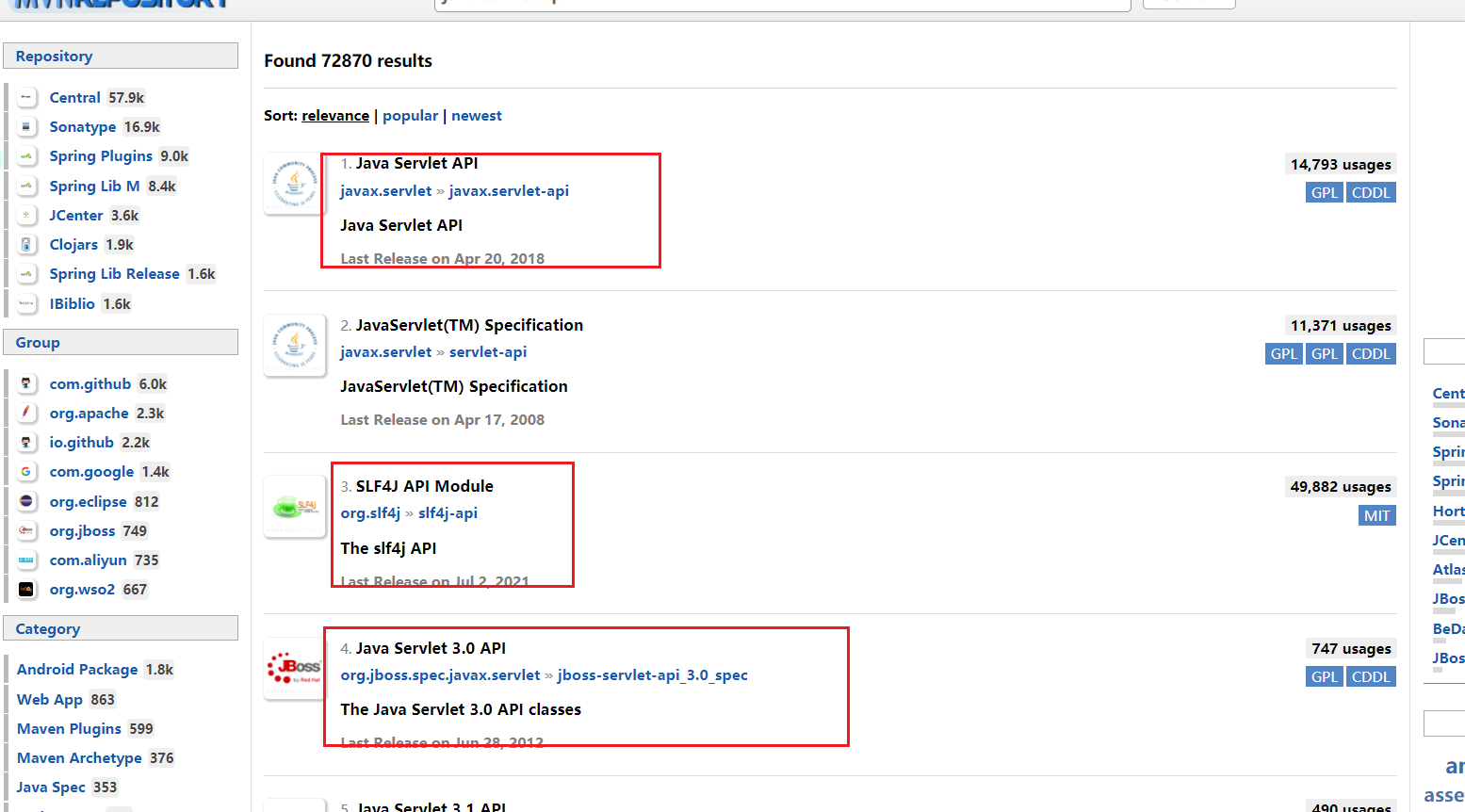
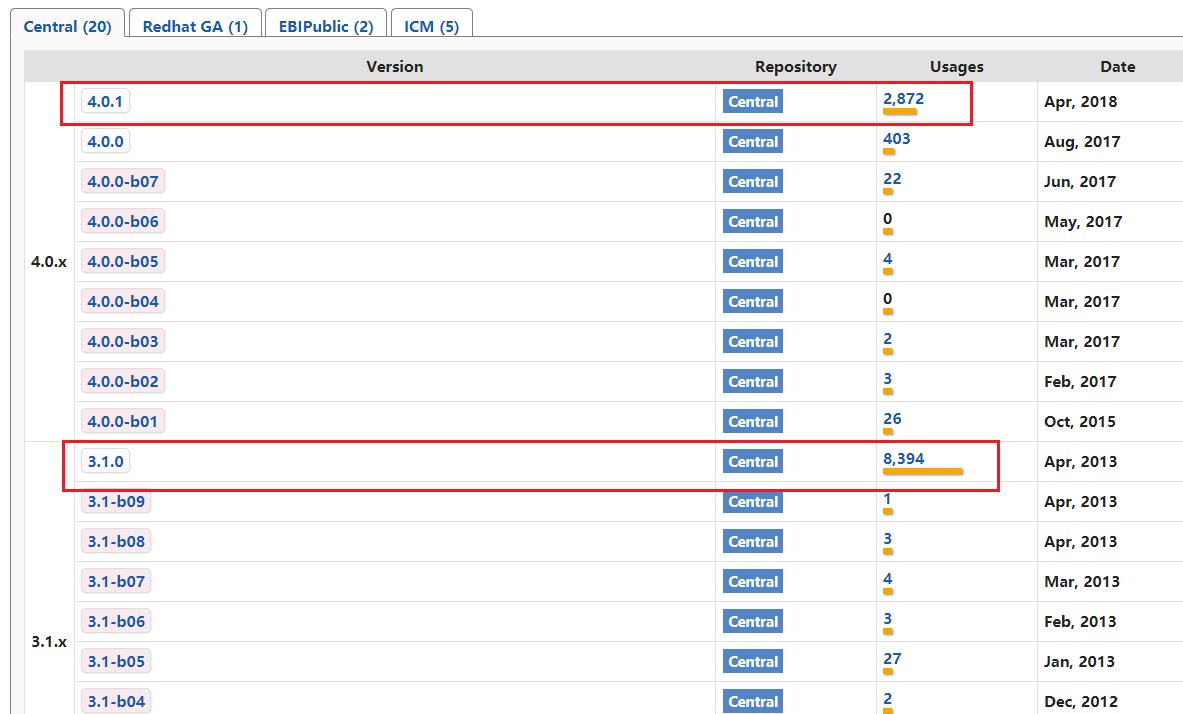
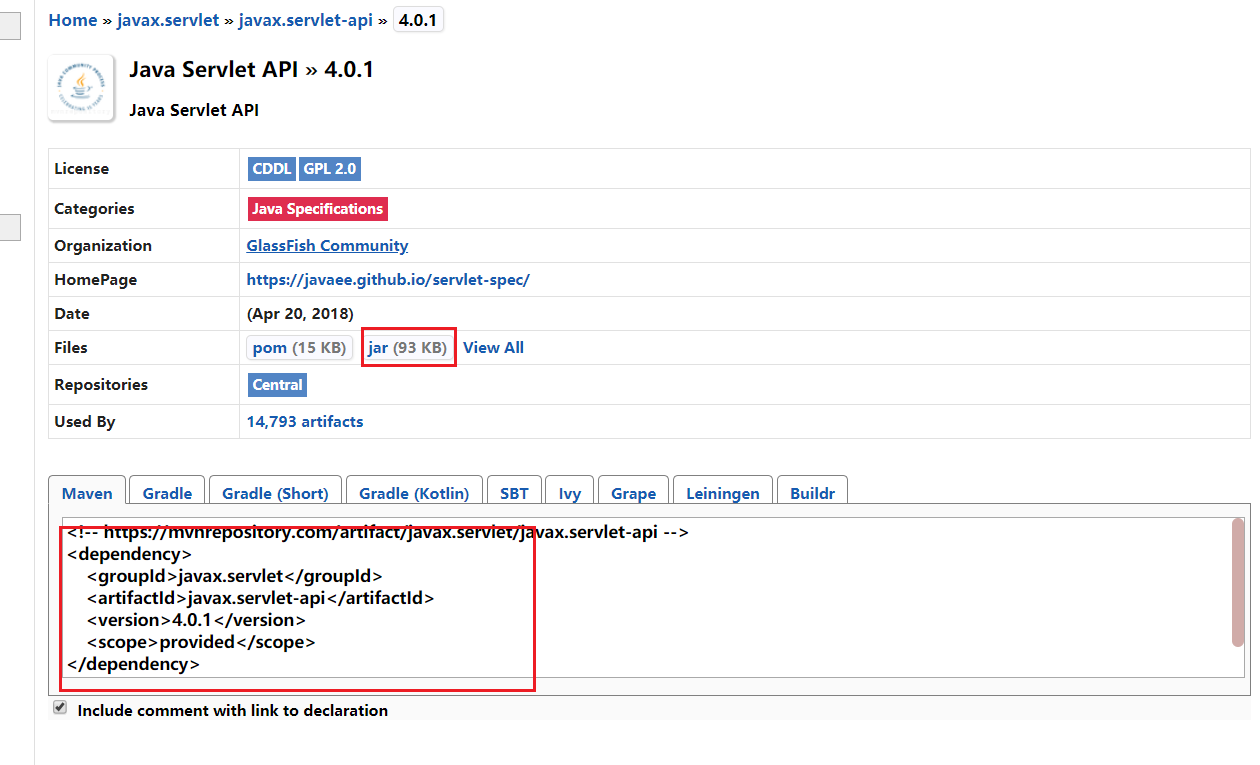
6.Servlet
1.Servlet简介
Servlet就是sun公司开发动态web的一门技术。
Sun在这些API中提供一个接口叫做:Servlet,如果你想开发一个Servlet程序,只需要完成两个小步骤:
- 编写一个类,实现Servlet接口。
- 把开发好的Java类部署到web服务器中。
把实现了Servlet接口的Java程序叫做,Servlet。
2.HelloServlet
Serlvet接口Sun公司有两个默认的实现类:HttpServlet,GenericServlet。
构建一个普通的Maven项目,删掉里面的src目录,后面的笔记就在这个项目里面建立Moudel;这个空的工程就是Maven主工程;之后在其中建立一个maven子项目。
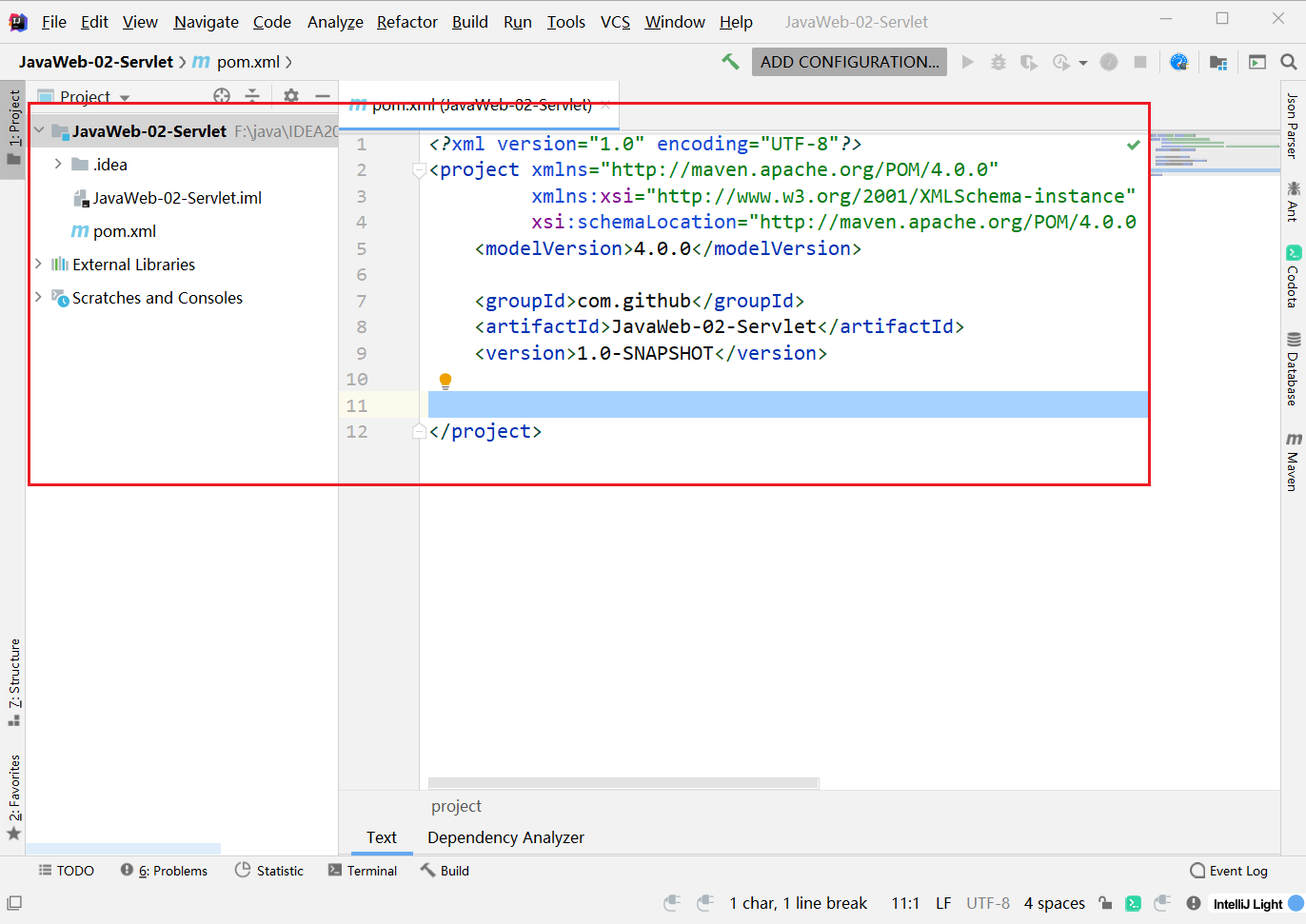
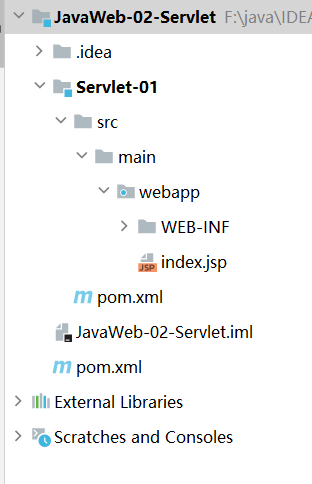
关于Maven父子工程的理解:
1
2
3
| <modules>
<module>Servlet-01</module>
</modules>
|
1
2
3
4
5
| <parent>
<artifactId>JavaWeb-02-Servlet</artifactId>
<groupId>com.github</groupId>
<version>1.0-SNAPSHOT</version>
</parent>
|
Maven环境优化。
修改web.xml为最新的。
1
2
3
4
5
6
7
8
9
| <?xml version="1.0" encoding="UTF-8"?>
<web-app xmlns="http://xmlns.jcp.org/xml/ns/javaee"
xmlns:xsi="http://www.w3.org/2001/XMLSchema-instance"
xsi:schemaLocation="http://xmlns.jcp.org/xml/ns/javaee
http://xmlns.jcp.org/xml/ns/javaee/web-app_4_0.xsd"
version="4.0"
metadata-complete="true">
</web-app>
|
将maven的结构搭建完整。
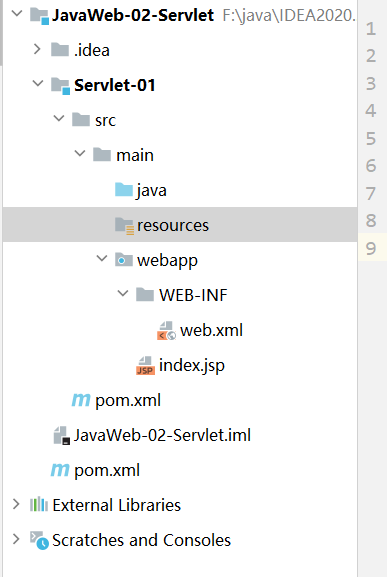
编写一个Servlet程序。

编写一个普通类。
实现Servlet接口,这里我们直接继承HttpServlet
1
2
3
4
5
6
7
8
9
10
11
12
13
14
15
16
17
18
19
20
21
22
23
| package com.github.servlet;
import javax.servlet.ServletException;
import javax.servlet.http.HttpServlet;
import javax.servlet.http.HttpServletRequest;
import javax.servlet.http.HttpServletResponse;
import java.io.IOException;
import java.io.PrintWriter;
public class HelloServlet extends HttpServlet {
@Override
protected void doGet(HttpServletRequest req, HttpServletResponse resp) throws ServletException, IOException {
PrintWriter writer = resp.getWriter();
writer.print("Hello,Serlvet");
}
@Override
protected void doPost(HttpServletRequest req, HttpServletResponse resp) throws ServletException, IOException {
super.doPost(req, resp);
}
}
|
编写Servlet的映射
- 为什么需要映射:我们写的是JAVA程序,但是要通过浏览器访问,而浏览器需要连接web服务器,所以我们需要再web服务中注册我们写的Servlet,还需给他一个浏览器能够访问的路径;
1
2
3
4
5
6
7
8
9
10
|
<servlet>
<servlet-name>hello</servlet-name>
<servlet-class>com.github.servlet.HelloServlet</servlet-class>
</servlet>
<servlet-mapping>
<servlet-name>hello</servlet-name>
<url-pattern>/hello</url-pattern>
</servlet-mapping>
|
配置Tomcat
启动测试,OK!
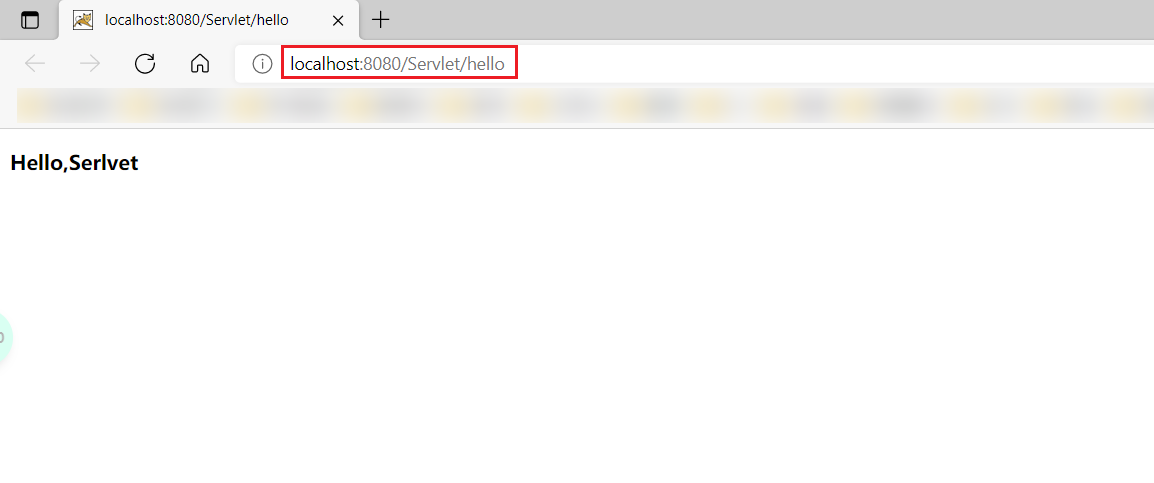
3.Servlet原理
- Servlet是由Web服务器调用,web服务器在收到浏览器请求之后,会:
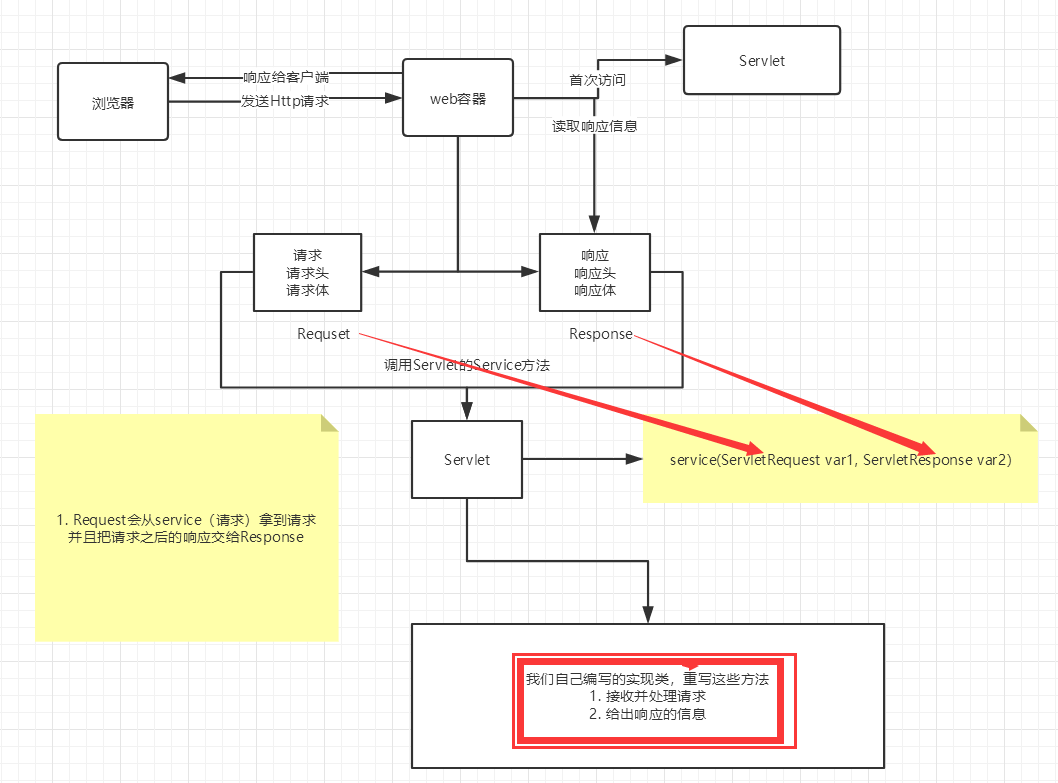
4.Mapping问题
一个Servlet可以指定一个映射路径。
1
2
3
4
| <servlet-mapping>
<servlet-name>hello</servlet-name>
<url-pattern>/hello</url-pattern>
</servlet-mapping>
|
一个Servlet可以指定多个映射路径。
1
2
3
4
5
6
7
8
9
10
11
12
13
14
15
16
17
18
19
20
| <servlet-mapping>
<servlet-name>hello</servlet-name>
<url-pattern>/hello</url-pattern>
</servlet-mapping>
<servlet-mapping>
<servlet-name>hello</servlet-name>
<url-pattern>/hello2</url-pattern>
</servlet-mapping>
<servlet-mapping>
<servlet-name>hello</servlet-name>
<url-pattern>/hello3</url-pattern>
</servlet-mapping>
<servlet-mapping>
<servlet-name>hello</servlet-name>
<url-pattern>/hello4</url-pattern>
</servlet-mapping>
<servlet-mapping>
<servlet-name>hello</servlet-name>
<url-pattern>/hello5</url-pattern>
</servlet-mapping>
|
一个Servlet可以指定通用映射路径。
1
2
3
4
| <servlet-mapping>
<servlet-name>hello</servlet-name>
<url-pattern>/hello/*</url-pattern>
</servlet-mapping>
|
默认请求路径。
1
2
3
4
5
|
<servlet-mapping>
<servlet-name>hello</servlet-name>
<url-pattern>/*</url-pattern>
</servlet-mapping>
|
指定一些后缀或者前缀等等….
1
2
3
4
5
6
7
8
|
<servlet-mapping>
<servlet-name>hello</servlet-name>
<url-pattern>*.github</url-pattern>
</servlet-mapping>
|
优先级问题。
- 指定了固有的映射路径优先级最高,如果找不到就会走默认的处理请求;
1
2
3
4
5
6
7
8
9
10
11
12
13
14
15
16
17
18
19
20
21
22
23
| package com.github.servlet;
import javax.servlet.ServletException;
import javax.servlet.http.HttpServletRequest;
import javax.servlet.http.HttpServletResponse;
import java.io.IOException;
import java.io.PrintWriter;
public class ErrorServelt extends HelloServlet{
@Override
protected void doGet(HttpServletRequest req, HttpServletResponse resp) throws ServletException, IOException {
resp.setContentType("text/html");
resp.setCharacterEncoding("utf-8");
PrintWriter writer = resp.getWriter();
writer.println("<h1>404</h1>");
}
@Override
protected void doPost(HttpServletRequest req, HttpServletResponse resp) throws ServletException, IOException {
super.doPost(req, resp);
}
}
|
1
2
3
4
5
6
7
8
9
|
<servlet>
<servlet-name>error</servlet-name>
<servlet-class>com.github.servlet.ErrorServelt</servlet-class>
</servlet>
<servlet-mapping>
<servlet-name>error</servlet-name>
<url-pattern>/*</url-pattern>
</servlet-mapping>
|
5.ServletContext
- web容器在启动的时候,它会为每个web程序都创建一个对应的ServletContext对象,它代表了当前的web应用;
1.共享数据
- 在这个Servlet中保存的数据,可以在另外一个servlet中拿到;
1
2
3
4
5
6
7
8
9
10
11
12
13
14
15
16
17
18
19
20
21
22
23
24
25
| package com.github.servlet;
import javax.servlet.ServletContext;
import javax.servlet.ServletException;
import javax.servlet.http.HttpServlet;
import javax.servlet.http.HttpServletRequest;
import javax.servlet.http.HttpServletResponse;
import java.io.IOException;
public class HelloServlet extends HttpServlet {
@Override
protected void doGet(HttpServletRequest req, HttpServletResponse resp) throws ServletException, IOException {
ServletContext context = this.getServletContext();
String name = "学习超好";
context.setAttribute("name",name);
System.out.println("Hello");
}
}
|
1
2
3
4
5
6
7
8
9
10
11
12
13
14
15
16
17
18
19
20
21
22
23
24
25
26
27
| package com.github.servlet;
import javax.servlet.ServletContext;
import javax.servlet.ServletException;
import javax.servlet.http.HttpServlet;
import javax.servlet.http.HttpServletRequest;
import javax.servlet.http.HttpServletResponse;
import java.io.IOException;
public class GetServlet extends HttpServlet {
@Override
protected void doGet(HttpServletRequest req, HttpServletResponse resp) throws ServletException, IOException {
ServletContext context = this.getServletContext();
String name = (String)context.getAttribute("name");
resp.setContentType("text/html");
resp.setCharacterEncoding("utf-8");
resp.getWriter().print("名字:"+name);
}
@Override
protected void doPost(HttpServletRequest req, HttpServletResponse resp) throws ServletException, IOException {
super.doPost(req, resp);
}
}
|
1
2
3
4
5
6
7
8
9
10
11
12
13
14
15
16
17
| <servlet>
<servlet-name>hello</servlet-name>
<servlet-class>com.github.servlet.HelloServlet</servlet-class>
</servlet>
<servlet-mapping>
<servlet-name>hello</servlet-name>
<url-pattern>/hello</url-pattern>
</servlet-mapping>
<servlet>
<servlet-name>getc</servlet-name>
<servlet-class>com.github.servlet.GetServlet</servlet-class>
</servlet>
<servlet-mapping>
<servlet-name>getc</servlet-name>
<url-pattern>/getc</url-pattern>
</servlet-mapping>
|
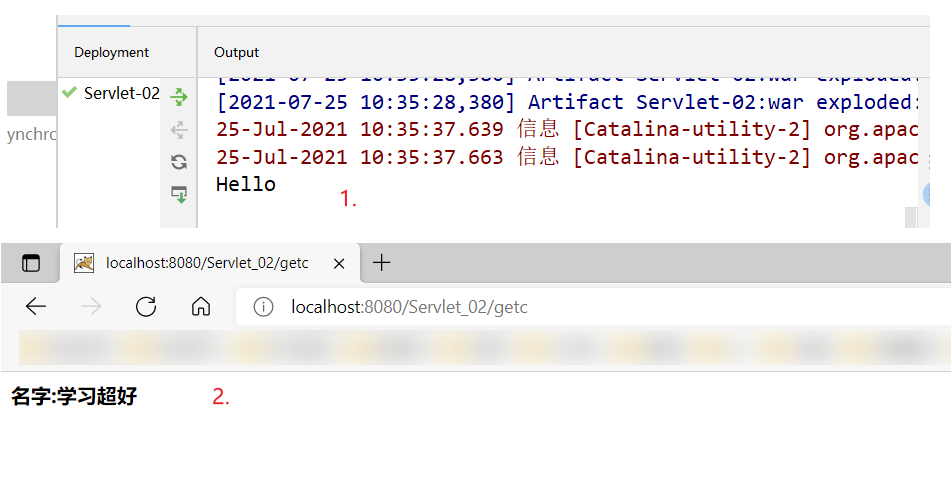
Java-IDEA2020-IDEA或者启动Tomcat控制台中文乱码解决

2.获取初始化参数
1
2
3
4
5
6
7
8
9
10
11
12
13
14
|
<context-param>
<param-name>url</param-name>
<param-value>jdbc:mysql://localhost:3306/mybatis</param-value>
</context-param>
<servlet>
<servlet-name>gp</servlet-name>
<servlet-class>com.github.servlet.ServletDemo03</servlet-class>
</servlet>
<servlet-mapping>
<servlet-name>gp</servlet-name>
<url-pattern>/gp</url-pattern>
</servlet-mapping>
|
1
2
3
4
5
6
7
8
9
10
11
12
13
14
15
16
17
18
19
20
21
22
| package com.github.servlet;
import javax.servlet.ServletContext;
import javax.servlet.ServletException;
import javax.servlet.http.HttpServlet;
import javax.servlet.http.HttpServletRequest;
import javax.servlet.http.HttpServletResponse;
import java.io.IOException;
public class ServletDemo03 extends HttpServlet {
@Override
protected void doGet(HttpServletRequest req, HttpServletResponse resp) throws ServletException, IOException {
ServletContext context = this.getServletContext();
String url = context.getInitParameter("url");
resp.getWriter().print(url);
}
@Override
protected void doPost(HttpServletRequest req, HttpServletResponse resp) throws ServletException, IOException {
super.doPost(req, resp);
}
}
|
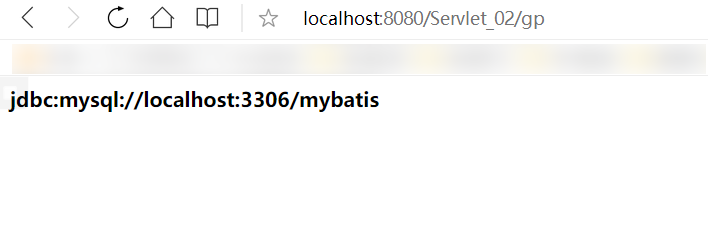
3.请求转发
1
2
3
4
5
6
7
8
9
10
11
12
13
14
15
16
17
18
19
20
21
22
23
24
25
26
27
28
29
| package com.github.servlet;
import javax.servlet.RequestDispatcher;
import javax.servlet.ServletContext;
import javax.servlet.ServletException;
import javax.servlet.http.HttpServlet;
import javax.servlet.http.HttpServletRequest;
import javax.servlet.http.HttpServletResponse;
import java.io.IOException;
public class ServletDemo04 extends HttpServlet {
@Override
protected void doGet(HttpServletRequest req, HttpServletResponse resp) throws ServletException, IOException {
ServletContext context = this.getServletContext();
System.out.println("进入ServletDemo04文件!");
context.getRequestDispatcher("/gp").forward(req,resp);
}
@Override
protected void doPost(HttpServletRequest req, HttpServletResponse resp) throws ServletException, IOException {
super.doPost(req, resp);
}
}
|
1
2
3
4
5
6
7
8
| <servlet>
<servlet-name>gp02</servlet-name>
<servlet-class>com.github.servlet.ServletDemo04</servlet-class>
</servlet>
<servlet-mapping>
<servlet-name>gp02</servlet-name>
<url-pattern>/gp02</url-pattern>
</servlet-mapping>
|

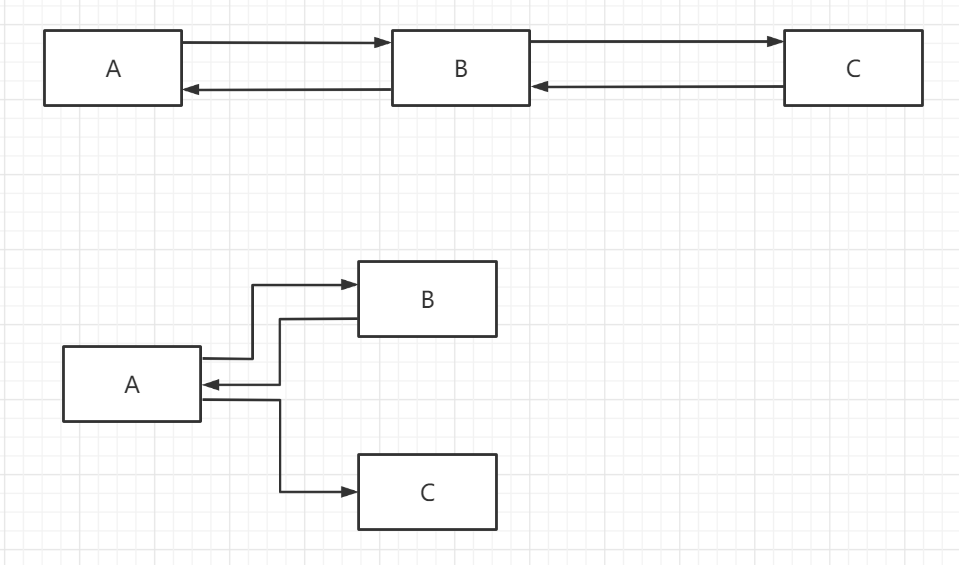
4.读取资源文件
- Properties
- 在java目录下新建properties
- 在resources目录下新建properties
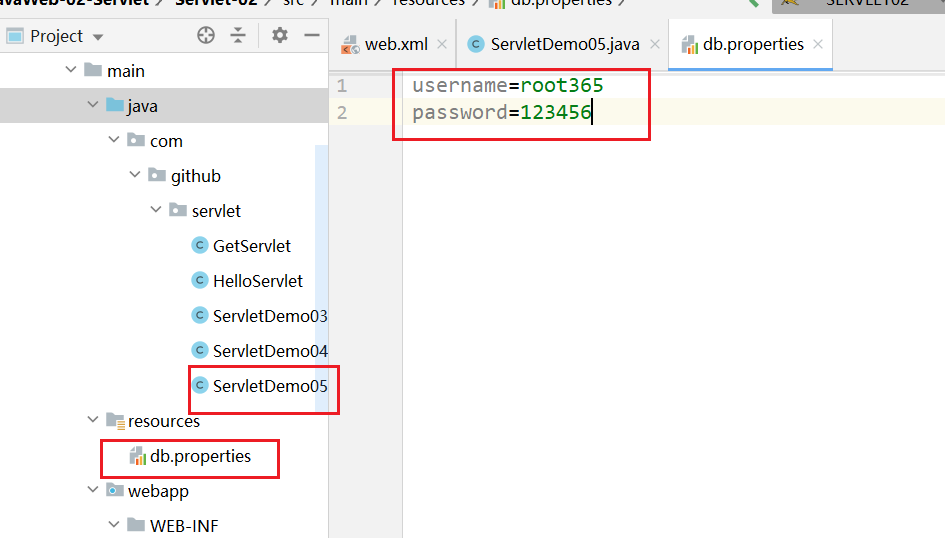
- 发现:都被打包到了同一个路径下:classes,我们俗称这个路径为classpath:
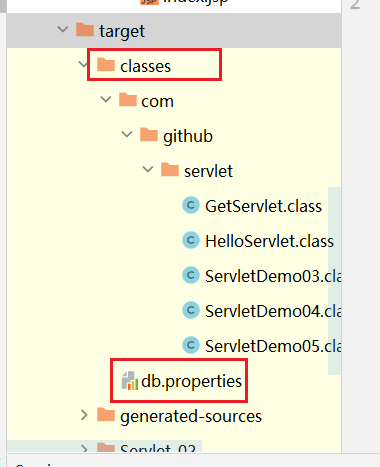
1
2
| username=root365
password=123456
|
1
2
3
4
5
6
7
8
9
10
11
12
13
14
15
16
17
18
19
20
21
22
23
24
25
26
27
28
| package com.github.servlet;
import javax.servlet.ServletException;
import javax.servlet.http.HttpServlet;
import javax.servlet.http.HttpServletRequest;
import javax.servlet.http.HttpServletResponse;
import java.io.IOException;
import java.io.InputStream;
import java.util.Properties;
public class ServletDemo05 extends HttpServlet {
@Override
protected void doGet(HttpServletRequest req, HttpServletResponse resp) throws IOException {
InputStream is = this.getServletContext().getResourceAsStream("/WEB-INF/classes/com/github/servlet/aa.properties");
Properties prop = new Properties();
prop.load(is);
String user = prop.getProperty("username");
String pwd = prop.getProperty("password");
resp.getWriter().print(user+":"+pwd);
}
@Override
protected void doPost(HttpServletRequest req, HttpServletResponse resp) throws ServletException, IOException {
super.doPost(req, resp);
}
}
|
1
2
3
4
5
6
7
8
| <servlet>
<servlet-name>db</servlet-name>
<servlet-class>com.github.servlet.ServletDemo05</servlet-class>
</servlet>
<servlet-mapping>
<servlet-name>db</servlet-name>
<url-pattern>/db</url-pattern>
</servlet-mapping>
|
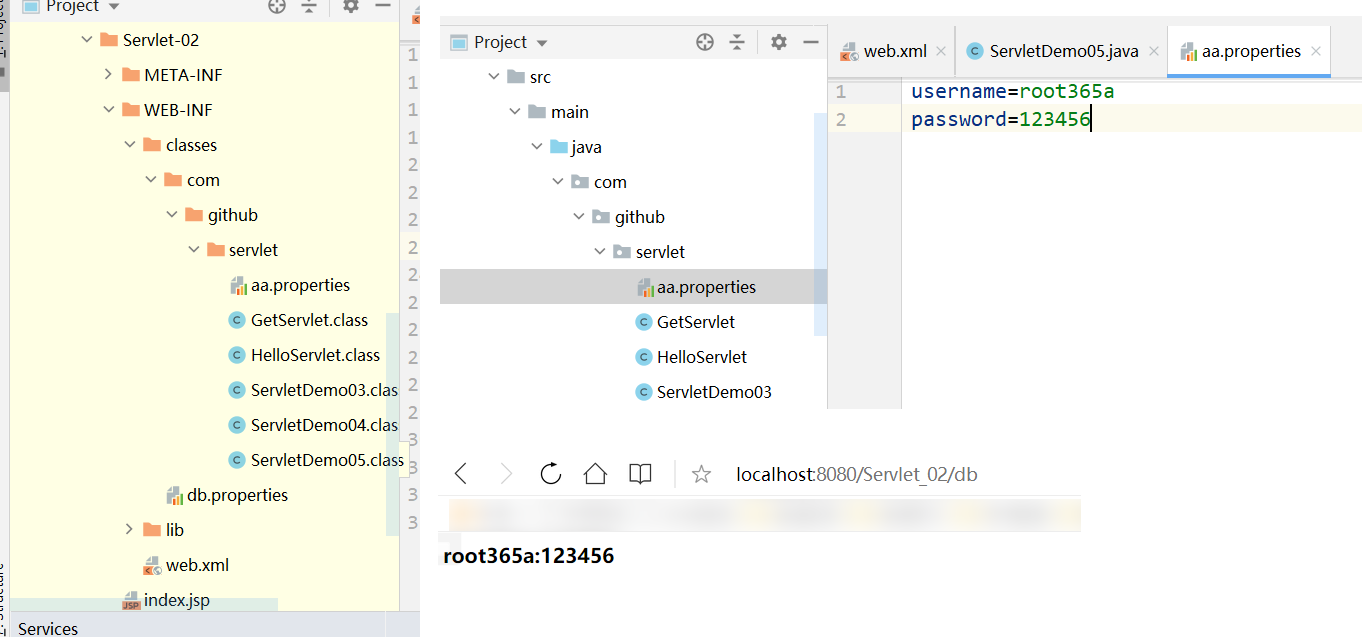
6.HttpServletResponse
- web服务器接收到客户端的http请求,针对这个请求,分别创建一个代表请求的HttpServletRequest对象,代表响应的一个HttpServletResponse;
- 如果要获取客户端请求过来的参数:找HttpServletRequest;
- 如果要给客户端响应一些信息:找HttpServletResponse。
1.简单分类
1
2
| ServletOutputStream getOutputStream() throws IOException;
PrintWriter getWriter() throws IOException;
|
1
2
3
4
5
6
7
8
9
10
11
12
13
14
15
16
17
18
19
| void setCharacterEncoding(String var1);
void setContentLength(int var1);
void setContentLengthLong(long var1);
void setContentType(String var1);
void setDateHeader(String var1, long var2);
void addDateHeader(String var1, long var2);
void setHeader(String var1, String var2);
void addHeader(String var1, String var2);
void setIntHeader(String var1, int var2);
void addIntHeader(String var1, int var2);
|
1
2
3
4
5
6
7
8
9
10
11
12
13
14
15
16
17
18
19
20
21
22
23
24
25
26
27
28
29
30
31
32
33
34
35
36
37
38
39
40
41
| int SC_CONTINUE = 100;
int SC_SWITCHING_PROTOCOLS = 101;
int SC_OK = 200;
int SC_CREATED = 201;
int SC_ACCEPTED = 202;
int SC_NON_AUTHORITATIVE_INFORMATION = 203;
int SC_NO_CONTENT = 204;
int SC_RESET_CONTENT = 205;
int SC_PARTIAL_CONTENT = 206;
int SC_MULTIPLE_CHOICES = 300;
int SC_MOVED_PERMANENTLY = 301;
int SC_MOVED_TEMPORARILY = 302;
int SC_FOUND = 302;
int SC_SEE_OTHER = 303;
int SC_NOT_MODIFIED = 304;
int SC_USE_PROXY = 305;
int SC_TEMPORARY_REDIRECT = 307;
int SC_BAD_REQUEST = 400;
int SC_UNAUTHORIZED = 401;
int SC_PAYMENT_REQUIRED = 402;
int SC_FORBIDDEN = 403;
int SC_NOT_FOUND = 404;
int SC_METHOD_NOT_ALLOWED = 405;
int SC_NOT_ACCEPTABLE = 406;
int SC_PROXY_AUTHENTICATION_REQUIRED = 407;
int SC_REQUEST_TIMEOUT = 408;
int SC_CONFLICT = 409;
int SC_GONE = 410;
int SC_LENGTH_REQUIRED = 411;
int SC_PRECONDITION_FAILED = 412;
int SC_REQUEST_ENTITY_TOO_LARGE = 413;
int SC_REQUEST_URI_TOO_LONG = 414;
int SC_UNSUPPORTED_MEDIA_TYPE = 415;
int SC_REQUESTED_RANGE_NOT_SATISFIABLE = 416;
int SC_EXPECTATION_FAILED = 417;
int SC_INTERNAL_SERVER_ERROR = 500;
int SC_NOT_IMPLEMENTED = 501;
int SC_BAD_GATEWAY = 502;
int SC_SERVICE_UNAVAILABLE = 503;
int SC_GATEWAY_TIMEOUT = 504;
int SC_HTTP_VERSION_NOT_SUPPORTED = 505;
|
2.下载文件
向浏览器输出消息;
下载文件:
- 要获取下载文件的路径;
- 下载的文件名是啥?
- 设置想办法让浏览器能够支持下载我们需要的东西;
- 获取下载文件的输入流;
- 创建缓冲区;
- 获取OutputStream对象;
- 将FileOutputStream流写入到buffer缓冲区;
- 使用OutputStream将缓冲区中的数据输出到客户端!
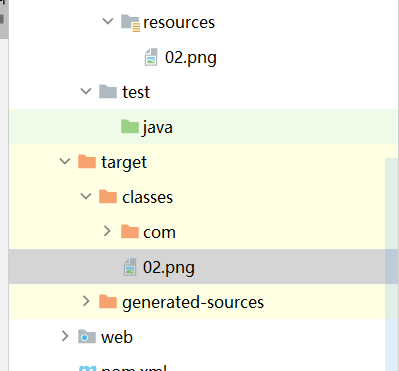
1
2
3
4
5
6
7
8
9
10
11
12
13
14
15
16
17
18
19
20
21
22
23
24
25
26
27
28
29
30
31
32
33
34
35
36
37
38
39
40
41
42
43
44
| package com.github.servlet;
import javax.servlet.ServletException;
import javax.servlet.ServletOutputStream;
import javax.servlet.http.HttpServlet;
import javax.servlet.http.HttpServletRequest;
import javax.servlet.http.HttpServletResponse;
import java.io.FileInputStream;
import java.io.IOException;
import java.net.URLEncoder;
public class FileServlet extends HttpServlet {
@Override
protected void doGet(HttpServletRequest req, HttpServletResponse resp) throws IOException {
String realPath = "F:\\java\\IDEA2020.2\\JavaWeb-02-Servlet\\response\\target\\classes\\02.png";
System.out.println("下载文件的路径:" + realPath);
String fileName = realPath.substring(realPath.lastIndexOf("\\") + 1);
resp.setHeader("Content-Disposition","attachment;filename="+ URLEncoder.encode(fileName,"UTF-8"));
FileInputStream in = new FileInputStream(realPath);
int len = 0;
byte[] buffer = new byte[1024];
ServletOutputStream out = resp.getOutputStream();
while ((len=in.read(buffer)) > 0){
out.write(buffer,0,len);
}
in.close();
out.close();
}
@Override
protected void doPost(HttpServletRequest req, HttpServletResponse resp) throws ServletException, IOException {
super.doPost(req, resp);
}
}
|
1
2
3
4
5
6
7
8
9
10
11
12
13
14
15
16
| <?xml version="1.0" encoding="UTF-8"?>
<web-app xmlns="http://xmlns.jcp.org/xml/ns/javaee"
xmlns:xsi="http://www.w3.org/2001/XMLSchema-instance"
xsi:schemaLocation="http://xmlns.jcp.org/xml/ns/javaee http://xmlns.jcp.org/xml/ns/javaee/web-app_4_0.xsd"
version="4.0">
<servlet>
<servlet-name>/response</servlet-name>
<servlet-class>com.github.servlet.FileServlet</servlet-class>
</servlet>
<servlet-mapping>
<servlet-name>/response</servlet-name>
<url-pattern>/down</url-pattern>
</servlet-mapping>
</web-app>
|

3.验证码功能
- 验证怎么来的?
- 前端实现;
- 后端实现,需要用到 Java 的图片类,生产一个图片。
1
2
3
4
5
6
7
8
9
10
11
12
13
14
15
16
17
18
19
20
21
22
23
24
25
26
27
28
29
30
31
32
33
34
35
36
37
38
39
40
41
42
43
44
45
46
47
48
49
50
51
52
53
54
55
56
57
58
59
| package com.github.servlet;
import javax.imageio.ImageIO;
import javax.servlet.ServletException;
import javax.servlet.http.HttpServlet;
import javax.servlet.http.HttpServletRequest;
import javax.servlet.http.HttpServletResponse;
import java.awt.*;
import java.awt.image.BufferedImage;
import java.io.IOException;
import java.util.Random;
public class ImageServlet extends HttpServlet {
@Override
protected void doGet(HttpServletRequest req, HttpServletResponse resp) throws IOException {
resp.setHeader("refresh","3");
BufferedImage image = new BufferedImage(90,40,BufferedImage.TYPE_INT_RGB);
Graphics2D g = (Graphics2D) image.getGraphics();
g.setColor(Color.white);
g.fillRect(0,0,90,40);
g.setColor(Color.RED);
g.setFont(new Font(null,Font.BOLD,20));
g.drawString(makeNum(),8,30);
resp.setContentType("image/jpeg");
resp.setDateHeader("expires",-1);
resp.setHeader("Cache-Control","no-cache");
resp.setHeader("Pragma","no-cache");
ImageIO.write(image,"jpg", resp.getOutputStream());
}
private String makeNum(){
Random random = new Random();
String num = random.nextInt(9999999) + "";
StringBuffer sb = new StringBuffer();
for (int i = 0; i < 7-num.length() ; i++) {
sb.append("0");
}
num = sb.toString() + num;
return num;
}
@Override
protected void doPost(HttpServletRequest req, HttpServletResponse resp) throws ServletException, IOException {
super.doPost(req, resp);
}
}
|
1
2
3
4
5
6
7
8
| <servlet>
<servlet-name>/../imgs</servlet-name>
<servlet-class>com.github.servlet.ImageServlet</servlet-class>
</servlet>
<servlet-mapping>
<servlet-name>/../imgs</servlet-name>
<url-pattern>/../img</url-pattern>
</servlet-mapping>
|

4.实现重定向
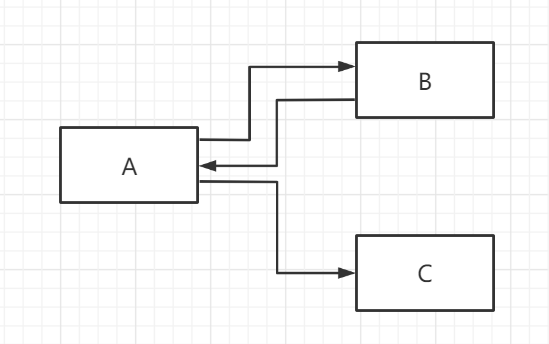
- B一个web资源收到客户端A请求后,B他会通知A客户端去访问另外一个web资源C,这个过程叫
重定向。
常见场景:
1
| void sendRedirect(String var1) throws IOException;
|
1
2
3
4
5
6
7
8
9
10
11
12
13
14
15
16
17
18
19
20
21
22
23
| package com.github.servlet;
import javax.servlet.ServletException;
import javax.servlet.http.HttpServlet;
import javax.servlet.http.HttpServletRequest;
import javax.servlet.http.HttpServletResponse;
import java.io.IOException;
public class RedirectServlet extends HttpServlet {
@Override
protected void doGet(HttpServletRequest req, HttpServletResponse resp) throws ServletException, IOException {
resp.sendRedirect("/response/../img");
}
@Override
protected void doPost(HttpServletRequest req, HttpServletResponse resp) throws ServletException, IOException {
super.doPost(req, resp);
}
}
|
1
2
3
4
5
6
7
8
| <servlet>
<servlet-name>/redirectServlet</servlet-name>
<servlet-class>com.github.servlet.RedirectServlet</servlet-class>
</servlet>
<servlet-mapping>
<servlet-name>/redirectServlet</servlet-name>
<url-pattern>/red</url-pattern>
</servlet-mapping>
|
面试题:请你聊聊重定向和转发的区别?
- 相同点:页面都会实现跳转;
- 不同点:
- 请求转发的时候,url不会产生变化;
- 重定向时候,url地址栏会发生变化;

5.简单实现登录重定向
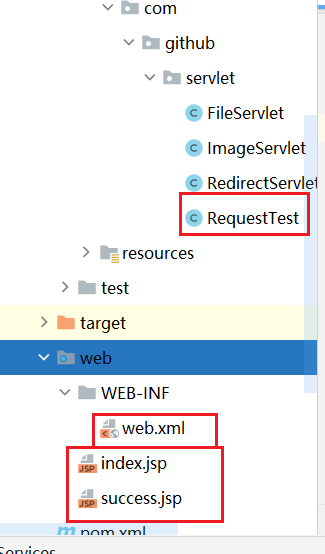
1
2
3
4
5
6
7
8
9
10
11
12
13
14
15
16
17
18
| <%--
这里提交的路径需要寻找到项目的路径
${pageContext.request.contextPath} : 代表当前项目
--%>
<%@ page contentType="text/html;charset=UTF-8" language="java" %>
<html>
<head>
<title>登录</title>
</head>
<body>
<form action="${pageContext.request.contextPath}/login" method="get">
用户名:<input type="text" name="username"><br>
密 码:<input type="password" name="password"><br>
<input type="submit">
</form>
</body>
</html>
|
1
2
3
4
5
6
7
8
9
10
11
12
13
14
15
16
17
18
19
20
21
22
23
24
25
26
27
| package com.github.servlet;
import javax.servlet.ServletException;
import javax.servlet.http.HttpServlet;
import javax.servlet.http.HttpServletRequest;
import javax.servlet.http.HttpServletResponse;
import java.io.IOException;
public class RequestTest extends HttpServlet {
@Override
protected void doGet(HttpServletRequest req, HttpServletResponse resp) throws ServletException, IOException {
String username = req.getParameter("username");
String password = req.getParameter("password");
System.out.println(username+":"+password);
resp.sendRedirect("/response/success.jsp");
}
@Override
protected void doPost(HttpServletRequest req, HttpServletResponse resp) throws ServletException, IOException {
super.doPost(req, resp);
}
}
|
1
2
3
4
5
6
7
8
| <servlet>
<servlet-name>/request</servlet-name>
<servlet-class>com.github.servlet.RequestTest</servlet-class>
</servlet>
<servlet-mapping>
<servlet-name>/request</servlet-name>
<url-pattern>/login</url-pattern>
</servlet-mapping>
|
1
2
3
4
5
6
7
8
9
10
11
| <%@ page contentType="text/html;charset=UTF-8" language="java" %>
<html>
<head>
<title>成功</title>
</head>
<body>
<h1>登录成功!!!</h1>
</body>
</html>
|

7.HttpServletRequest
- HttpServletRequest代表客户端的请求,用户通过Http协议访问服务器,HTTP请求中的所有信息会被封装到HttpServletRequest,通过这个HttpServletRequest的方法,获得客户端的所有信息;
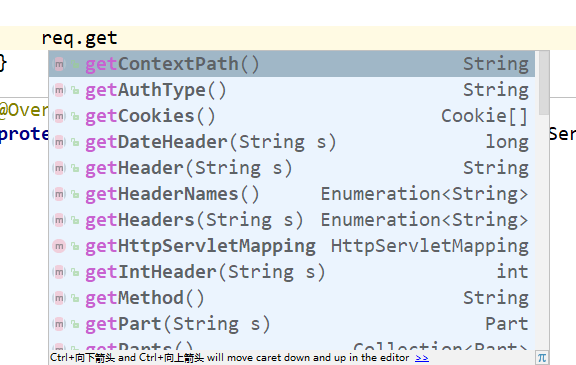
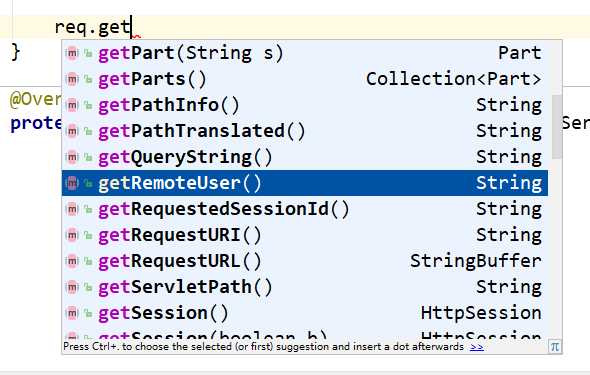
获取参数,请求转发:

1
2
3
4
5
6
7
8
9
10
11
12
13
14
15
16
17
18
19
20
21
22
23
24
25
26
27
28
29
30
31
32
33
34
35
36
| package com.github.servlet;
import javax.servlet.ServletException;
import javax.servlet.http.HttpServlet;
import javax.servlet.http.HttpServletRequest;
import javax.servlet.http.HttpServletResponse;
import java.io.IOException;
import java.util.Arrays;
public class HttpServletRequestTest extends HttpServlet {
@Override
protected void doGet(HttpServletRequest req, HttpServletResponse resp) throws ServletException, IOException {
req.setCharacterEncoding("UTF-8");
resp.setCharacterEncoding("UTF-8");
String username = req.getParameter("username");
String password = req.getParameter("password");
String[] hobbys = req.getParameterValues("hobbies");
System.out.println("=============================");
System.out.println(username);
System.out.println(password);
System.out.println(Arrays.toString(hobbys));
System.out.println("=============================");
System.out.println(req.getContextPath());
req.getRequestDispatcher("/success.jsp").forward(req,resp);
}
@Override
protected void doPost(HttpServletRequest req, HttpServletResponse resp) throws ServletException, IOException {
super.doPost(req, resp);
}
}
|
1
2
3
4
5
6
7
8
| <servlet>
<servlet-name>/hsrt</servlet-name>
<servlet-class>com.github.servlet.HttpServletRequestTest</servlet-class>
</servlet>
<servlet-mapping>
<servlet-name>/hsrt</servlet-name>
<url-pattern>/hsrt</url-pattern>
</servlet-mapping>
|

7.Cookie.Session
1.会话
你能怎么证明你是西开的学生?
1
2
3
4
| 你 西开
1. 发票 西开给你发票
2. 学校登记 西开标记你来过了
|
一个网站,怎么证明你来过?
1
2
3
4
| 客户端 服务端
1. 服务端给客户端一个 信件,客户端下次访问服务端带上信件就可以了; cookie
2. 服务器登记你来过了,下次你来的时候我来匹配你; seesion
|
2.保存会话的两种技术
cookie
session
- 服务器技术,利用这个技术,可以保存用户的会话信息? 我们可以把信息或者数据放在Session中!
常见常见:网站登录之后,你下次不用再登录了,第二次访问直接就上去了!
3.Cookie
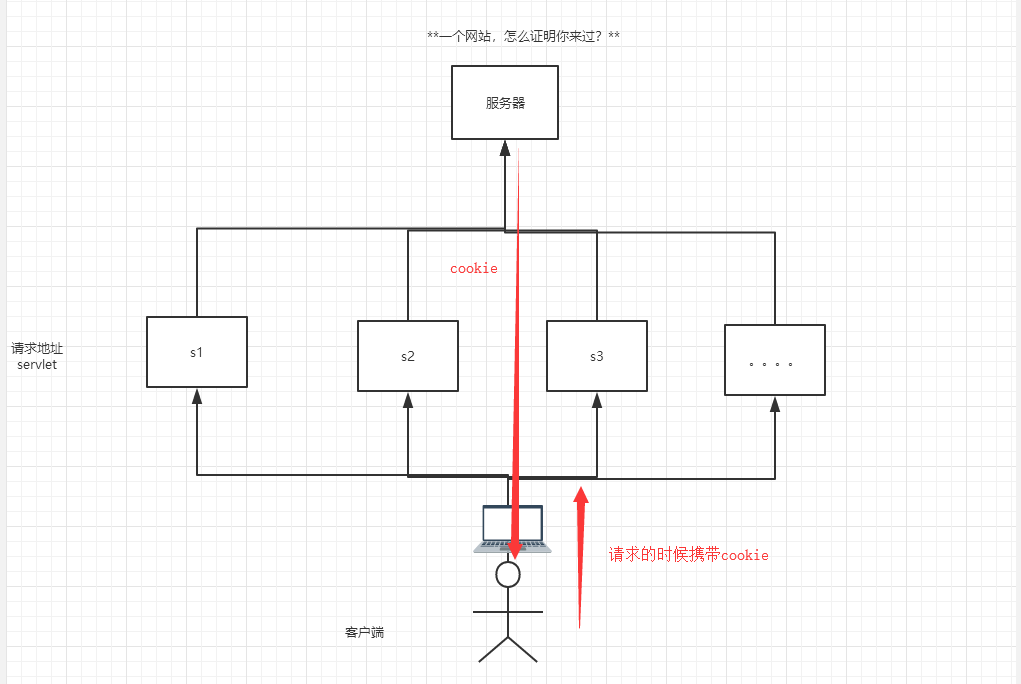
- 从请求中拿到cookie信息;
- 服务器响应给客户端cookie;
1
2
3
4
5
6
| Cookie[] cookies = req.getCookies();
cookie.getName();
cookie.getValue();
new Cookie("lastLoginTime", System.currentTimeMillis()+"");
cookie.setMaxAge(24*60*60);
resp.addCookie(cookie);
|
- cookie:一般会保存在本地的 用户目录下 appdata;
- 案例:
1
2
3
4
5
6
7
8
9
10
11
12
13
14
15
16
17
18
19
20
21
22
23
24
25
26
27
28
29
30
31
32
33
34
35
36
37
38
39
40
41
42
43
44
45
46
47
48
49
50
51
52
53
54
55
56
57
58
| package com.github.servlet;
import javax.servlet.ServletException;
import javax.servlet.http.Cookie;
import javax.servlet.http.HttpServlet;
import javax.servlet.http.HttpServletRequest;
import javax.servlet.http.HttpServletResponse;
import java.io.IOException;
import java.io.PrintWriter;
import java.util.Date;
public class CookieDemo01 extends HttpServlet {
@Override
protected void doGet(HttpServletRequest req, HttpServletResponse resp) throws ServletException, IOException {
req.setCharacterEncoding("UTF-8");
resp.setCharacterEncoding("UTF-8");
resp.setContentType("text/html; charset=UTF-8");
PrintWriter writer = resp.getWriter();
Cookie[] cookies = req.getCookies();
if(cookies!=null){
writer.write("你上一次访问的时间是:");
for (int i = 0; i < cookies.length; i++) {
Cookie cookie = cookies[i];
if(cookie.getName().equals("lastLoginTime")) {
long parseLong = Long.parseLong(cookie.getValue());
Date date = new Date(parseLong);
writer.write(date.toLocaleString());
}
}
}else{
writer.write("第一次访问本站!!!");
}
Cookie cookie = new Cookie("lastLoginTime", System.currentTimeMillis()+"");
resp.addCookie(cookie);
}
@Override
protected void doPost(HttpServletRequest req, HttpServletResponse resp) throws ServletException, IOException {
super.doPost(req, resp);
}
}
|
1
2
3
4
5
6
7
8
| <servlet>
<servlet-name>/cookieDemo01</servlet-name>
<servlet-class>com.github.servlet.CookieDemo01</servlet-class>
</servlet>
<servlet-mapping>
<servlet-name>/cookieDemo01</servlet-name>
<url-pattern>/cd01</url-pattern>
</servlet-mapping>
|
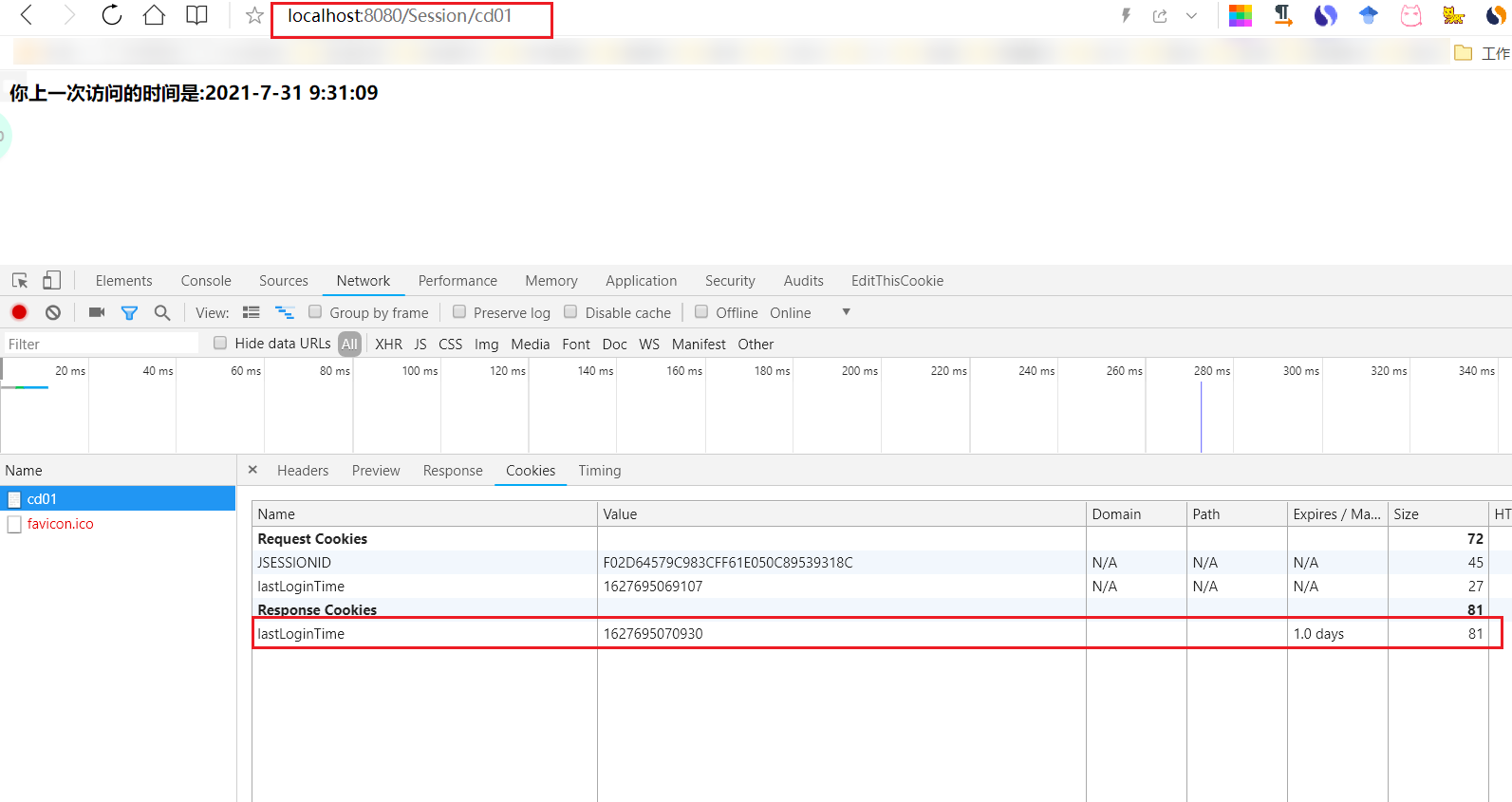
一个网站cookie是否存在上限!聊聊细节问题。
- 一个Cookie只能保存一个信息;
- 一个web站点可以给浏览器发送多个cookie,最多存放20个cookie;
- Cookie大小有限制4kb;
- 300个cookie浏览器上限。
删除Cookie;
- 不设置有效期,关闭浏览器,自动失效;
- 设置有效期时间为 0 ;
编码解码:
1
2
| URLEncoder.encode("哇哈哈","utf-8")
URLDecoder.decode(cookie.getValue(),"UTF-8")
|
1
2
3
4
5
6
7
8
9
10
11
12
13
14
15
16
17
18
19
20
21
22
23
24
25
26
27
28
29
30
31
32
33
34
35
36
37
38
39
40
41
42
43
44
45
46
47
48
49
50
51
52
53
| package com.github.servlet;
import javax.servlet.ServletException;
import javax.servlet.http.Cookie;
import javax.servlet.http.HttpServlet;
import javax.servlet.http.HttpServletRequest;
import javax.servlet.http.HttpServletResponse;
import java.io.IOException;
import java.io.PrintWriter;
import java.net.URLDecoder;
import java.net.URLEncoder;
import java.util.Date;
public class CookieDemo03 extends HttpServlet {
@Override
protected void doGet(HttpServletRequest req, HttpServletResponse resp) throws ServletException, IOException {
req.setCharacterEncoding("UTF-8");
resp.setCharacterEncoding("UTF-8");
resp.setContentType("text/html; charset=UTF-8");
PrintWriter writer = resp.getWriter();
Cookie[] cookies = req.getCookies();
if(cookies!=null){
writer.write("你上一次访问的用户是:");
for (int i = 0; i < cookies.length; i++) {
Cookie cookie = cookies[i];
if(cookie.getName().equals("name")) {
writer.write(URLDecoder.decode(cookie.getValue(),"UTF-8"));
}
}
}else{
writer.write("第一次访问本站!!!");
}
Cookie cookie = new Cookie("name", URLEncoder.encode("哇哈哈","UTF-8"));
resp.addCookie(cookie);
}
@Override
protected void doPost(HttpServletRequest req, HttpServletResponse resp) throws ServletException, IOException {
super.doPost(req, resp);
}
}
|
1
2
3
4
5
6
7
8
| <servlet>
<servlet-name>/cookieDemo03</servlet-name>
<servlet-class>com.github.servlet.CookieDemo03</servlet-class>
</servlet>
<servlet-mapping>
<servlet-name>/cookieDemo03</servlet-name>
<url-pattern>/cd03</url-pattern>
</servlet-mapping>
|

4.Session(重点)
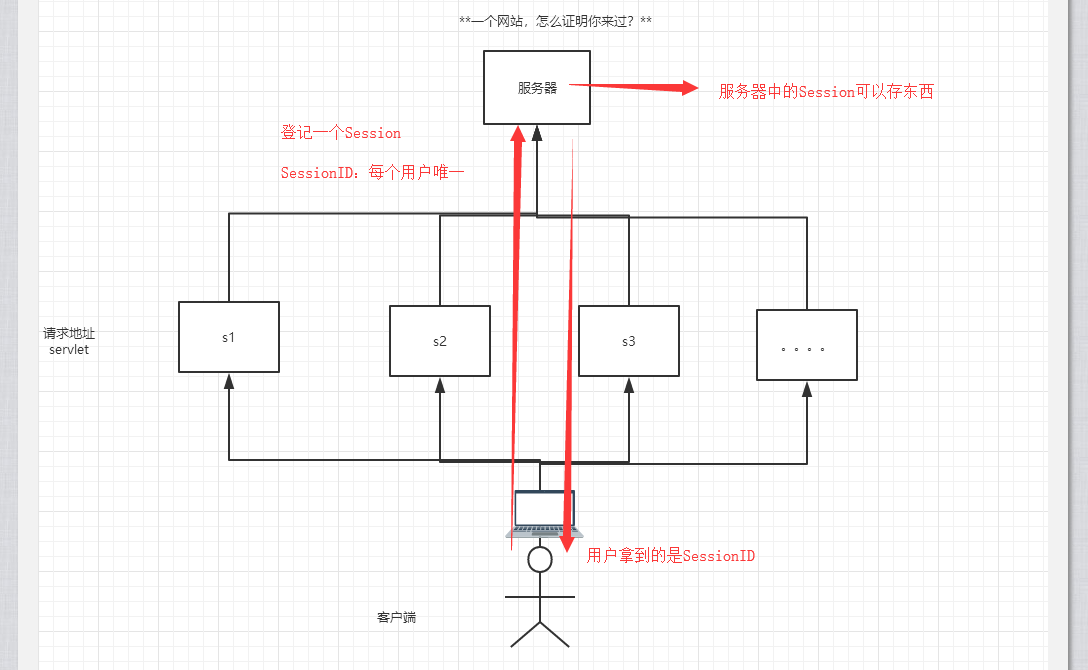
什么是Session:
- 服务器会给每一个用户(浏览器)创建一个Seesion对象;
- 一个Seesion独占一个浏览器,只要浏览器没有关闭,这个Session就存在;
- 用户登录之后,整个网站它都可以访问!–> 保存用户的信息;保存购物车的信息…..
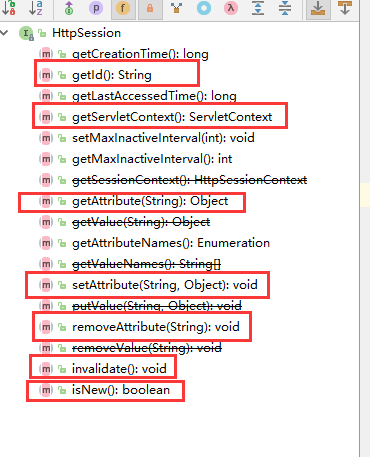
Session和cookie的区别:
- Cookie是把用户的数据写给用户的浏览器,浏览器保存 (可以保存多个)
- Session把用户的数据写到用户独占Session中,服务器端保存 (保存重要的信息,减少服务器资源的浪费)
- Session对象由服务创建;
使用场景:
- 保存一个登录用户的信息;
- 购物车信息;
- 在整个网站中经常会使用的数据,我们将它保存在Session中;
使用Session:
1
2
3
4
5
6
7
8
9
10
11
12
13
14
15
16
17
18
19
20
21
22
23
24
25
26
27
28
29
30
31
32
33
34
35
36
37
38
| package com.github.pojo;
public class Person {
private int age;
private String name;
public int getAge() {
return age;
}
public void setAge(int age) {
this.age = age;
}
public String getName() {
return name;
}
public void setName(String name) {
this.name = name;
}
public Person() {
}
public Person(String name, int age) {
this.age = age;
this.name = name;
}
@Override
public String toString() {
return "Person{" +
"age=" + age +
", name='" + name + '\'' +
'}';
}
}
|
1
2
3
4
5
6
7
8
9
10
11
12
13
14
15
16
17
18
19
20
21
22
23
24
25
26
27
28
29
30
31
32
33
34
35
36
37
38
39
40
41
42
43
44
45
46
47
48
49
50
51
52
| package com.github.servlet;
import com.github.pojo.Person;
import javax.servlet.ServletException;
import javax.servlet.http.*;
import java.io.IOException;
public class SessionDemo01 extends HttpServlet {
@Override
protected void doGet(HttpServletRequest req, HttpServletResponse resp) throws ServletException, IOException {
req.setCharacterEncoding("UTF-8");
resp.setCharacterEncoding("UTF-8");
resp.setContentType("text/html; charset=UTF-8");
HttpSession session = req.getSession();
session.setAttribute("name",new Person("懒羊羊",1));
String id = session.getId();
if(session.isNew()){
resp.getWriter().write("session创建成功!ID:" + id);
}else{
resp.getWriter().write("session已经在服务器中存在了!ID:" + id);
}
}
@Override
protected void doPost(HttpServletRequest req, HttpServletResponse resp) throws ServletException, IOException {
super.doPost(req, resp);
}
}
|
1
2
3
4
5
6
7
8
| <servlet>
<servlet-name>/sessionDemo</servlet-name>
<servlet-class>com.github.servlet.SessionDemo01</servlet-class>
</servlet>
<servlet-mapping>
<servlet-name>/sessionDemo</servlet-name>
<url-pattern>/sd01</url-pattern>
</servlet-mapping>
|
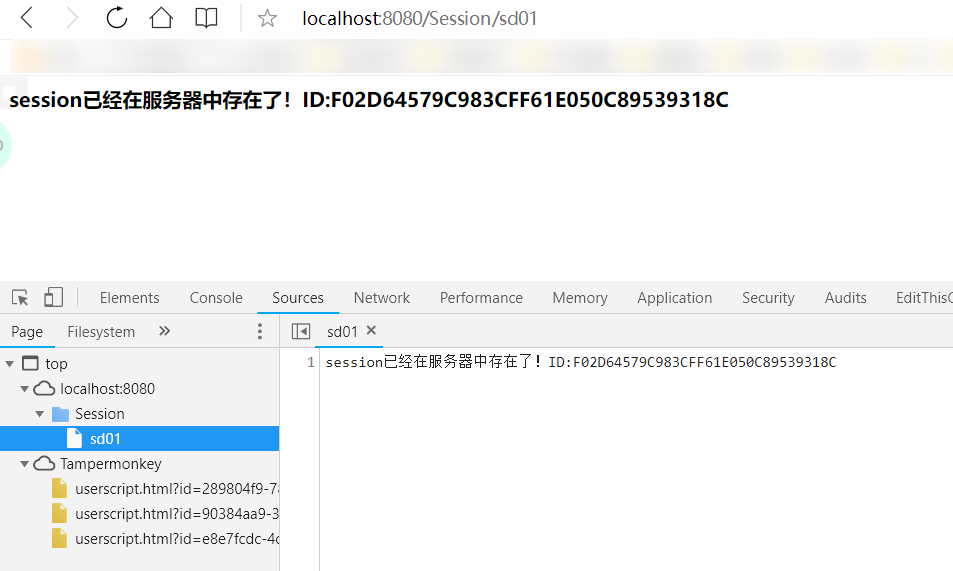
会话自动过期:web.xml配置!
1
2
3
4
5
|
<session-config>
<session-timeout>15</session-timeout>
</session-config>
|
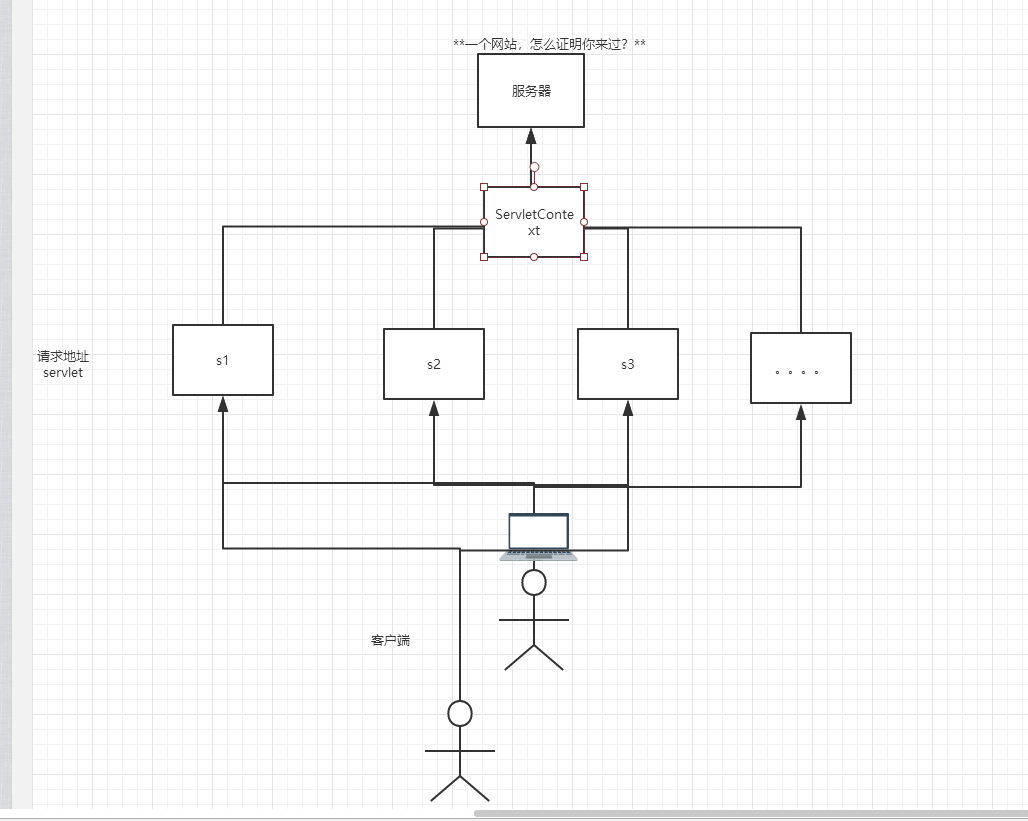
8.JSP
1.什么是JSP
Java Server Pages : Java服务器端页面,也和Servlet一样,用于动态Web技术!
- 最大的特点:
- 写JSP就像在写HTML;
- 区别:
- HTML只给用户提供静态的数据;
- JSP页面中可以嵌入JAVA代码,为用户提供动态数据;
2.JSP原理
思路:JSP到底怎么执行的!
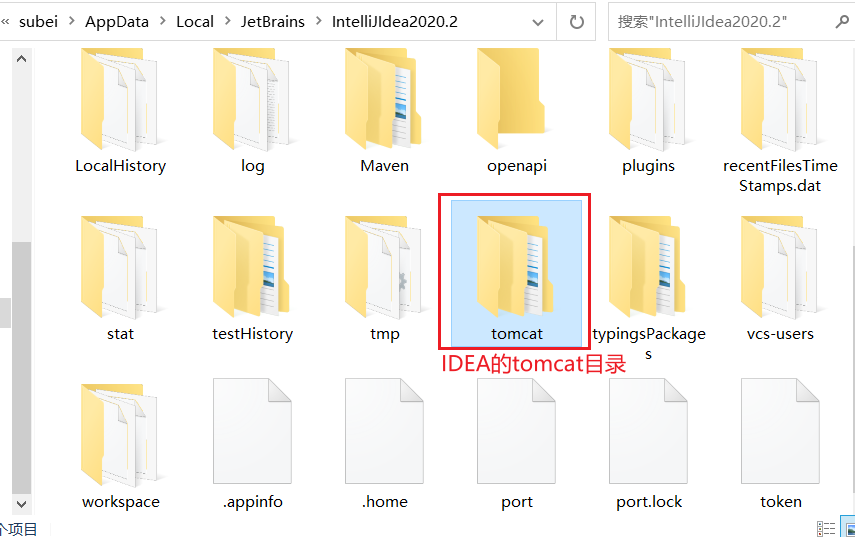
1
| C:\Users\test\AppData\Local\JetBrains\IntelliJIdea2020.2\tomcat\Unnamed_JavaWeb-02-Servlet_4\work\Catalina\localhost\Session\org\apache\jsp
|
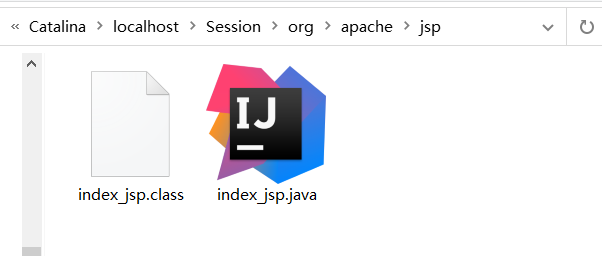
1
2
3
4
5
6
7
8
9
|
public void _jspInit() {
}
public void _jspDestroy() {
}
public void _jspService(final javax.servlet.http.HttpServletRequest request, final javax.servlet.http.HttpServletResponse response)
throws java.io.IOException, javax.servlet.ServletException {
|
判断请求;
内置一些对象;
1
2
3
4
5
6
7
8
| final javax.servlet.jsp.PageContext pageContext;
javax.servlet.http.HttpSession session = null;
final javax.servlet.ServletContext application;
final javax.servlet.ServletConfig config;
javax.servlet.jsp.JspWriter out = null;
final java.lang.Object page = this;
HttpServletRequest request
HttpServletResponse response
|
输出页面前增加的代码;
1
2
3
4
5
6
7
8
9
| response.setContentType("text/html");
pageContext = _jspxFactory.getPageContext(this, request, response,
null, true, 8192, true);
_jspx_page_context = pageContext;
application = pageContext.getServletContext();
config = pageContext.getServletConfig();
session = pageContext.getSession();
out = pageContext.getOut();
_jspx_out = out;
|
以上的这些个对象我们可以在JSP页面中直接使用!
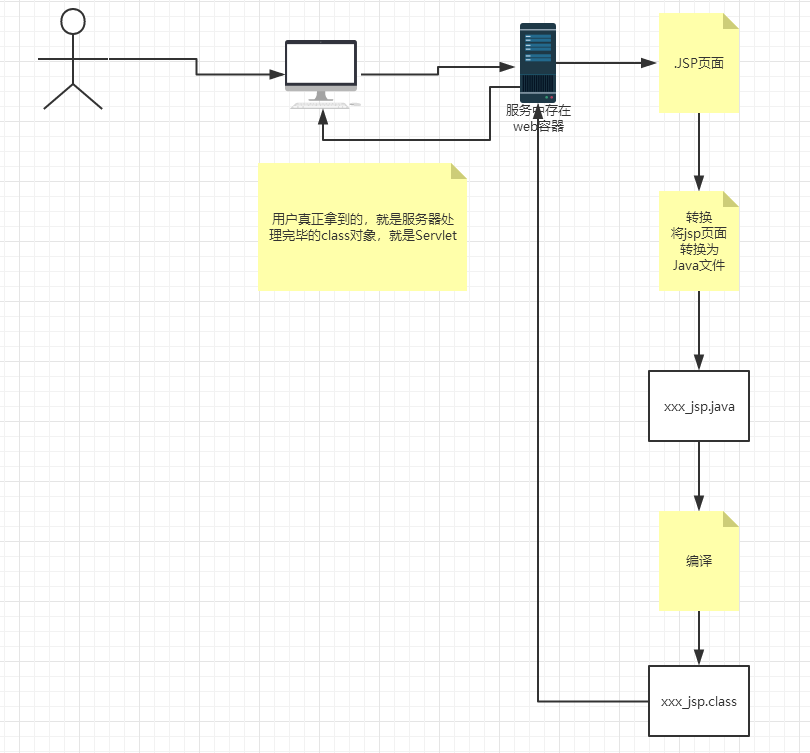
- 在JSP页面中:
- 只要是 JAVA代码就会原封不动的输出;
- 如果是HTML代码,就会被转换为:
1
2
3
4
5
6
7
8
| out.write("<html>\n");
out.write(" <head>\n");
out.write(" <title>$Title$</title>\n");
out.write(" </head>\n");
out.write(" <body>\n");
out.write(" $END$\n");
out.write(" </body>\n");
out.write("</html>\n");
|
3.JSP基础语法
- 任何语言都有自己的语法,JAVA中有,JSP 作为java技术的一种应用,它拥有一些自己扩充的语法(了解,知道即可!),Java所有语法都支持!
- 配置必需的maven环境:
1
2
3
4
5
6
7
8
9
10
11
12
13
14
15
16
17
18
19
20
21
22
23
24
25
26
27
28
29
30
31
32
33
34
35
36
37
38
39
40
41
42
| <?xml version="1.0" encoding="UTF-8"?>
<project xmlns="http://maven.apache.org/POM/4.0.0"
xmlns:xsi="http://www.w3.org/2001/XMLSchema-instance"
xsi:schemaLocation="http://maven.apache.org/POM/4.0.0 http://maven.apache.org/xsd/maven-4.0.0.xsd">
<parent>
<artifactId>JavaWeb-02-Servlet</artifactId>
<groupId>com.github</groupId>
<version>1.0-SNAPSHOT</version>
</parent>
<modelVersion>4.0.0</modelVersion>
<artifactId>Jsp</artifactId>
<dependencies>
<dependency>
<groupId>javax.servlet</groupId>
<artifactId>servlet-api</artifactId>
<version>2.5</version>
</dependency>
<dependency>
<groupId>javax.servlet.jsp</groupId>
<artifactId>javax.servlet.jsp-api</artifactId>
<version>2.3.3</version>
</dependency>
<dependency>
<groupId>javax.servlet.jsp.jstl</groupId>
<artifactId>jstl-api</artifactId>
<version>1.2</version>
</dependency>
<dependency>
<groupId>taglibs</groupId>
<artifactId>standard</artifactId>
<version>1.1.2</version>
</dependency>
</dependencies>
</project>
|
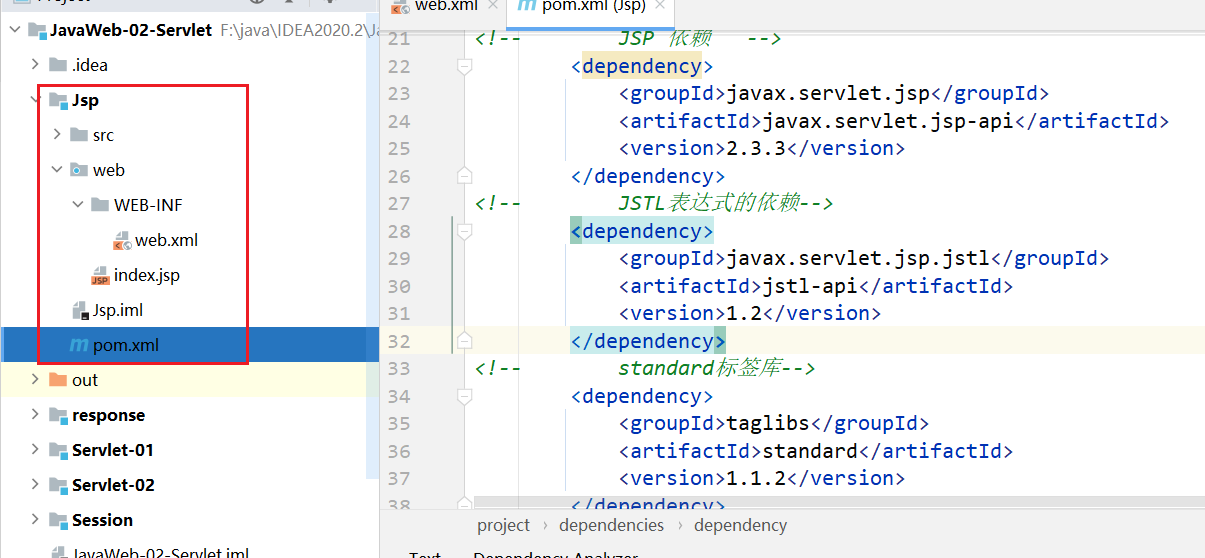
JSP表达式
1
2
3
4
5
6
7
8
9
10
11
12
13
14
15
| <%@ page contentType="text/html;charset=UTF-8" %>
<html>
<head>
<title>$Title$</title>
</head>
<body>
<%--JSP表达式
作用:用来将程序的输出,输出到客户端
<%= 变量或者表达式%>
--%>
<%= new java.util.Date()%>
</body>
</html>
|
jsp脚本片段
1
2
3
4
5
6
7
8
9
10
11
12
13
14
15
16
17
18
| <%@ page contentType="text/html;charset=UTF-8" %>
<html>
<head>
<title>$Title$</title>
</head>
<body>
<%--jsp脚本片段--%>
<%
int sum = 0;
for (int i = 1; i <=100 ; i++) {
sum+=i;
}
out.println("<h1>Sum="+sum+"</h1>");
%>
</body>
</html>
|
1
2
3
4
5
6
7
8
9
10
11
12
13
14
15
16
17
18
19
20
21
22
23
24
25
26
27
28
29
30
| <%@ page contentType="text/html;charset=UTF-8" %>
<html>
<head>
<title>$Title$</title>
</head>
<body>
<%
int x = 10;
out.println(x);
%>
<p>这是一个JSP文档</p>
<%
int num = 2;
out.println(num);
%>
<hr>
<%--在代码嵌入HTML元素--%>
<%
for (int i = 0; i < 5; i++) {
%>
<h1>Hello,World <%=i%> </h1>
<%
}
%>
</body>
</html>
|
JSP声明
1
2
3
4
5
6
7
8
9
10
11
12
13
14
15
16
17
18
19
20
21
| <%@ page contentType="text/html;charset=UTF-8" %>
<html>
<head>
<title>$Title$</title>
</head>
<body>
<%!
static {
System.out.println("Loading Servlet!");
}
private int globalVar = 0;
public void guo(){
System.out.println("进入了方法guo!");
}
%>
</body>
</html>
|
- JSP声明:会被编译到JSP生成Java的类中!其他的,就会被生成到_jspService方法中!
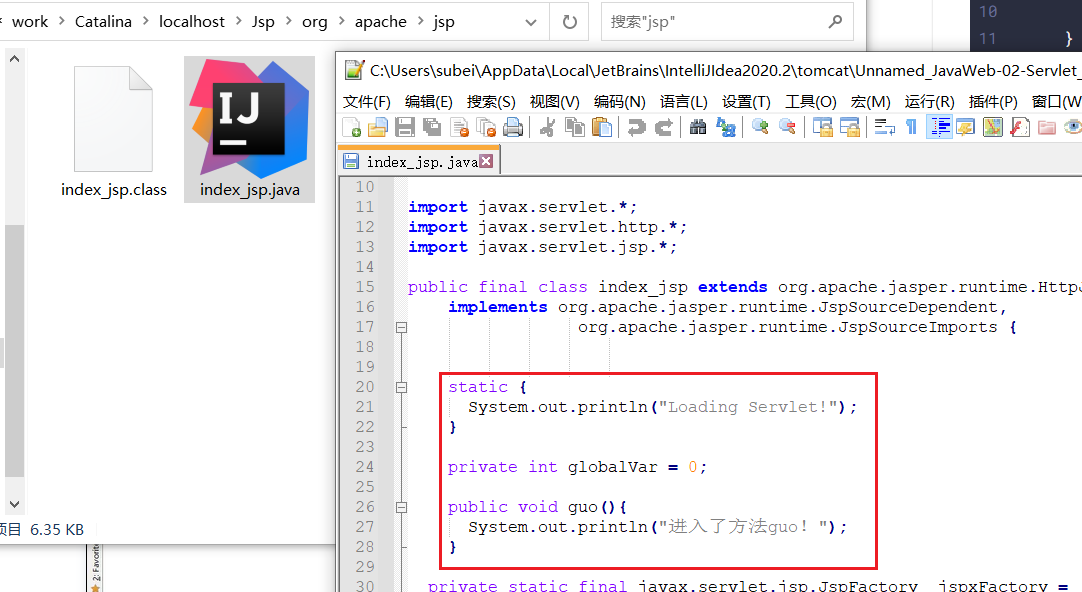
1
2
3
4
5
| <%%>
<%=%>
<%!%>
<%--注释--%>
|
4.JSP指令
404与500页面实现
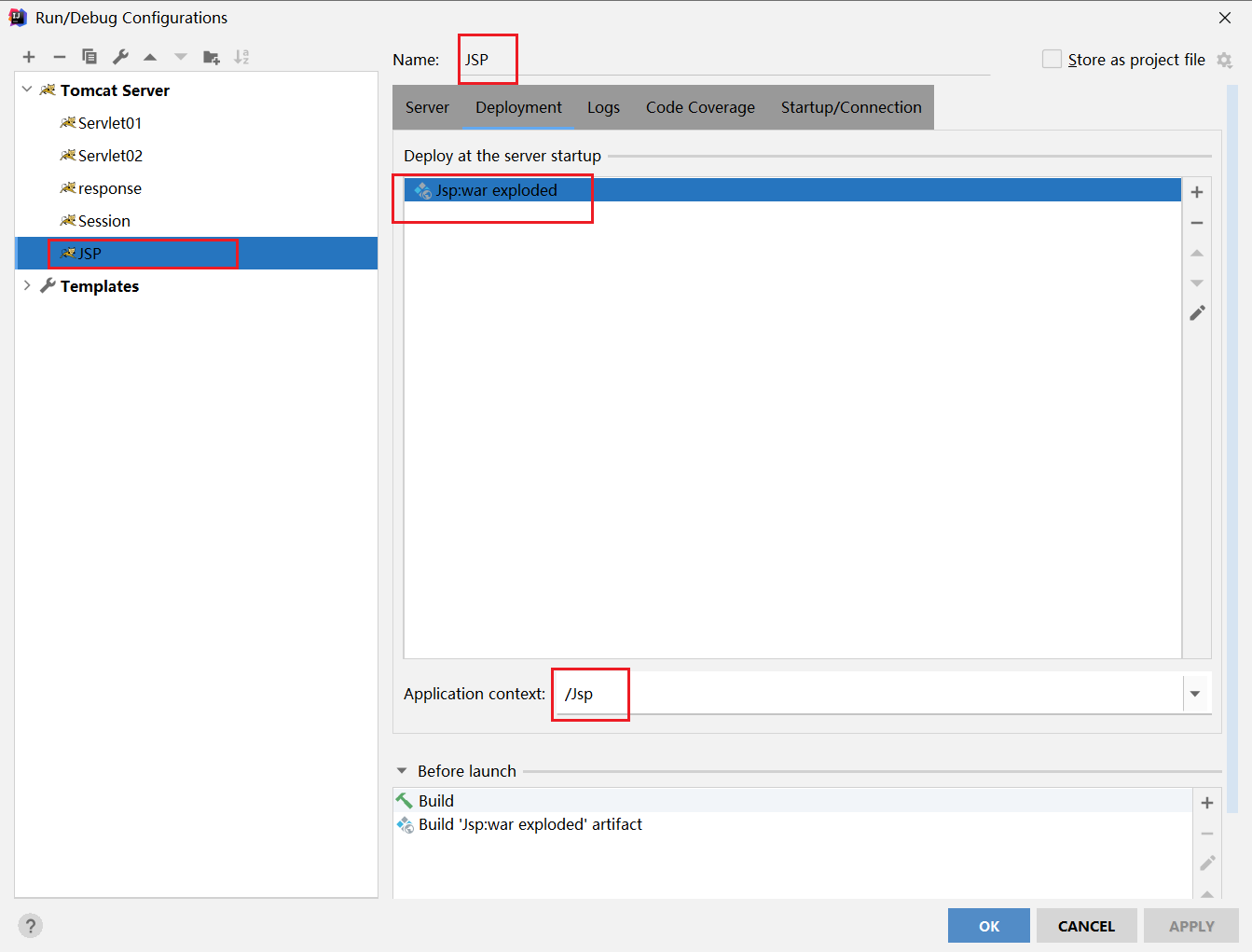
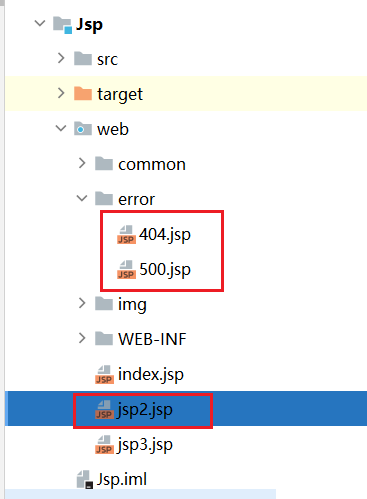
1
2
3
4
5
6
7
8
9
10
11
12
13
14
15
16
| <%@ page contentType="text/html;charset=UTF-8" %>
<%--定制错误页面--%>
<%--<%@ page errorPage="error/500.jsp" %>--%>
<html>
<head>
<title>Title</title>
</head>
<body>
<%
int x = 1/0;
%>
</body>
</html>
|
1
2
3
4
5
6
7
8
9
| <%@ page contentType="text/html;charset=UTF-8" language="java" %>
<html>
<head>
<title>Title</title>
</head>
<body>
<../img src="${pageContext.request.contextPath}/../img/2-404.png" alt="404">
</body>
</html>
|
1
2
3
4
5
6
7
8
9
10
| <%@ page contentType="text/html;charset=UTF-8" language="java" %>
<html>
<head>
<title>Title</title>
</head>
<body>
<h2>自定义500错误的界面</h2>
<../img src="${pageContext.request.contextPath}/../img/1-500.png" alt="500">
</body>
</html>
|
1
2
3
4
5
6
7
8
9
10
11
12
13
14
15
16
| <?xml version="1.0" encoding="UTF-8"?>
<web-app xmlns="http://xmlns.jcp.org/xml/ns/javaee"
xmlns:xsi="http://www.w3.org/2001/XMLSchema-instance"
xsi:schemaLocation="http://xmlns.jcp.org/xml/ns/javaee http://xmlns.jcp.org/xml/ns/javaee/web-app_4_0.xsd"
version="4.0">
<error-page>
<error-code>404</error-code>
<location>/error/404.jsp</location>
</error-page>
<error-page>
<error-code>500</error-code>
<location>/error/500.jsp</location>
</error-page>
</web-app>
|

头部和尾部页面拼接
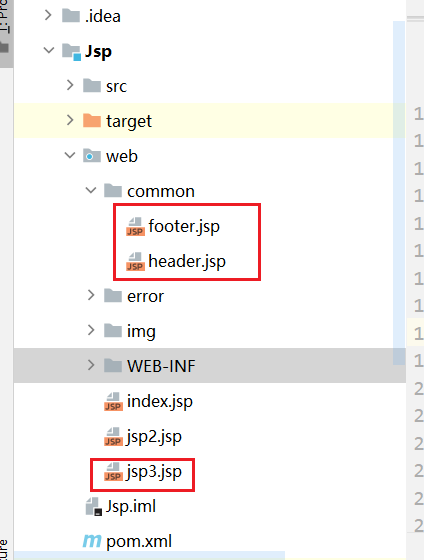
1
2
3
4
5
6
7
8
9
10
11
| <%@ page contentType="text/html;charset=UTF-8" %>
<html>
<head>
<title>footer</title>
</head>
<body>
<h1>我是footer</h1>
</body>
</html>
|
1
2
3
4
5
6
7
8
9
10
11
| <%@ page contentType="text/html;charset=UTF-8" %>
<html>
<head>
<title>head</title>
</head>
<body>
<h1>我是header</h1>
</body>
</html>
|
1
2
3
4
5
6
7
8
9
10
11
12
13
14
15
16
17
18
19
20
21
22
23
24
| <%@ page contentType="text/html;charset=UTF-8" %>
<html>
<head>
<title>jsp3</title>
</head>
<body>
<%-- @include会将两个页面合二为一 --%>
<%@include file="common/header.jsp"%>
<h1>网页主体</h1>
<%@include file="common/footer.jsp"%>
<hr>
<%--
jsp标签
jsp:include:拼接页面,本质还是三个
--%>
<jsp:include page="/common/header.jsp"/>
<h1>网页主体</h1>
<jsp:include page="/common/footer.jsp"/>
</body>
</html>
|
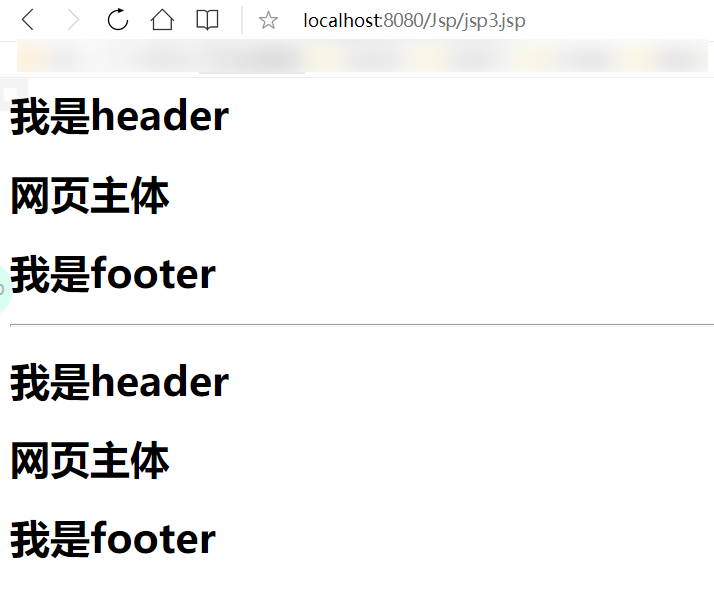
5.9大内置对象
- PageContext 存东西
- Request 存东西
- Response
- Session 存东西
- Application 【SerlvetContext】 存东西
- config 【SerlvetConfig】
- out
- page ,不用了解
- exception
1
2
3
4
5
6
7
8
9
10
11
12
13
14
15
16
17
18
19
20
21
22
23
24
25
26
27
28
29
30
31
32
33
34
35
36
37
38
39
40
| <%@ page contentType="text/html;charset=UTF-8" %>
<html>
<head>
<title>Title</title>
</head>
<body>
<%--内置对象--%>
<%
pageContext.setAttribute("name1","天启1号");
request.setAttribute("name2","天启2号");
session.setAttribute("name3","天启3号");
application.setAttribute("name4","天启4号");
%>
<%--
脚本片段中的代码,会被原封不动生成到.jsp.java
要求:这里面的代码,必须保证Java语法的正确性
--%>
<%
String name1 = (String) pageContext.findAttribute("name1");
String name2 = (String) pageContext.findAttribute("name2");
String name3 = (String) pageContext.findAttribute("name3");
String name4 = (String) pageContext.findAttribute("name4");
String name5 = (String) pageContext.findAttribute("name5");
%>
<%--使用EL表达式输出 ${} --%>
<h1>取出的值:</h1>
<h3>${name1}</h3>
<h3>${name2}</h3>
<h3>${name3}</h3>
<h3>${name4}</h3>
<h3> <%=name5%> </h3>
</body>
</html>
|
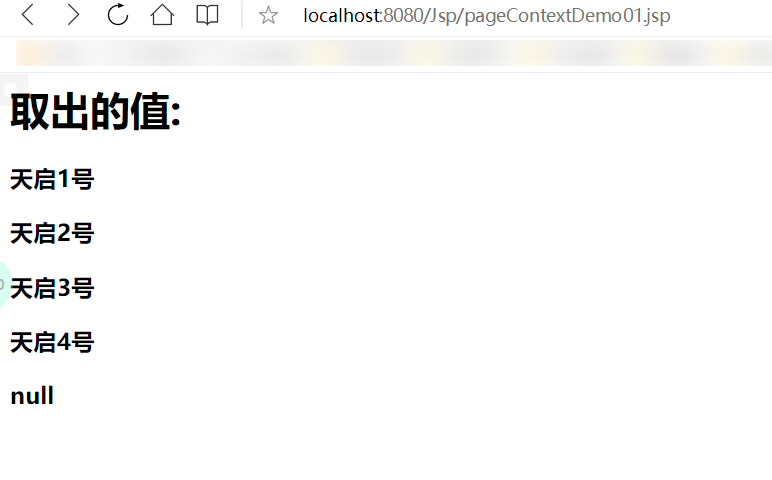
如果EL表达式不生效,请在JSP页面最上面加上:<%@page isELIgnored=”false” %>
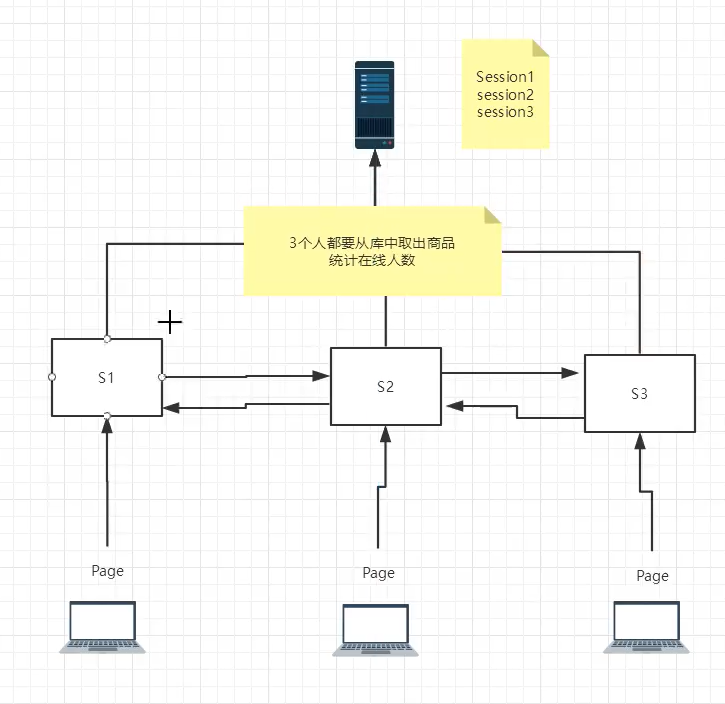
- request:客户端向服务器发送请求,产生的数据,用户看完就没用了,比如:新闻,用户看完没用的!
- session:客户端向服务器发送请求,产生的数据,用户用完一会还有用,比如:购物车;
- application:客户端向服务器发送请求,产生的数据,一个用户用完了,其他用户还可能使用,比如:聊天数据;
6.JSP标签.JSTL标签.EL表达式
1
2
3
4
5
6
7
8
9
10
11
12
| <!-- JSTL表达式的依赖 -->
<dependency>
<groupId>javax.servlet.jsp.jstl</groupId>
<artifactId>jstl-api</artifactId>
<version>1.2</version>
</dependency>
<!-- standard标签库 -->
<dependency>
<groupId>taglibs</groupId>
<artifactId>standard</artifactId>
<version>1.1.2</version>
</dependency>
|
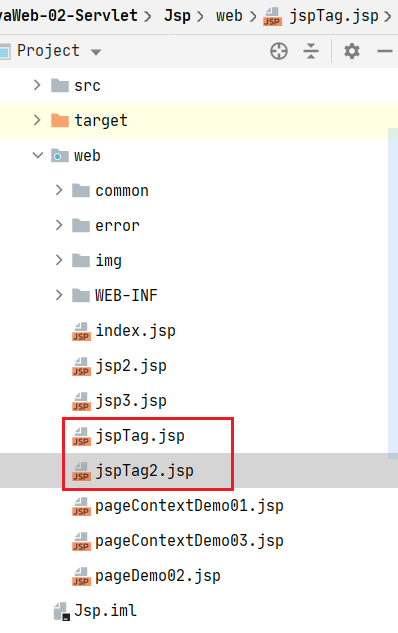
1
2
3
4
5
6
7
8
9
10
11
12
13
14
15
16
17
18
19
20
21
22
23
| <%@ page contentType="text/html;charset=UTF-8" %>
<html>
<head>
<title>jspTag</title>
</head>
<body>
<h1>Tag1</h1>
<%--jsp:include--%>
<%--
http:
--%>
<jsp:forward page="/jspTag2.jsp">
<jsp:param name="name" value="testLY"/>
<jsp:param name="age" value="18"/>
</jsp:forward>
</body>
</html>
|
1
2
3
4
5
6
7
8
9
10
11
12
13
14
15
16
| <%@ page contentType="text/html;charset=UTF-8" %>
<html>
<head>
<title>jspTag2</title>
</head>
<body>
<h1>Tag2</h1>
<%--取出参数--%>
名字:<%=request.getParameter("name")%>
年龄:<%=request.getParameter("age")%>
</body>
</html>
|
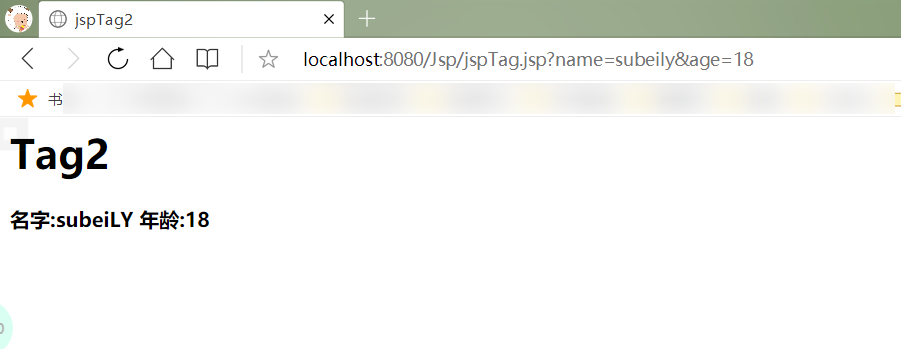
- JSTL表达式
- JSTL标签库的使用就是为了弥补HTML标签的不足;它自定义许多标签,可以供我们使用,标签的功能和Java代码一样!
- 格式化标签
- SQL标签
- XML 标签
- 核心标签 (掌握部分)

JSTL标签库使用步骤:
- 引入对应的 taglib;
- 使用其中的方法;
- 在Tomcat 的lib目录下也需要引入 jstl-api-1.2.jar、standard-1.1.2.jar的包,否则会报错:JSTL解析错误;
c:if
1
2
3
4
5
6
7
8
9
10
11
12
13
14
15
16
17
18
19
20
21
22
23
24
25
26
27
28
29
30
31
32
| <%@ page contentType="text/html;charset=UTF-8" %>
<%--引入jstl核心标签库--%>
<%@ taglib prefix="c" uri="http://java.sun.com/jsp/jstl/core" %>
<html>
<head>
<title>core-if</title>
</head>
<body>
<h4>if测试</h4>
<hr>
<form action="core-if.jsp" method="get">
<%--
EL表达式获取表单中的数据
${param.参数名}
--%>
<input type="text" name="username" value="${param.username}">
<input type="submit" value="登录">
</form>
<%--判断如果提交的用户名是管理员,则登录成功--%>
<c:if test="${param.username=='admin'}" var="isAdmin">
<c:out value="管理员欢迎您!"/>
</c:if>
<%--自闭合标签--%>
<c:out value="${isAdmin}"/>
</body>
</html>
|

1
2
3
4
5
6
7
8
9
10
11
12
13
14
15
16
17
18
19
20
21
22
23
24
25
26
27
28
29
| <%@ page contentType="text/html;charset=UTF-8" %>
<%--引入jstl核心标签库--%>
<%@ taglib prefix="c" uri="http://java.sun.com/jsp/jstl/core" %>
<html>
<head>
<title>core-for</title>
</head>
<body>
<%--定义一个变量score,值为85--%>
<c:set var="score" value="65"/>
<c:choose>
<c:when test="${score>=90}">
你的成绩为优秀
</c:when>
<c:when test="${score>=80}">
你的成绩为一般
</c:when>
<c:when test="${score>=70}">
你的成绩为良好
</c:when>
<c:when test="${score<=60}">
你的成绩为不及格
</c:when>
</c:choose>
</body>
</html>
|
1
2
3
4
5
6
7
8
9
10
11
12
13
14
15
16
17
18
19
20
21
22
23
24
25
26
27
28
29
30
31
32
33
34
35
36
37
38
39
40
| <%@ page import="java.util.ArrayList" %>
<%@ page contentType="text/html;charset=UTF-8" %>
<%--引入jstl核心标签库--%>
<%@ taglib prefix="c" uri="http://java.sun.com/jsp/jstl/core" %>
<html>
<head>
<title>core-foreach</title>
</head>
<body>
<%
ArrayList<String> people = new ArrayList<>();
people.add(0,"张三");
people.add(1,"李四");
people.add(2,"王五");
people.add(3,"赵六");
people.add(4,"田六");
request.setAttribute("list",people);
%>
<%--
var , 每一次遍历出来的变量
items, 要遍历的对象
begin, 哪里开始
end, 到哪里
step, 步长
--%>
<c:forEach var="people" items="${list}">
<c:out value="${people}"/> <br>
</c:forEach>
<hr>
<c:forEach var="people" items="${list}" begin="1" end="3" step="1" >
<c:out value="${people}"/> <br>
</c:forEach>
</body>
</html>
|
9.JavaBean
实体类,JavaBean有特定的写法:
- 必须要有一个无参构造
- 属性必须私有化
- 必须有对应的get/set方法;
一般用来和数据库的字段做映射 ORM;
ORM :对象关系映射
people表
| id | name | age | address |
|---|
| 1 | 饺子1号 | 3 | 成都 |
| 2 | 饺子2号 | 18 | 成都 |
| 3 | 饺子3号 | 85 | 成都 |
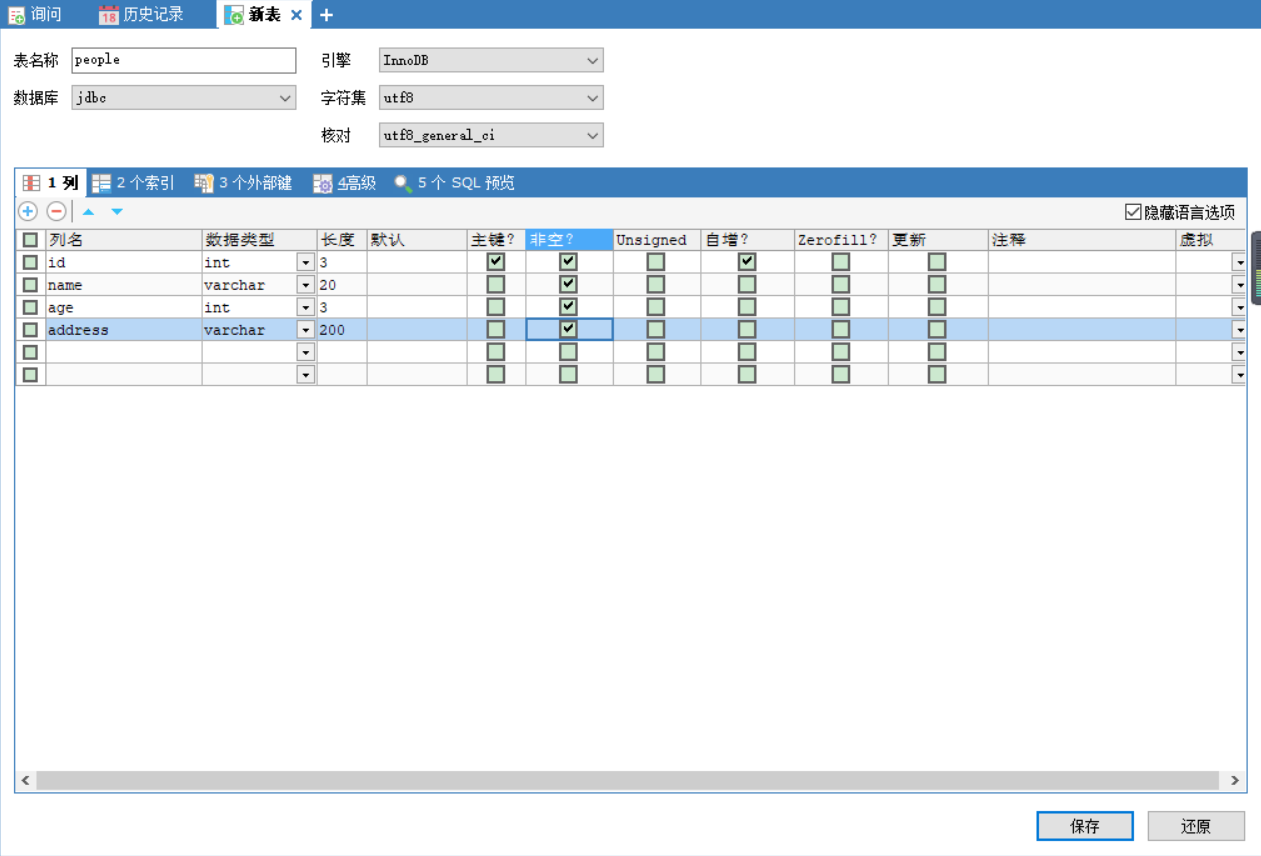
1
2
3
4
5
6
| class People{
private int id;
private String name;
private int age;
private String address;
}
|
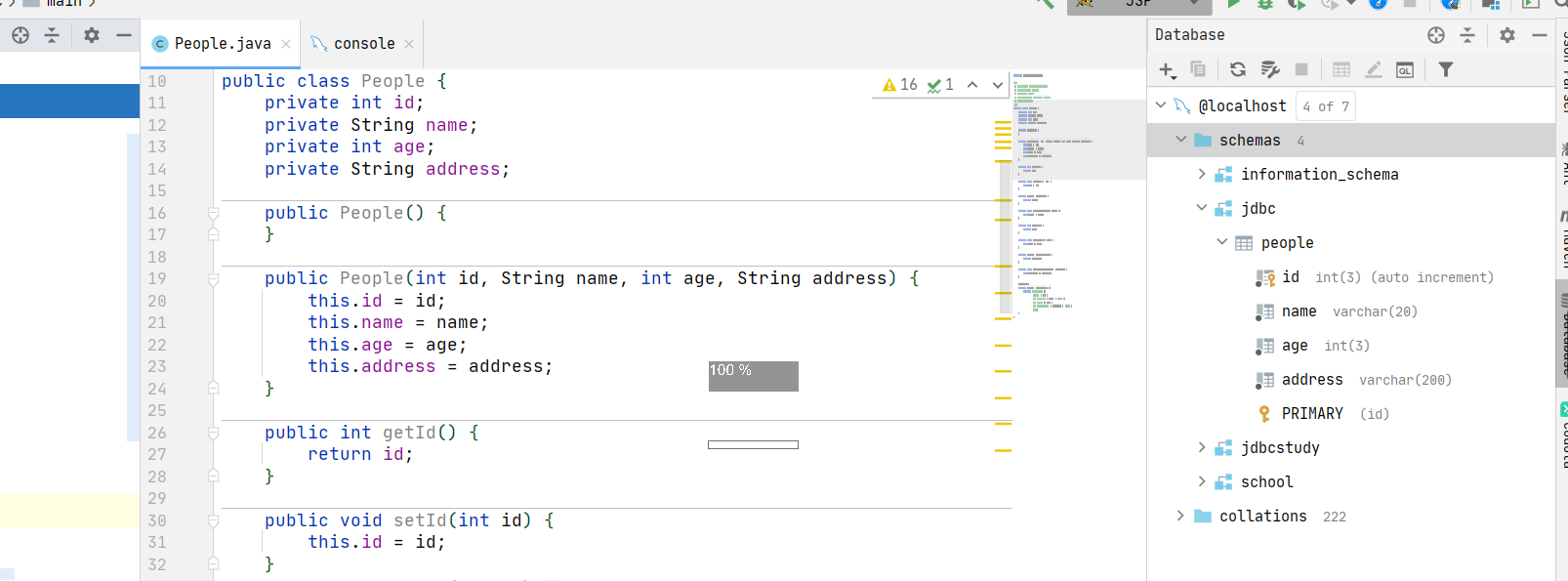
1
2
3
4
5
| class A{
new People(1,"饺子1号",3,"成都");
new People(2,"饺子1号",18,"成都");
new People(3,"饺子1号",85,"成都");
}
|
1
2
3
4
5
6
7
8
9
10
11
12
13
14
15
16
17
18
19
20
21
22
23
24
25
26
27
28
29
30
| <%@ page contentType="text/html;charset=UTF-8" %>
<html>
<head>
<title>Title</title>
</head>
<body>
<%
%>
<jsp:useBean id="people" class="com.github.pojo.People" />
<jsp:setProperty name="people" property="address" value="成都"/>
<jsp:setProperty name="people" property="id" value="1"/>
<jsp:setProperty name="people" property="age" value="2"/>
<jsp:setProperty name="people" property="name" value="哇哈哈AD钙"/>
姓名:<jsp:getProperty name="people" property="name"/>
ID:<jsp:getProperty name="people" property="id"/>
年龄:<jsp:getProperty name="people" property="age"/>
地址:<jsp:getProperty name="people" property="address"/>
</body>
</html>
|

- 过滤器
- 文件上传
- 邮件发送
- JDBC 复习 : 如何使用JDBC , JDBC crud, jdbc 事务
10.MVC三层架构
- 什么是MVC: Model view Controller 模型.视图.控制器
1.早些年
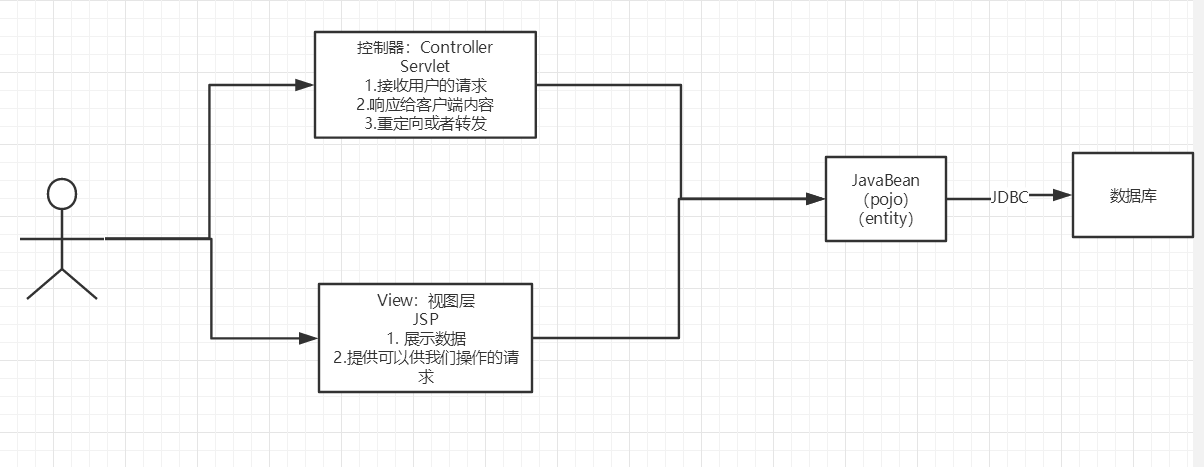
1
2
3
4
5
6
7
8
9
10
| servlet--CRUD-->数据库
弊端:程序十分臃肿,不利于维护
servlet的代码中:处理请求.响应.视图跳转.处理JDBC.处理业务代码.处理逻辑代码
架构:没有什么是加一层解决不了的!
程序猿调用
|
JDBC
|
Mysql Oracle SqlServer ....
|
2.MVC三层架构
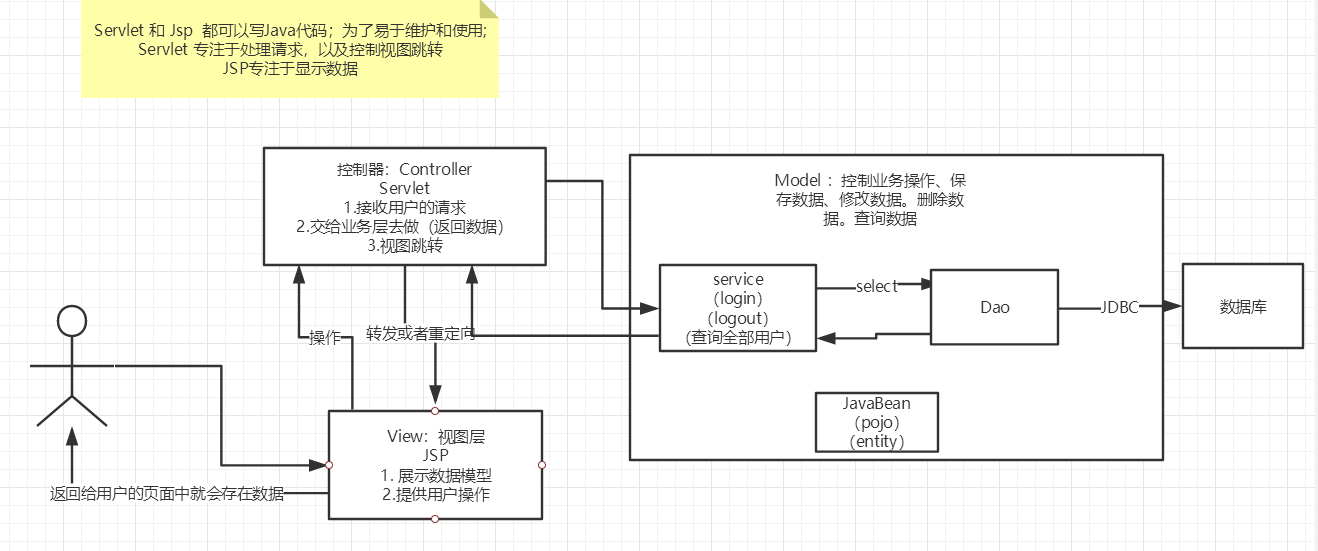
Model
- 业务处理 :业务逻辑(Service)
- 数据持久层:CRUD (Dao)
View
- 展示数据
- 提供链接发起Servlet请求 (a,form,../img…)
Controller (Servlet)
11.Filter (重点)
Filter:过滤器 ,用来过滤网站的数据;
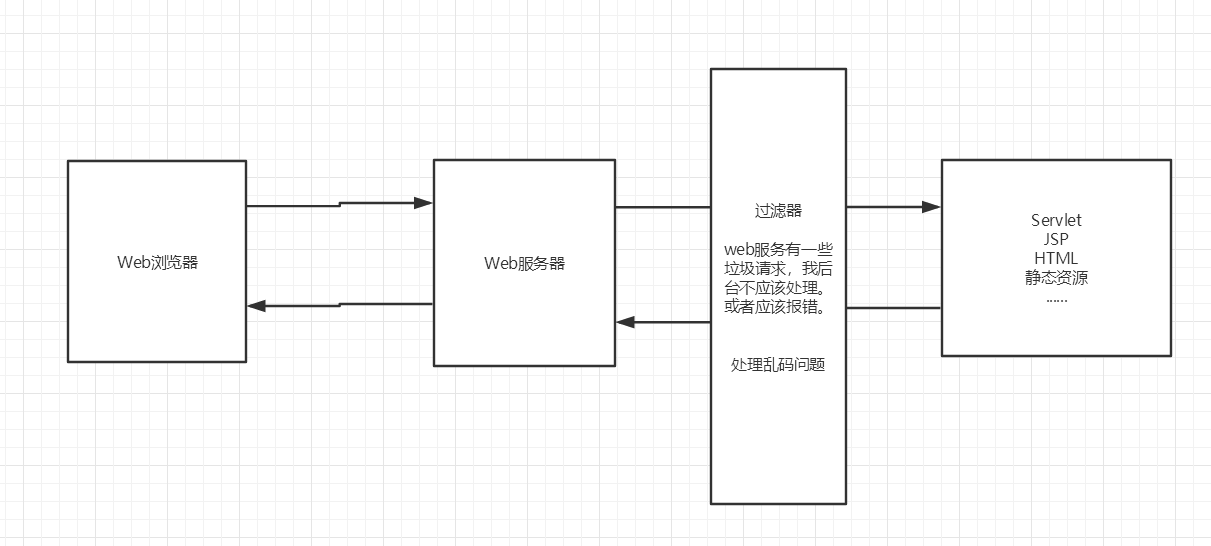
Filter开发步骤:
导包
编写过滤器
导包不要错;
1
2
3
4
5
6
7
8
9
10
11
12
13
14
15
16
17
18
19
20
21
22
23
24
25
26
27
28
29
30
31
32
33
34
35
36
37
38
39
40
41
42
43
44
45
46
47
| <?xml version="1.0" encoding="UTF-8"?>
<project xmlns="http://maven.apache.org/POM/4.0.0"
xmlns:xsi="http://www.w3.org/2001/XMLSchema-instance"
xsi:schemaLocation="http://maven.apache.org/POM/4.0.0 http://maven.apache.org/xsd/maven-4.0.0.xsd">
<parent>
<artifactId>JavaWeb-02-Servlet</artifactId>
<groupId>com.github</groupId>
<version>1.0-SNAPSHOT</version>
</parent>
<modelVersion>4.0.0</modelVersion>
<artifactId>Filer</artifactId>
<dependencies>
<dependency>
<groupId>javax.servlet</groupId>
<artifactId>servlet-api</artifactId>
<version>2.5</version>
</dependency>
<dependency>
<groupId>javax.servlet.jsp</groupId>
<artifactId>javax.servlet.jsp-api</artifactId>
<version>2.3.3</version>
</dependency>
<dependency>
<groupId>javax.servlet.jsp.jstl</groupId>
<artifactId>jstl-api</artifactId>
<version>1.2</version>
</dependency>
<dependency>
<groupId>taglibs</groupId>
<artifactId>standard</artifactId>
<version>1.1.2</version>
</dependency>
<dependency>
<groupId>mysql</groupId>
<artifactId>mysql-connector-java</artifactId>
<version>5.1.47</version>
</dependency>
</dependencies>
</project>
|

实现Filter接口,重写对应的方法即可;
1
2
3
4
5
6
7
8
9
10
11
12
13
14
15
16
17
18
19
20
21
22
23
24
25
26
27
28
29
30
31
32
33
34
35
36
37
38
39
| package com.github.filter;
import javax.servlet.*;
import java.io.IOException;
public class CharacterEncodingFilter implements Filter {
public void init(FilterConfig filterConfig) {
System.out.println("CharacterEncodingFilter初始化");
}
public void doFilter(ServletRequest request, ServletResponse response, FilterChain chain) throws IOException, ServletException {
request.setCharacterEncoding("utf-8");
response.setCharacterEncoding("utf-8");
response.setContentType("text/html;charset=UTF-8");
System.out.println("CharacterEncodingFilter执行前....");
chain.doFilter(request,response);
System.out.println("CharacterEncodingFilter执行后....");
}
public void destroy() {
System.out.println("CharacterEncodingFilter销毁");
}
}
|
在web.xml中配置 Filter;
1
2
3
4
5
6
7
8
9
10
11
12
13
14
15
16
17
18
| <?xml version="1.0" encoding="UTF-8"?>
<web-app xmlns="http://xmlns.jcp.org/xml/ns/javaee"
xmlns:xsi="http://www.w3.org/2001/XMLSchema-instance"
xsi:schemaLocation="http://xmlns.jcp.org/xml/ns/javaee http://xmlns.jcp.org/xml/ns/javaee/web-app_4_0.xsd"
version="4.0">
<filter>
<filter-name>CharacterEncodingFilter</filter-name>
<filter-class>com.github.filter.CharacterEncodingFilter</filter-class>
</filter>
<filter-mapping>
<filter-name>CharacterEncodingFilter</filter-name>
<url-pattern>/servlet/*</url-pattern>
</filter-mapping>
</web-app>
|
12.监听器
实现一个监听器的接口;(有N种)
编写一个监听器;
实现监听器的接口…
1
2
3
4
5
6
7
8
9
10
11
12
13
14
15
16
17
18
19
20
21
22
23
24
25
26
27
28
29
30
31
32
33
34
35
36
37
38
39
40
41
42
43
44
45
46
47
48
49
50
51
52
53
54
55
56
57
58
| package com.github.listener;
import javax.servlet.ServletContext;
import javax.servlet.http.HttpSessionEvent;
import javax.servlet.http.HttpSessionListener;
public class OnlineCountListener implements HttpSessionListener {
public void sessionCreated(HttpSessionEvent se) {
ServletContext ctx = se.getSession().getServletContext();
System.out.println(se.getSession().getId());
Integer onlineCount = (Integer) ctx.getAttribute("OnlineCount");
if (onlineCount==null){
onlineCount = new Integer(1);
}else {
int count = onlineCount.intValue();
onlineCount = new Integer(count+1);
}
ctx.setAttribute("OnlineCount",onlineCount);
}
public void sessionDestroyed(HttpSessionEvent se) {
ServletContext ctx = se.getSession().getServletContext();
Integer onlineCount = (Integer) ctx.getAttribute("OnlineCount");
if (onlineCount==null){
onlineCount = new Integer(0);
}else {
int count = onlineCount.intValue();
onlineCount = new Integer(count-1);
}
ctx.setAttribute("OnlineCount",onlineCount);
}
}
|
web.xml中注册监听器;
1
2
3
4
|
<listener>
<listener-class>com.github.listener.OnlineCountListener</listener-class>
</listener>
|
看情况是否使用!
13.过滤器.监听器常见应用
1
2
3
4
5
6
7
8
9
10
11
12
13
14
15
16
17
18
19
20
21
22
23
24
25
26
27
28
29
30
31
32
33
34
35
36
37
| package com.github.listener;
import java.awt.*;
import java.awt.event.WindowAdapter;
import java.awt.event.WindowEvent;
public class TestPanel {
public static void main(String[] args) {
Frame frame = new Frame("建军节快乐");
Panel panel = new Panel(null);
frame.setLayout(null);
frame.setBounds(300,300,500,500);
frame.setBackground(new Color(68, 227, 177));
panel.setBounds(50,50,300,300);
panel.setBackground(new Color(255, 242,0));
frame.add(panel);
frame.setVisible(true);
frame.addWindowListener(new WindowAdapter() {
@Override
public void windowClosing(WindowEvent e) {
super.windowClosing(e);
}
});
}
}
|
案例:用户登录之后才能进入主页!用户注销后就不能进入主页了!
- 用户登录之后,向Sesison中放入用户的数据
- 进入主页的时候要判断用户是否已经登录;要求:在过滤器中实现!
- 因为:个人tomcat配置的为 /Filer 如下图:
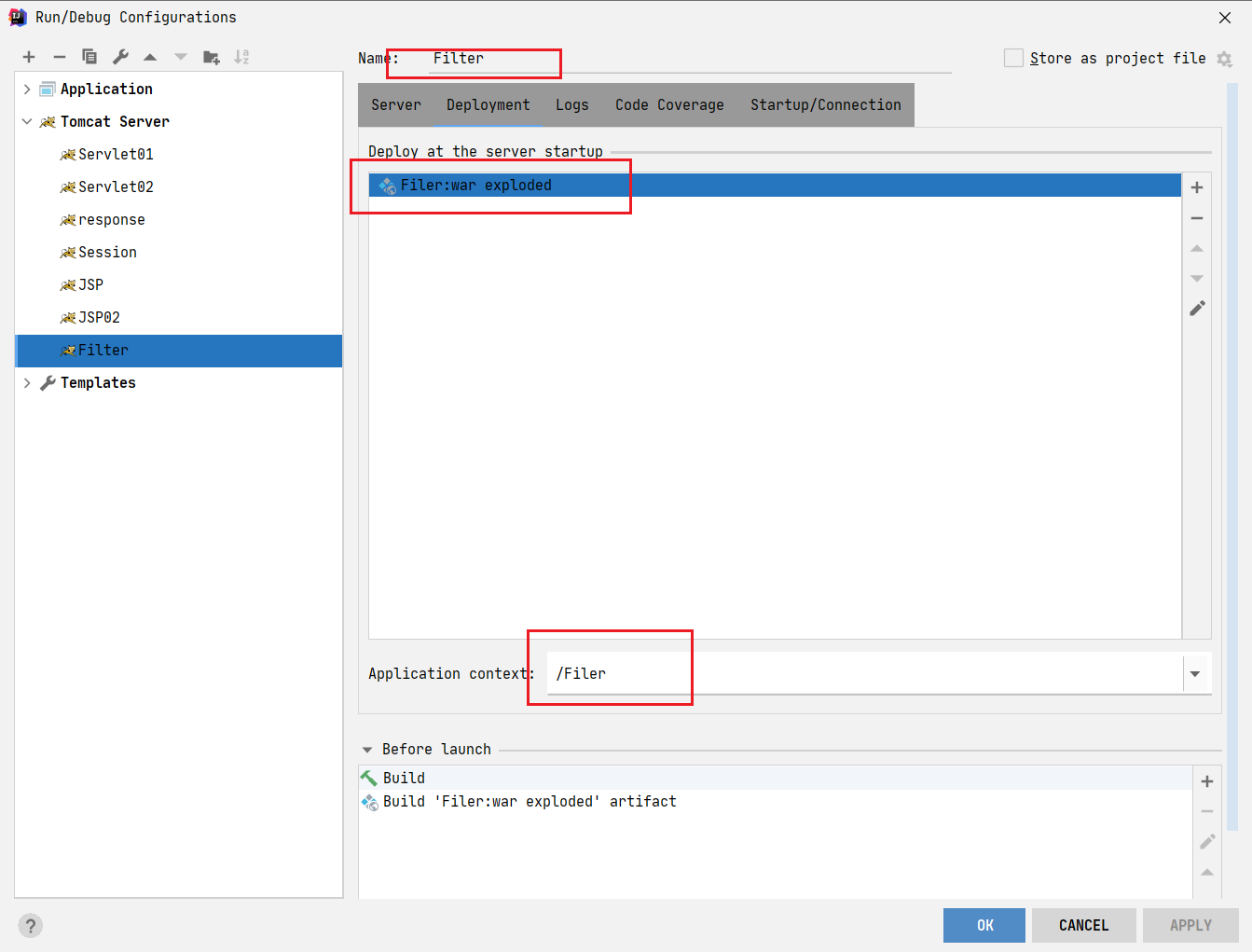
1
2
3
4
5
6
7
8
9
10
11
12
13
14
15
16
17
18
19
20
21
22
23
24
25
26
27
28
29
30
| package com.github.servlet;
import javax.servlet.ServletException;
import javax.servlet.http.HttpServlet;
import javax.servlet.http.HttpServletRequest;
import javax.servlet.http.HttpServletResponse;
import java.io.IOException;
public class LoginServlet extends HttpServlet {
@Override
protected void doGet(HttpServletRequest req, HttpServletResponse resp) throws IOException, ServletException {
super.doGet(req,resp);
}
@Override
protected void doPost(HttpServletRequest req, HttpServletResponse resp) throws ServletException, IOException {
String username = req.getParameter("username");
if("admin".equals(username)){
req.getSession().setAttribute("USER_SESSION",req.getSession().getId());
resp.sendRedirect("/Filer/sys/success.jsp");
} else {
resp.sendRedirect("/Filer/error.jsp");
}
}
}
|
1
2
3
4
5
6
7
8
9
10
11
12
13
14
15
16
17
18
19
20
21
22
23
24
25
| package com.github.servlet;
import javax.servlet.ServletException;
import javax.servlet.http.HttpServlet;
import javax.servlet.http.HttpServletRequest;
import javax.servlet.http.HttpServletResponse;
import java.io.IOException;
public class LogoutServlet extends HttpServlet {
@Override
protected void doGet(HttpServletRequest req, HttpServletResponse resp) throws ServletException, IOException {
Object user_session = req.getSession().getAttribute("USER_SESSION");
if(user_session!=null){
req.getSession().removeAttribute("USER_SESSION");
resp.sendRedirect("/Filer/Login.jsp");
} else {
resp.sendRedirect("/Filer/Login.jsp");
}
}
@Override
protected void doPost(HttpServletRequest req, HttpServletResponse resp) throws ServletException, IOException {
super.doPost(req,resp);
}
}
|
1
2
3
4
5
6
7
8
9
10
11
12
13
14
15
| <%@ page contentType="text/html;charset=UTF-8" %>
<html>
<head>
<title>Login</title>
</head>
<body>
<h1>登陆界面</h1>
<form action="/Filer/servlet/login" method="post">
<input type="text" name="username">
<input type="submit">
</form>
</body>
</html>
|
1
2
3
4
5
6
7
8
9
10
11
12
13
14
15
16
17
18
19
20
| <%@ page contentType="text/html;charset=UTF-8" %>
<html>
<head>
<title>成功</title>
</head>
<body>
<%--<%--%>
<%-- Object userSession = request.getSession().getAttribute("USER_SESSION");--%>
<%-- if(userSession==null){--%>
<%-- response.sendRedirect("Filer/Login.jsp");--%>
<%-- }--%>
<%--%>--%>
<h1>主页</h1>
<p><a href="/Filer/servlet/logout">注销</a> </p>
</body>
</html>
|
1
2
3
4
5
6
7
8
9
10
11
12
13
14
| <%@ page contentType="text/html;charset=UTF-8" %>
<html>
<head>
<title>error</title>
</head>
<body>
<h1>错误</h1>
<h3>没有权限,用户名错误</h3>
<p> <a href="/Filer/Login.jsp">返回登录主页</a></p>
</body>
</html>
|
- 进行登录注销无法登录判断;
- Constant.java
1
2
3
4
5
| package com.github.Util;
public class Constant {
public static String USER_SESSION="USER_SESSION";
}
|
1
2
3
4
5
6
7
8
9
10
11
12
13
14
15
16
17
18
19
20
21
22
23
24
25
26
27
28
29
30
| package com.github.listener;
import com.github.Util.Constant;
import javax.servlet.*;
import javax.servlet.http.HttpServletRequest;
import javax.servlet.http.HttpServletResponse;
import java.io.IOException;
public class SysFilter implements Filter {
public void init(FilterConfig filterConfig) throws ServletException {
}
public void doFilter(ServletRequest req, ServletResponse resp, FilterChain chain) throws IOException, ServletException {
HttpServletRequest request = (HttpServletRequest) req;
HttpServletResponse response = (HttpServletResponse) resp;
if (request.getSession().getAttribute(Constant.USER_SESSION)==null){
response.sendRedirect("/Filer/error.jsp");
}
chain.doFilter(request,response);
}
public void destroy() {
}
}
|
1
2
3
4
5
6
7
8
9
10
11
12
13
14
15
16
17
18
19
20
21
22
23
24
25
26
27
28
29
30
31
32
33
| <?xml version="1.0" encoding="UTF-8"?>
<web-app xmlns="http://xmlns.jcp.org/xml/ns/javaee"
xmlns:xsi="http://www.w3.org/2001/XMLSchema-instance"
xsi:schemaLocation="http://xmlns.jcp.org/xml/ns/javaee http://xmlns.jcp.org/xml/ns/javaee/web-app_4_0.xsd"
version="4.0">
<servlet>
<servlet-name>LoginServlet</servlet-name>
<servlet-class>com.github.servlet.LoginServlet</servlet-class>
</servlet>
<servlet-mapping>
<servlet-name>LoginServlet</servlet-name>
<url-pattern>/servlet/login</url-pattern>
</servlet-mapping>
<servlet>
<servlet-name>LogoutServlet</servlet-name>
<servlet-class>com.github.servlet.LogoutServlet</servlet-class>
</servlet>
<servlet-mapping>
<servlet-name>LogoutServlet</servlet-name>
<url-pattern>/servlet/logout</url-pattern>
</servlet-mapping>
<filter>
<filter-name>SysFilter</filter-name>
<filter-class>com.github.listener.SysFilter</filter-class>
</filter>
<filter-mapping>
<filter-name>SysFilter</filter-name>
<url-pattern>/sys/*</url-pattern>
</filter-mapping>
</web-app>
|
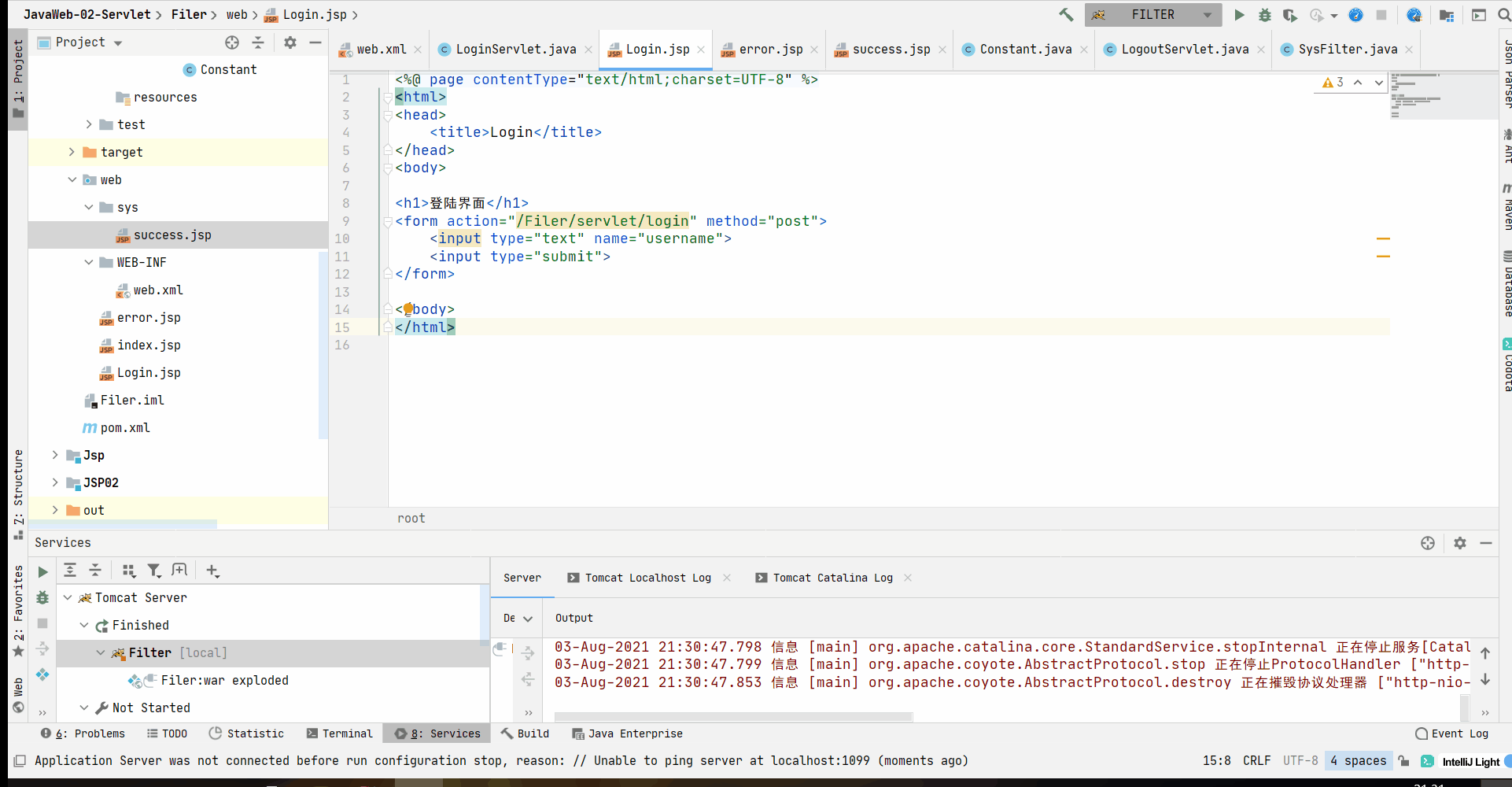
14.JDBC
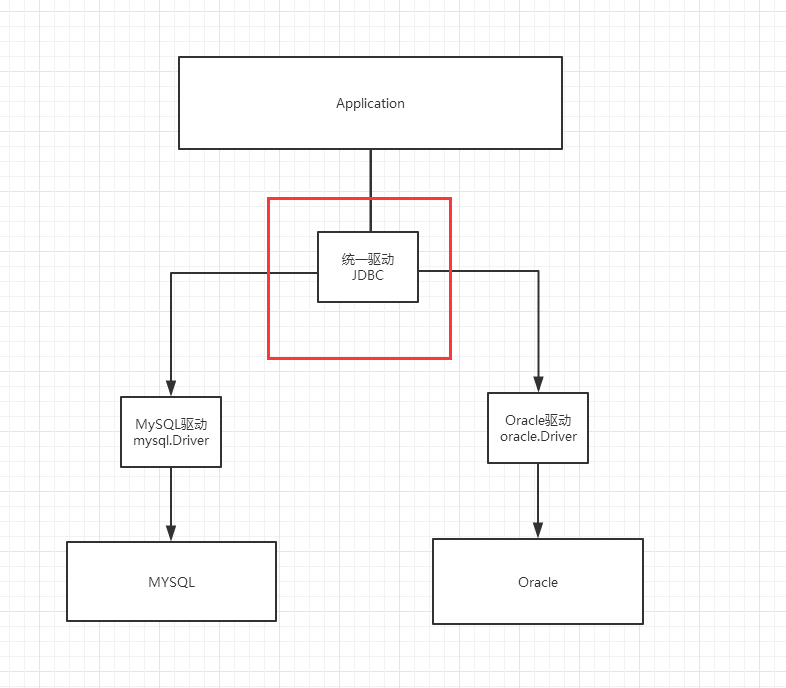
需要jar包的支持:
- java.sql
- javax.sql
- mysql-conneter-java… 连接驱动(必须要导入)
实验环境搭建
1
2
3
4
5
6
7
8
9
10
11
12
13
14
15
16
17
18
| USE jdbc;
CREATE TABLE users(
id INT PRIMARY KEY,
`name` VARCHAR(40),
`password` VARCHAR(40),
email VARCHAR(60),
birthday DATE
);
INSERT INTO users(id,`name`,`password`,email,birthday)
VALUES(1,'张三','123456','zs@qq.com','2000-01-01');
INSERT INTO users(id,`name`,`password`,email,birthday)
VALUES(2,'李四','123456','ls@qq.com','2000-01-01');
INSERT INTO users(id,`name`,`password`,email,birthday)
VALUES(3,'王五','123456','ww@qq.com','2000-01-01');
SELECT * FROM users;
|
1
2
3
4
5
6
|
<dependency>
<groupId>mysql</groupId>
<artifactId>mysql-connector-java</artifactId>
<version>5.1.47</version>
</dependency>
|
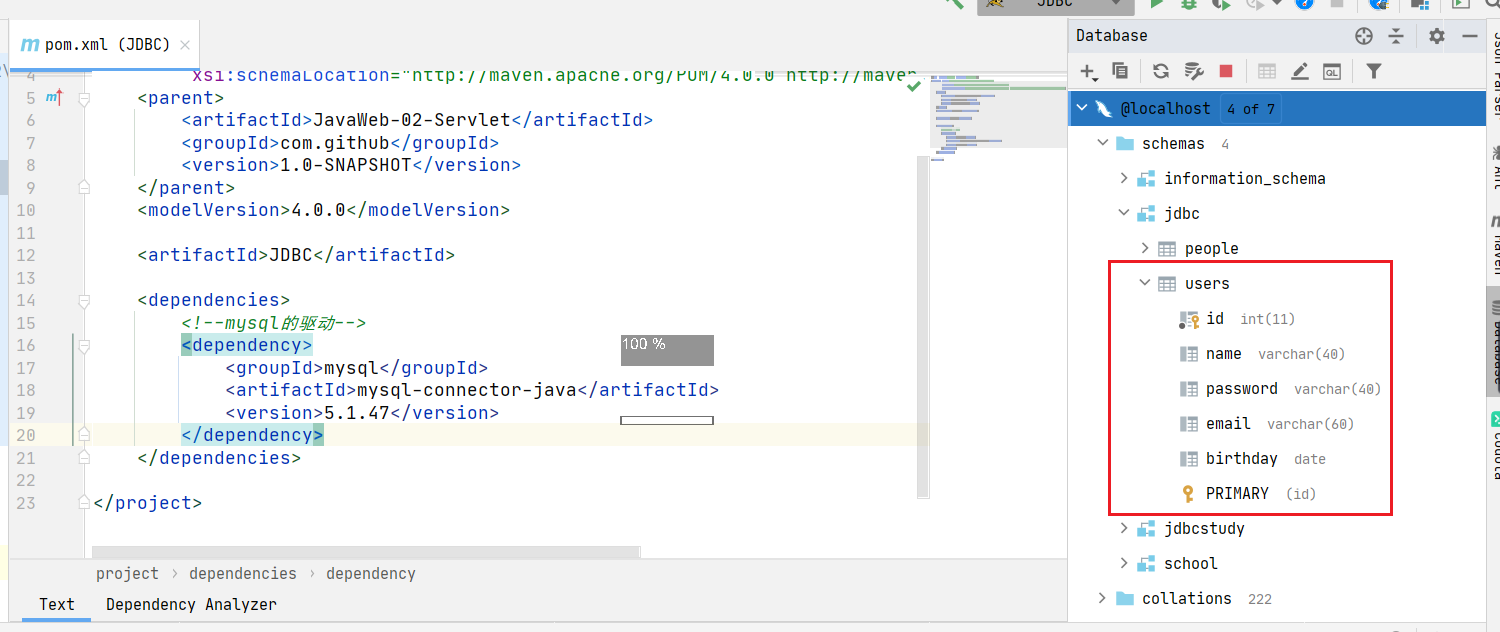
- 加载驱动
- 连接数据库,代表数据库
- 向数据库发送SQL的对象Statement : CRUD
- 编写SQL (根据业务,不同的SQL)
- 执行SQL
- 关闭连接
1
2
3
4
5
6
7
8
9
10
11
12
13
14
15
16
17
18
19
20
21
22
23
24
25
26
27
28
29
30
31
32
33
34
35
36
37
38
39
40
| package com.github.test;
import java.sql.*;
public class TestJdbc {
public static void main(String[] args) throws SQLException, ClassNotFoundException {
String url="jdbc:mysql://localhost:3306/jdbc?useUnicode=true&characterEncoding=utf-8";
String username = "root";
String password = "root";
Class.forName("com.mysql.jdbc.Driver");
Connection connection = DriverManager.getConnection(url, username, password);
Statement statement = connection.createStatement();
String sql = "select * from users";
ResultSet rs = statement.executeQuery(sql);
while (rs.next()){
System.out.println("id="+rs.getObject("id"));
System.out.println("name="+rs.getObject("name"));
System.out.println("password="+rs.getObject("password"));
System.out.println("email="+rs.getObject("email"));
System.out.println("birthday="+rs.getObject("birthday"));
}
rs.close();
statement.close();
connection.close();
}
}
|
1
2
3
4
5
6
7
8
9
10
11
12
13
14
15
16
17
18
19
20
21
22
23
24
25
26
27
28
29
30
31
32
33
34
35
36
37
38
39
40
41
42
43
44
45
46
| package com.github.test;
import java.sql.*;
public class TestJDBC2 {
public static void main(String[] args) throws ClassNotFoundException, SQLException {
String url="jdbc:mysql://localhost:3306/jdbc?useUnicode=true&characterEncoding=utf-8";
String username = "root";
String password = "root";
Class.forName("com.mysql.jdbc.Driver");
Connection connection = DriverManager.getConnection(url, username, password);
String sql = "insert into users(id, name, password, email, birthday) values (?,?,?,?,?);";
PreparedStatement preparedStatement = connection.prepareStatement(sql);
preparedStatement.setInt(1,2);
preparedStatement.setString(2,"哇哈哈AD钙");
preparedStatement.setString(3,"123456");
preparedStatement.setString(4,"24736743@qq.com");
preparedStatement.setDate(5,new Date(new java.util.Date().getTime()));
int i = preparedStatement.executeUpdate();
if (i>0){
System.out.println("插入成功@");
}
preparedStatement.close();
connection.close();
}
}
|
事务
要么都成功,要么都失败!
ACID原则:保证数据的安全。
1
2
3
4
5
6
7
8
9
10
| 开启事务
事务提交 commit()
事务回滚 rollback()
关闭事务
转账:
A:1000
B:1000
A(900) --100--> B(1100)
|
Junit单元测试
1
2
3
4
5
6
|
<dependency>
<groupId>junit</groupId>
<artifactId>junit</artifactId>
<version>4.12</version>
</dependency>
|
简单使用
- @Test注解只有在方法上有效,只要加了这个注解的方法,就可以直接运行!
1
2
3
4
| @Test
public void test(){
System.out.println("Hello");
}
|


1
2
3
4
5
6
7
8
9
10
11
| USE jdbc;
CREATE TABLE account(
id INT PRIMARY KEY AUTO_INCREMENT,
`name` VARCHAR(40),
money FLOAT
);
INSERT INTO account(`name`,money) VALUES('A',1000);
INSERT INTO account(`name`,money) VALUES('B',1000);
INSERT INTO account(`name`,money) VALUES('C',1000);
|
1
2
3
4
5
6
7
8
9
10
11
12
13
14
15
16
17
18
19
20
21
22
23
24
25
26
27
28
29
30
31
32
33
34
35
36
37
38
39
40
41
42
43
44
45
46
47
48
49
50
51
52
53
54
55
56
57
| package com.github.test;
import org.junit.Test;
import java.sql.Connection;
import java.sql.DriverManager;
import java.sql.SQLException;
public class TestJdbc3 {
@Test
public void test() {
String url="jdbc:mysql://localhost:3306/jdbc?useUnicode=true&characterEncoding=utf-8";
String username = "root";
String password = "root";
Connection connection = null;
try {
Class.forName("com.mysql.jdbc.Driver");
connection = DriverManager.getConnection(url, username, password);
connection.setAutoCommit(false);
String sql = "update account set money = money-100 where name = 'A'";
connection.prepareStatement(sql).executeUpdate();
String sql2 = "update account set money = money+100 where name = 'B'";
connection.prepareStatement(sql2).executeUpdate();
connection.commit();
System.out.println("success");
} catch (Exception e) {
try {
connection.rollback();
} catch (SQLException e1) {
e1.printStackTrace();
}
e.printStackTrace();
}finally {
try {
connection.close();
} catch (SQLException e) {
e.printStackTrace();
}
}
}
}
|
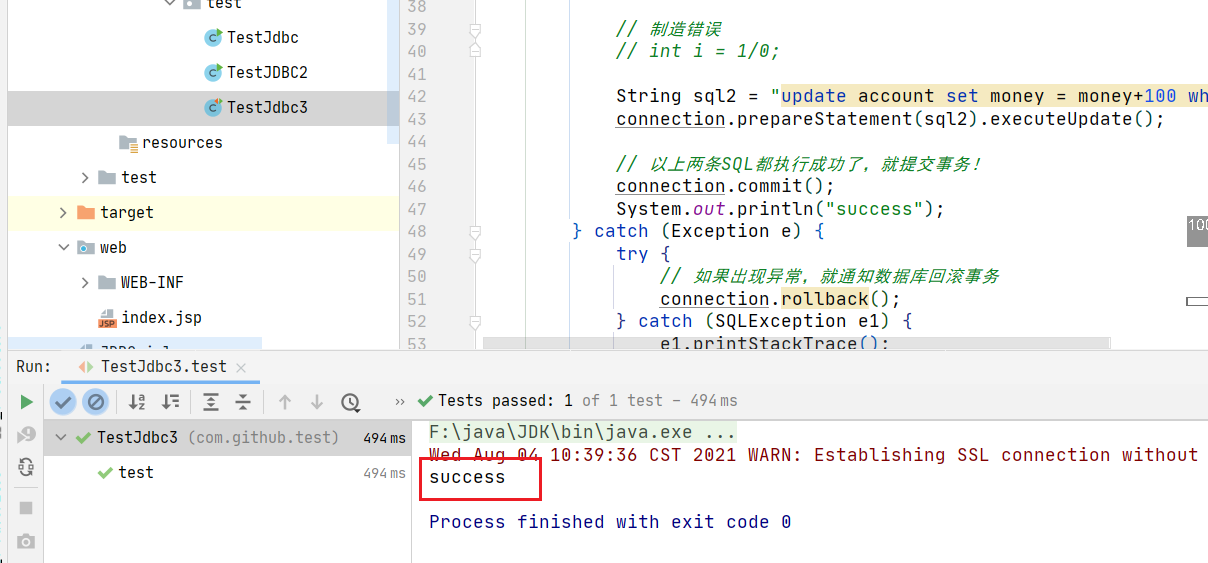
15.smbms项目
参考smbms项目
16.文件传输原理及实现
此部分内容参考:博客园-Jpbito


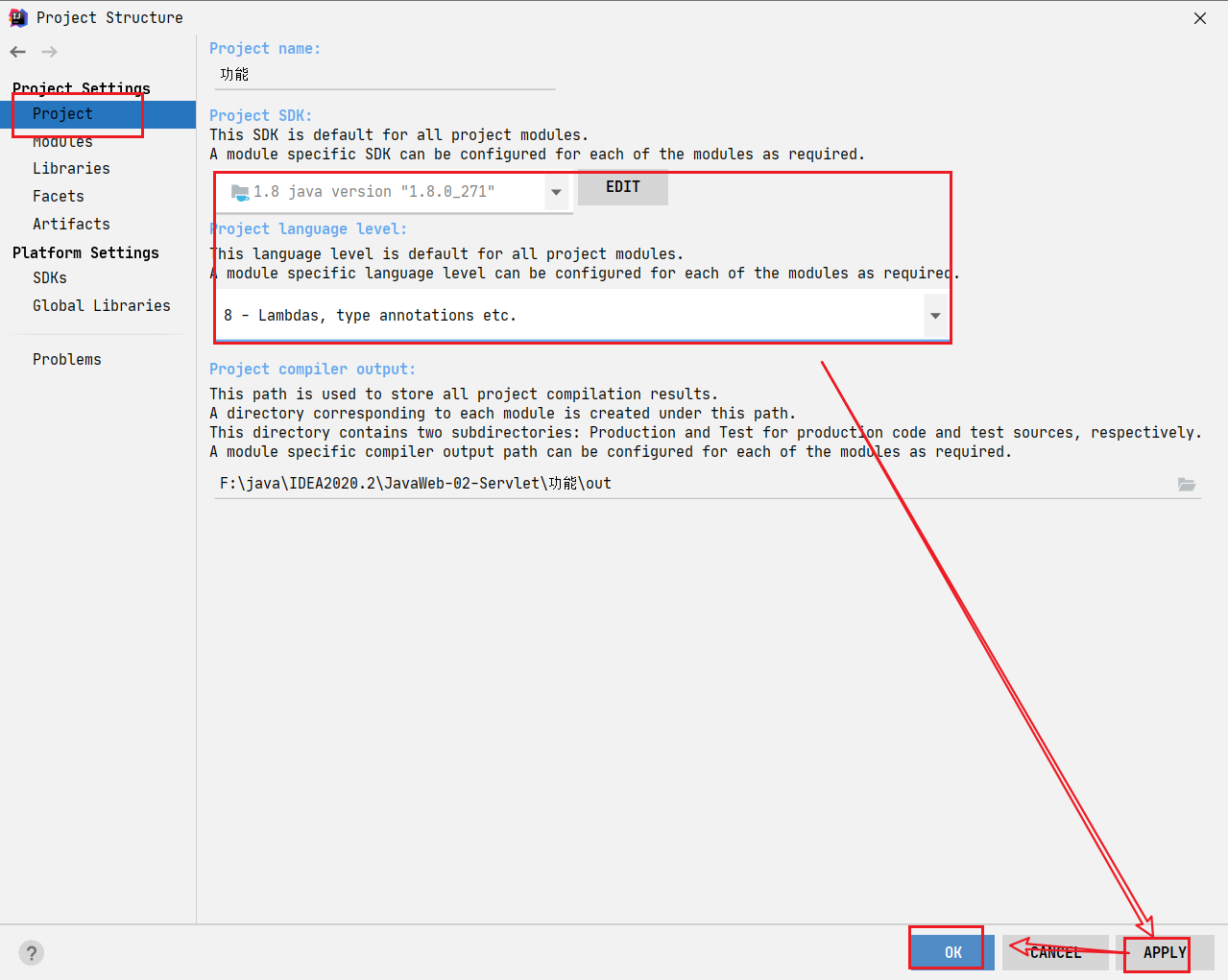
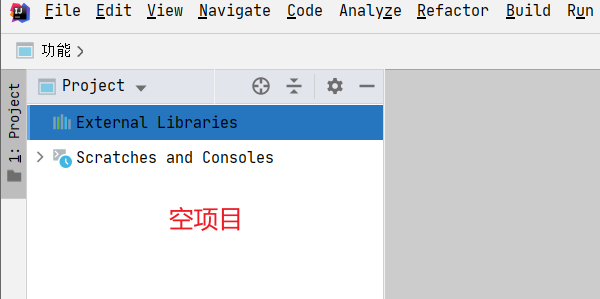

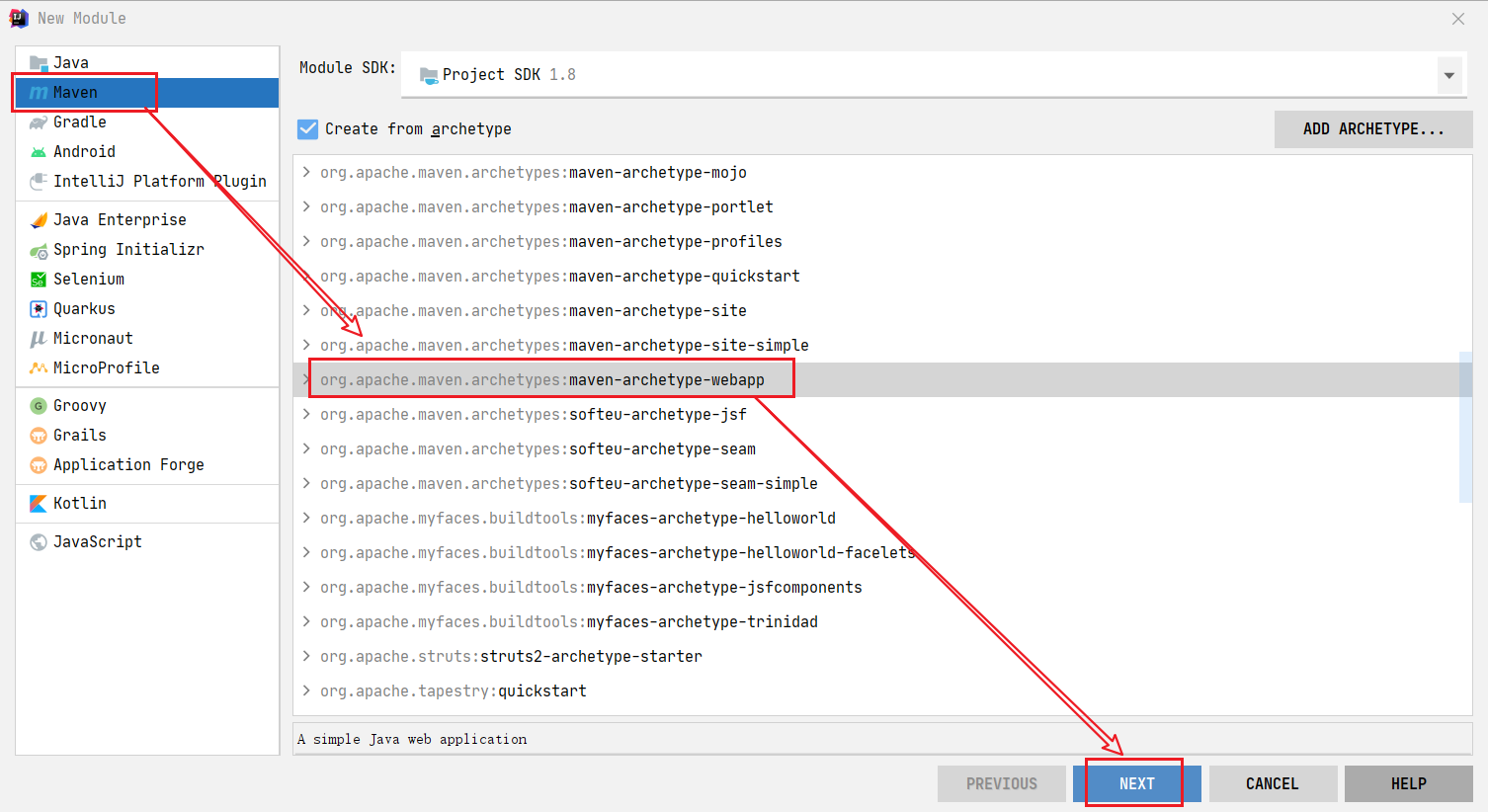
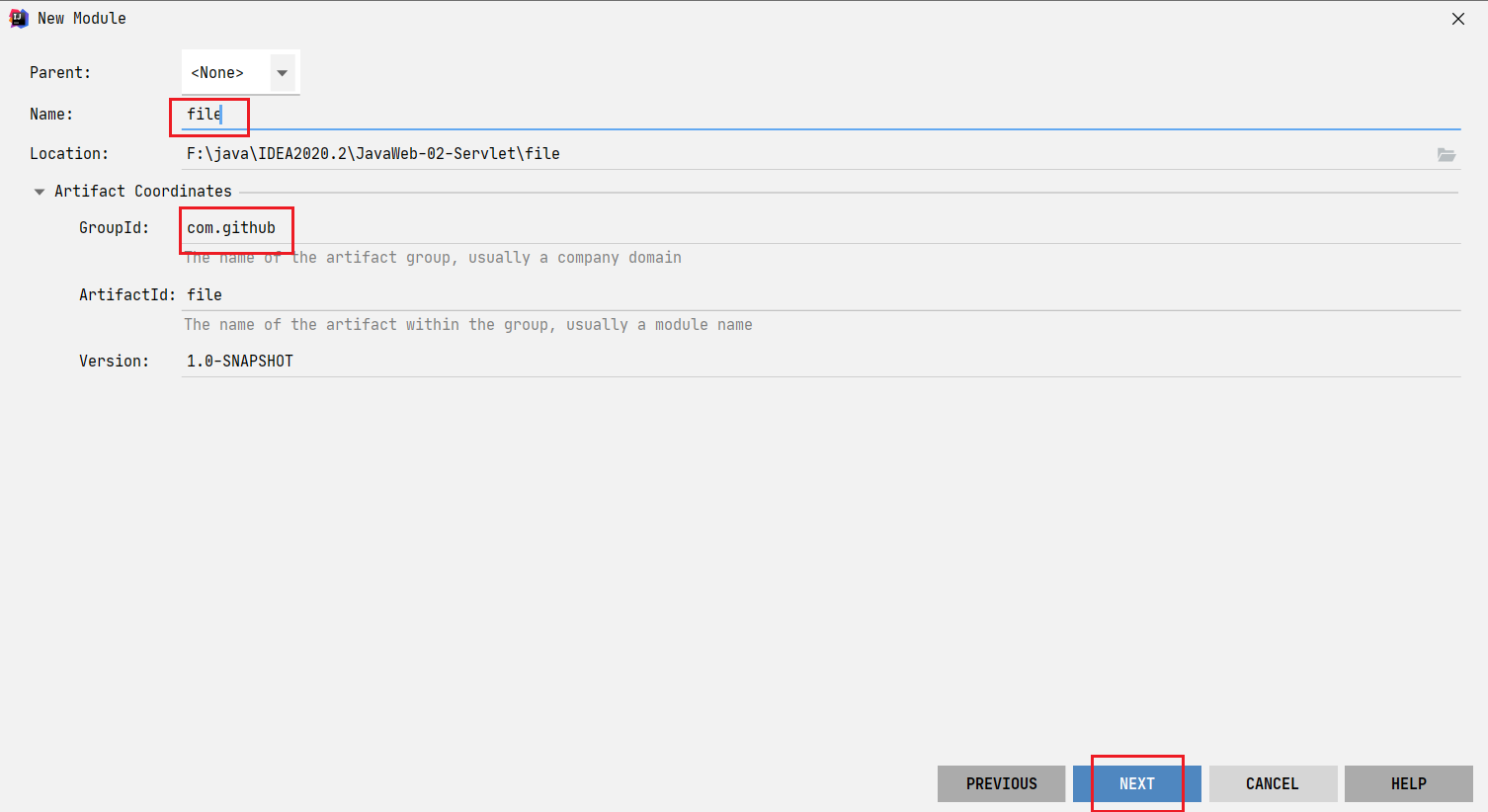

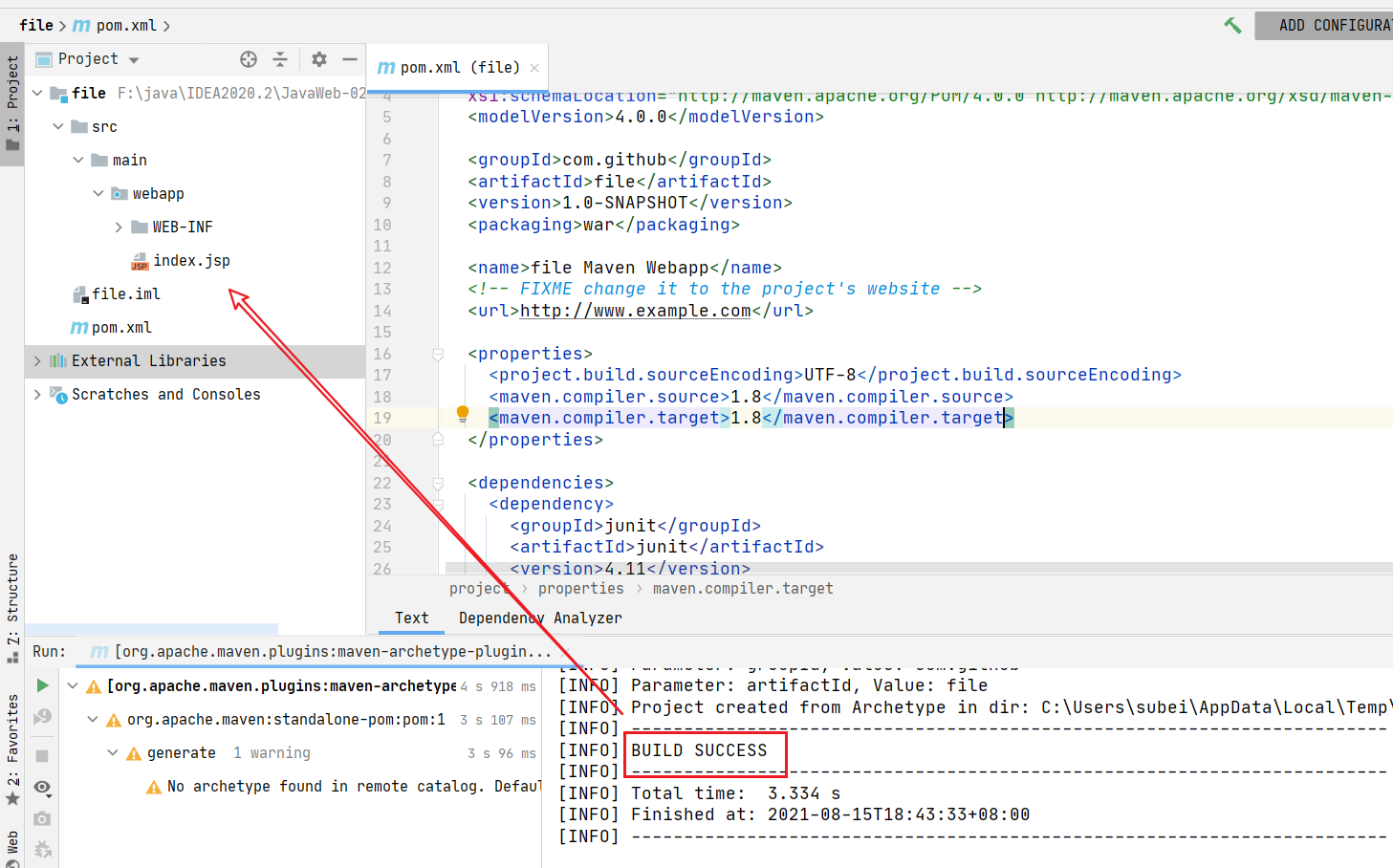
1
2
3
4
5
6
7
8
| <?xml version="1.0" encoding="UTF-8"?>
<web-app xmlns="http://xmlns.jcp.org/xml/ns/javaee"
xmlns:xsi="http://www.w3.org/2001/XMLSchema-instance"
xsi:schemaLocation="http://xmlns.jcp.org/xml/ns/javaee
http://xmlns.jcp.org/xml/ns/javaee/web-app_4_0.xsd"
version="4.0"
metadata-complete="true">
</web-app>
|
- 配置Tomcat,运行空项目。可运行再执行下面操作。
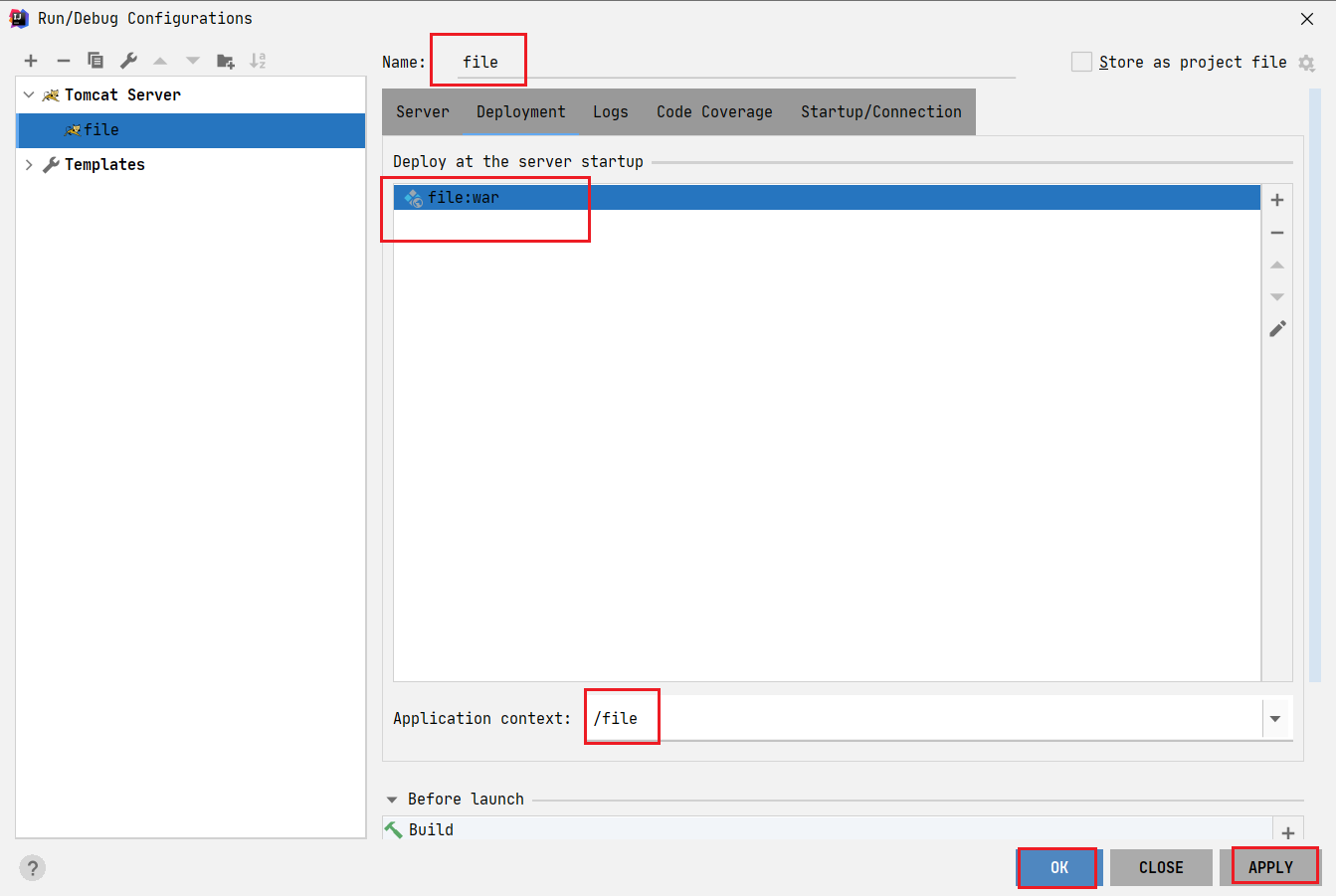
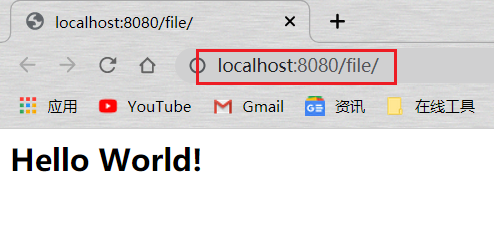

具体实现

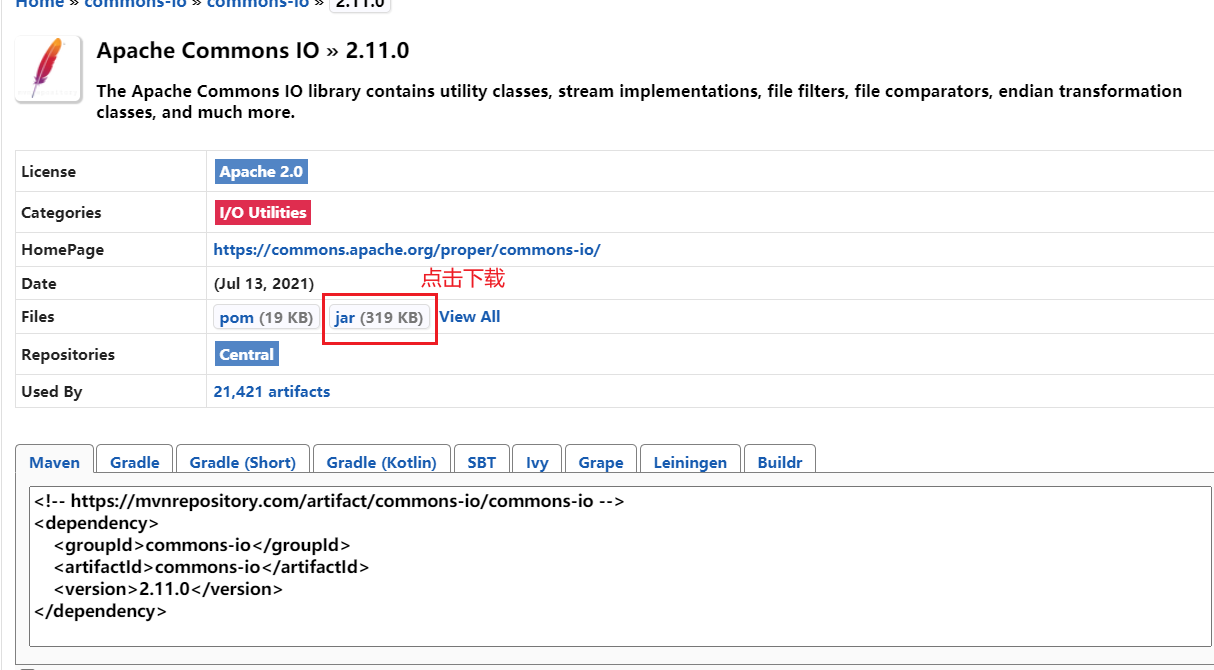
如何查看所下载的jar包中的源码是什么?

- 这些都是别人写好的Java代码编译之后的*.class文件,如果想要查看源码,可以使用反编译工具来获得,==最简单的反编译工具就是我们使用的IDEA==,直接将 *.class拷贝到IDEA中的文件夹,就可以查看它的源码了。
- 为什么压缩的是.class文件?
- 因为这个文件已经通过了编译器的编译,引入 *.class文件可以减少编译这些引用的代码的步骤与时间,直接拿过来就可以使用;更是一种原作者保护自己源码的一种手段!
- 如何查看这些*.class中的源码?
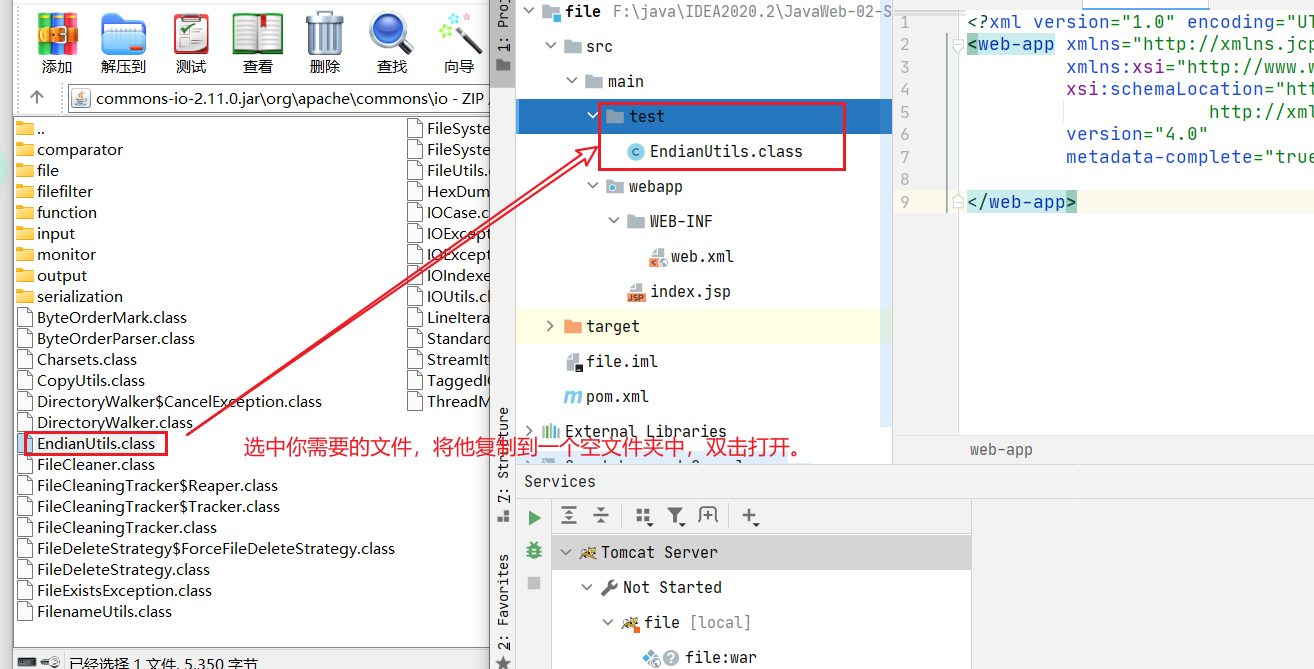

手动导入需要的jar包。
- 在IDEA中,新建一个lib包,复制jar包到lib文件夹。
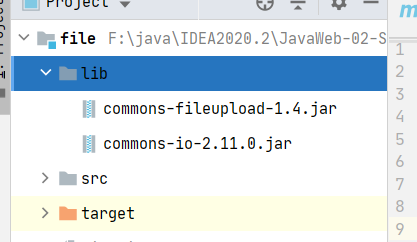



上传文件都是通过使用表单实现的。
1
2
3
| <p>
<input type="file" name="file">
</p>
|
- 注意:上传文件的表单是上面这么写的,但是如果一个表单中包含文件数据,那么该表单如果想要提交文件数据,那么它必须包含enctype属性,且属性值必须为:
enctype="multipart/form-data"
1
2
3
4
5
6
7
8
9
10
11
12
13
14
15
16
17
18
19
20
21
22
23
| <%@ page contentType="text/html;charset=UTF-8" language="java" %>
<html>
<head>
<title>Title</title>
</head>
<body>
<h2>Hello World!</h2>
<%--
通过表单上传文件
get:上传文件有大小限制
post:上传文件无大小限制
--%>
<form action="${pageContext.request.contextPath}/upload.do" enctype="multipart/form-data" method="post">
上传用户: <input type="text" name="username"><br>
上传文件1: <input type="file" name="file1"><br>
上传文件2: <input type="file" name="file2"><br>
<input type="submit" value="提交文件">
</form>
</body>
</html>
|

- 【面试:文件上传调优】
- 上传的文件存放在一个不能使用外界URL访问的目录下面;
- 上传到同一个文件夹中的文件名称应该唯一:使用时间戳/UUID/MD5等手段实现;
- 限制上传文件的最大值:因为服务器上硬盘资源很贵,不能让用户随意的使用;
- 限制文件上传类型:比如这个文件夹只用来存储图片,那你就不能上传一个.mp4的文件;
编写servlet
1
2
3
4
5
6
7
8
9
10
11
12
13
14
15
16
17
18
19
20
21
22
23
24
25
| <%@ page contentType="text/html;charset=UTF-8" language="java" %>
<html>
<head>
<title>Title</title>
</head>
<body>
<h2>Hello World!</h2>
<%--
通过表单上传文件
get:上传文件有大小限制,只能提交4-5kb的数据
post:上传文件无大小限制
注意:文件一般比较大,所以上传文件都是使用post方式提交
${pageContext.request.contextPath}:获取到webapp路径
--%>
<form action="${pageContext.request.contextPath}/upload.do" enctype="multipart/form-data" method="post">
上传用户: <input type="text" name="username"><br>
上传文件1: <input type="file" name="file1"><br>
上传文件2: <input type="file" name="file2"><br>
<p> <input type="submit" value="提交文件"> | <input type="reset" value="重置"> </p>
</form>
</body>
</html>
|
1
2
3
4
5
6
7
8
9
10
11
12
| <%@ page contentType="text/html;charset=UTF-8" language="java" %>
<html>
<head>
<title>成功</title>
</head>
<body>
<%=request.getAttribute("msg")%>
<h2>🎉上传成功🎉</h2>
</body>
</html>
|
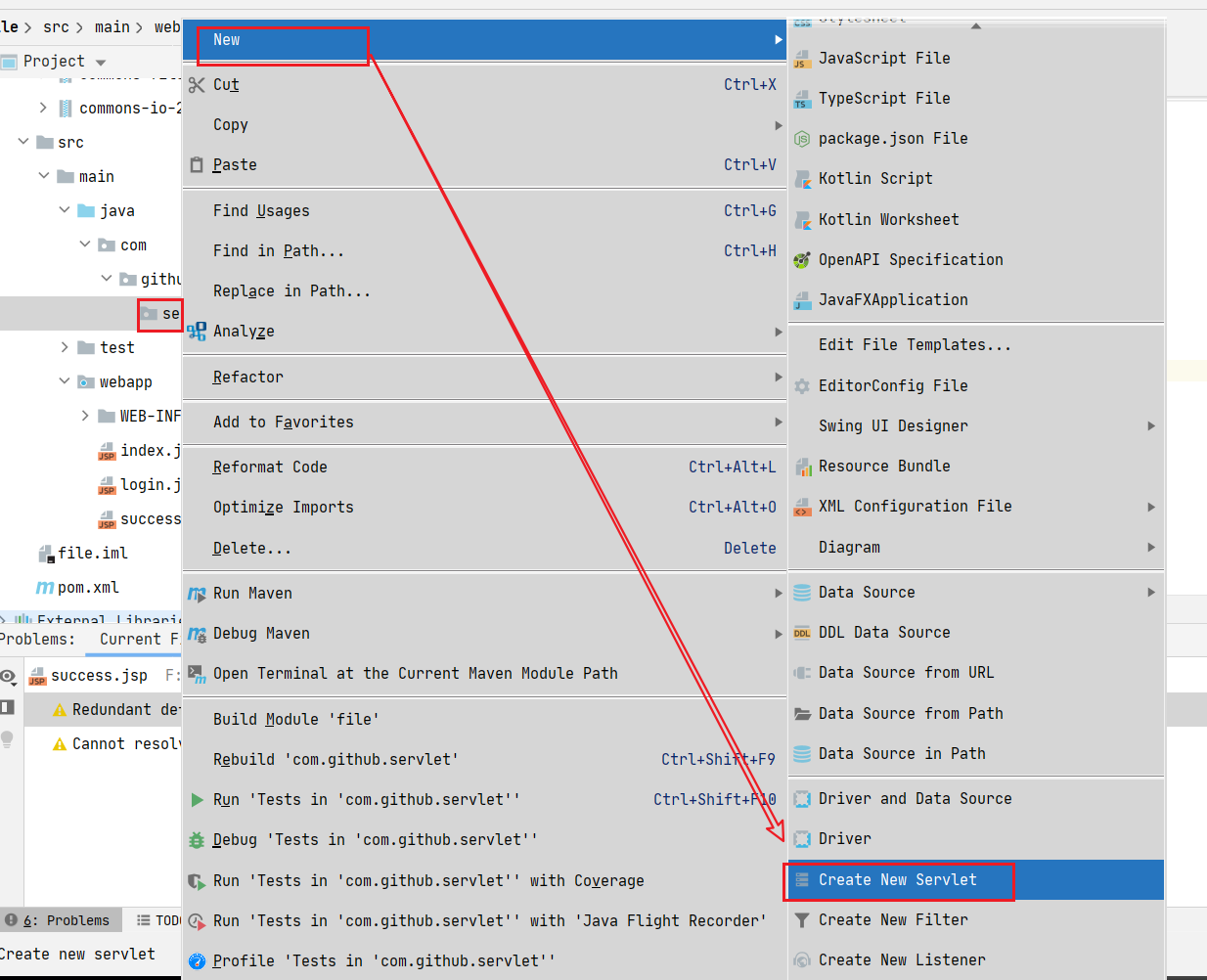
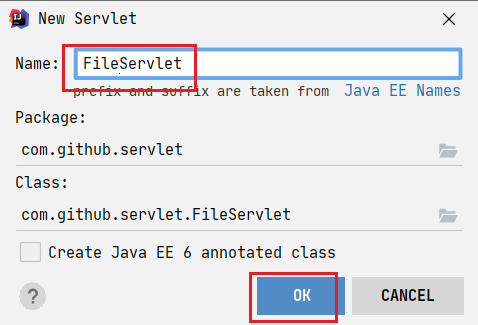
1
2
3
4
5
6
7
8
9
10
11
12
13
14
15
16
17
| <?xml version="1.0" encoding="UTF-8"?>
<web-app xmlns="http://xmlns.jcp.org/xml/ns/javaee"
xmlns:xsi="http://www.w3.org/2001/XMLSchema-instance"
xsi:schemaLocation="http://xmlns.jcp.org/xml/ns/javaee
http://xmlns.jcp.org/xml/ns/javaee/web-app_4_0.xsd"
version="4.0"
metadata-complete="true">
<servlet>
<servlet-name>upload</servlet-name>
<servlet-class>com.github.servlet.FileSerlvet</servlet-class>
</servlet>
<servlet-mapping>
<servlet-name>upload</servlet-name>
<url-pattern>/upload.do</url-pattern>
</servlet-mapping>
</web-app>
|

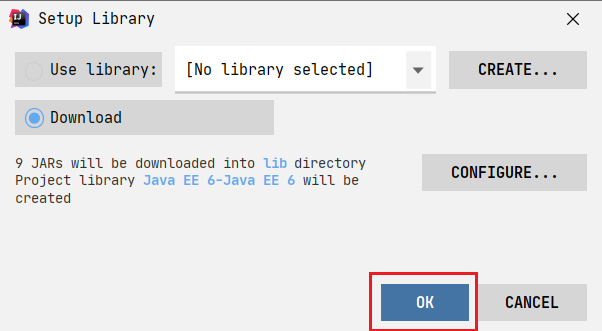
1
2
3
4
5
6
7
8
9
10
11
12
13
14
15
16
17
18
19
20
21
22
23
24
25
26
27
28
29
30
31
32
33
34
35
36
37
38
39
40
41
42
43
44
45
46
47
48
49
50
51
52
53
54
55
56
57
58
59
60
61
62
63
64
65
66
67
68
69
70
71
72
73
74
75
76
77
78
79
80
81
82
83
84
85
86
87
88
89
90
91
92
93
94
95
96
97
98
99
100
101
102
103
104
105
106
107
108
109
110
111
112
113
114
115
116
117
118
119
120
121
122
123
124
125
126
127
128
129
130
131
132
133
134
135
136
137
138
139
140
141
142
143
144
145
146
147
148
149
150
151
152
153
154
155
156
157
158
159
160
161
162
163
164
165
166
167
168
169
170
171
172
173
174
175
176
177
178
179
180
181
182
183
184
185
186
187
188
189
190
191
192
193
194
195
196
197
198
199
200
| package com.github.servlet;
import java.io.File;
import java.io.FileOutputStream;
import java.io.IOException;
import java.io.InputStream;
import java.util.List;
import java.util.UUID;
import javax.servlet.ServletException;
import javax.servlet.http.HttpServlet;
import javax.servlet.http.HttpServletRequest;
import javax.servlet.http.HttpServletResponse;
import org.apache.commons.fileupload.FileItem;
import org.apache.commons.fileupload.FileUploadException;
import org.apache.commons.fileupload.ProgressListener;
import org.apache.commons.fileupload.disk.DiskFileItemFactory;
import org.apache.commons.fileupload.servlet.ServletFileUpload;
public class FileSerlvet extends HttpServlet {
private static final long serialVersionUID = 1L;
@Override
protected void doPost(HttpServletRequest request, HttpServletResponse response)
throws ServletException, IOException {
if (!ServletFileUpload.isMultipartContent(request)) {
return;
}
String uploadPath =this.getServletContext().getRealPath("/WEB-INF/upload");
File uploadFile = new File(uploadPath);
if (!uploadFile.exists()){
uploadFile.mkdir();
}
String tmpPath = this.getServletContext().getRealPath("/WEB-INF/tmp");
File file = new File(tmpPath);
if (!file.exists()) {
file.mkdir();
}
try {
DiskFileItemFactory factory = getDiskFileItemFactory(file);
ServletFileUpload upload = getServletFileUpload(factory);
String msg = uploadParseRequest(upload, request, uploadPath);
System.out.println(msg);
if(msg == "文件上传成功!") {
request.setAttribute("msg",msg);
request.getRequestDispatcher("success.jsp").forward(request, response);
}else {
msg ="请上传文件";
request.setAttribute("msg",msg);
request.getRequestDispatcher("success.jsp").forward(request, response);
}
} catch (FileUploadException e) {
e.printStackTrace();
}
}
public static DiskFileItemFactory getDiskFileItemFactory(File file) {
DiskFileItemFactory factory = new DiskFileItemFactory();
factory.setSizeThreshold(1024 * 1024);
factory.setRepository(file);
return factory;
}
public static ServletFileUpload getServletFileUpload(DiskFileItemFactory factory) {
ServletFileUpload upload = new ServletFileUpload(factory);
upload.setProgressListener(new ProgressListener() {
@Override
public void update(long pBytesRead, long pContentLength, int pItems) {
System.out.println("总大小:" + pContentLength + "已上传:" + pBytesRead);
}
});
upload.setHeaderEncoding("UTF-8");
upload.setFileSizeMax(1024 * 1024 * 10);
return upload;
}
public static String uploadParseRequest(ServletFileUpload upload, HttpServletRequest request, String uploadPath)
throws FileUploadException, IOException {
String msg = "";
List<FileItem> fileItems = upload.parseRequest(request);
for (FileItem fileItem : fileItems) {
if (fileItem.isFormField()) {
String name = fileItem.getFieldName();
String value = fileItem.getString("UTF-8");
System.out.println(name + ": " + value);
} else {
String uploadFileName = fileItem.getName();
System.out.println("上传的文件名: " + uploadFileName);
if (uploadFileName.trim().equals("") || uploadFileName == null) {
continue;
}
String fileName = uploadFileName.substring(uploadFileName.lastIndexOf("/") + 1);
String fileExtName = uploadFileName.substring(uploadFileName.lastIndexOf(".") + 1);
System.out.println("文件信息[件名: " + fileName + " ---文件类型" + fileExtName + "]");
String uuidPath = UUID.randomUUID().toString();
String realPath = uploadPath + "/" + uuidPath;
File realPathFile = new File(realPath);
if (!realPathFile.exists()) {
realPathFile.mkdir();
}
InputStream inputStream = fileItem.getInputStream();
FileOutputStream fos = new FileOutputStream(realPath + "/" + fileName);
byte[] buffer = new byte[1024 * 1024];
int len = 0;
while ((len = inputStream.read(buffer)) > 0) {
fos.write(buffer, 0, len);
}
fos.close();
inputStream.close();
msg = "文件上传成功!";
fileItem.delete();
}
}
return msg;
}
}
|

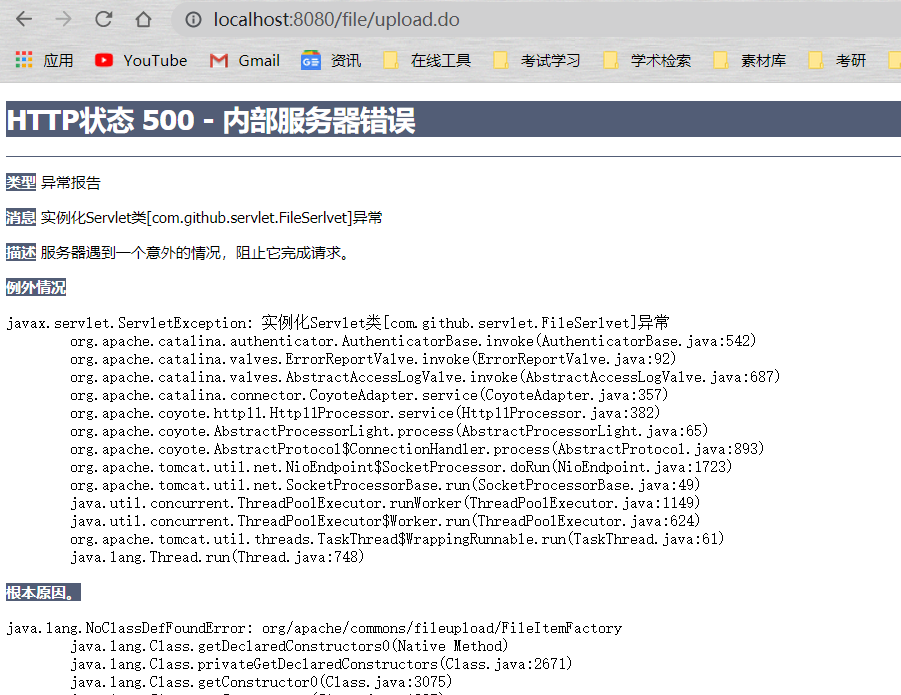
1
2
3
4
5
6
7
8
9
10
| <dependency>
<groupId>commons-fileupload</groupId>
<artifactId>commons-fileupload</artifactId>
<version>1.4</version>
</dependency>
<dependency>
<groupId>commons-io</groupId>
<artifactId>commons-io</artifactId>
<version>2.6</version>
</dependency>
|
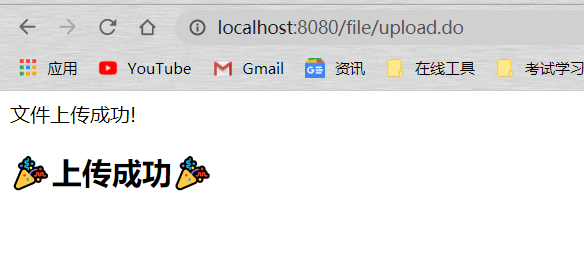
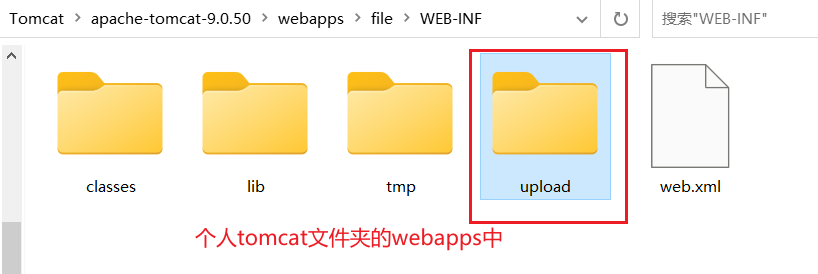
17.邮件发送原理及实现
1.概述
传输协议
- SMTP协议
发送邮件:
我们通常把处理用户smtp请求(邮件发送请求)的服务器称之为SMTP服务器(邮件发送服务器)。 - POP3协议
接收邮件:
我们通常把处理用户pop3请求(邮件接收请求)的服务器称之为POP3服务器(邮件接收服务器)。
邮件收发原理
使用Java实现邮件发送需要使用到的类
- 我们将用代码完成邮件的发送。这在实际项目中应用的非常广泛,比如注册需要发送邮件进行账号激活,再比如A项目中利用邮件进行任务提醒等等。
- 使用Java发送Emai分简单,但是首先你应该准备 JavaMail API和 Java Activation framework。
- 得到两个jar包:
导入jar包时,报错:Cannot resolve mail.jar:mail.jar:1.4
1
2
3
4
5
6
7
8
9
10
| <dependency>
<groupId>javax.activation</groupId>
<artifactId>activation</artifactId>
<version>1.1</version>
</dependency>
<dependency>
<groupId>javax.mail</groupId>
<artifactId>mail</artifactId>
<version>1.4.7</version>
</dependency>
|
JavaMail是sωn公司(现以被甲骨文收购)为方便Java开发人员在应用程序中实现邮件发送和接收功能而提供的一套标准开发包,它支持一些常用的邮件协议,如前面所讲的SMTP,POP3,IMAP,还有MIME等。我们在使用 JavaMail!API编写邮件时,无须考虑邮件的底层实现细节,只要调用 Javamail开发包中相应的API类就可以了。
我们可以先尝试发送一封简单的邮件,确保电脑可以连接网络。
- 创建包含邮件服务器的网络连接信息的Session对象。
- 创建代表邮件内容的Message对象;
- 创建Transport对象,连接服务器,发送Message,关闭连接;
主要有四个核心类,我们在编写程序时,记住这四个核心类,就很容易编写出Java邮件处理程序。

2.简单邮件
邮件分类
- 简单邮件:没有除了文字以外的其他所有文件(包括附件和图片、视频等),即纯文本邮件;
- 复杂邮件:除了传统的文字信息外,还包括了一些非文字数据的邮件;

需要发送邮件首先就要我们的邮箱账号支持POP3和SMTP协议,所以我们需要开启邮箱的POP3+SMTP服务,然后我们需要复制下图中的授权码,这个授权码就相当于你的QQ密码,你可以使用你的邮箱账号+授权码来发送邮件,而SMTP服务器也就是使用这个来识别你的身份的。
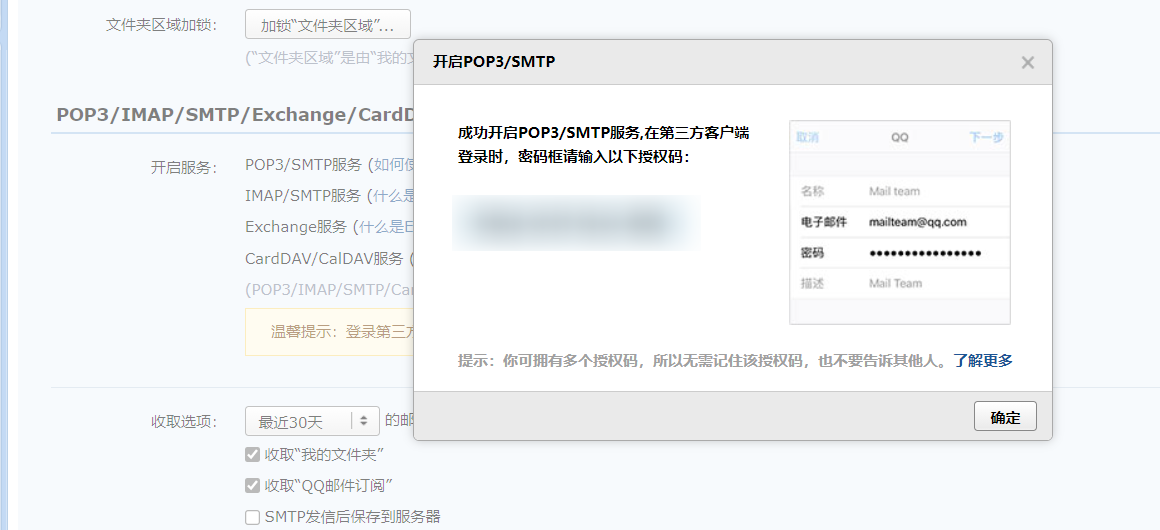
1
2
3
4
5
6
7
8
9
10
11
12
13
14
15
16
17
18
19
20
21
22
23
24
25
26
27
28
29
30
31
32
33
34
35
36
37
38
39
40
41
42
43
44
45
46
47
48
49
50
51
52
53
54
55
56
57
58
59
60
61
62
63
64
65
66
67
68
69
70
71
72
73
74
75
| package com.github.test;
import com.sun.mail.util.MailSSLSocketFactory;
import javax.mail.*;
import javax.mail.internet.InternetAddress;
import javax.mail.internet.MimeMessage;
import java.util.Properties;
public class MailDemo01 {
public static void main(String[] args) throws Exception {
Properties prop = new Properties();
prop.setProperty("mail.host", "smtp.qq.com");
prop.setProperty("mail.transport.protocol", "smtp");
prop.setProperty("mail.smtp.auth", "true");
MailSSLSocketFactory sf = new MailSSLSocketFactory();
sf.setTrustAllHosts(true);
prop.put("mail.smtp.ssl.enable", "true");
prop.put("mail.smtp.ssl.socketFactory", sf);
Session session = Session.getDefaultInstance(prop, new Authenticator() {
@Override
public PasswordAuthentication getPasswordAuthentication() {
return new PasswordAuthentication("XXXX@qq.com", "授权码");
}
});
session.setDebug(true);
Transport ts = session.getTransport();
ts.connect("smtp.qq.com", "XXXX@qq.com", "授权码");
MimeMessage message = new MimeMessage(session);
message.setFrom(new InternetAddress("XXXX@qq.com"));
message.setRecipient(Message.RecipientType.TO, new InternetAddress("XXXX@qq.com"));
message.setSubject("简单邮件发送实现");
message.setContent("<h2 style='color:red'>你好啊!</h2>", "text/html;charset=UTF-8");
ts.sendMessage(message, message.getAllRecipients());
ts.close();
}
}
|

3.复杂邮件
复杂邮件就是非纯文本的邮件,可能还包含了图片和附件等资源。
MIME(多用途互联网邮件扩展类型)
先认识两个类一个名词:
MimeBodyPart类
- javax.mail.internet.MimeBodyPart类表示的是一个MIME消息,它和MimeMessage类一样都是从Part接口继承过来。
- 即一个MIME消息对应一个MimeBodyPart对象,而MimeBodyPart对象就是我们写的邮件内容中的元素。
MimeMultipart类
- javax.mail.internet.MimeMultipart是抽象类 Multipart的实现子类,它用来组合多个MIME消息。一个MimeMultipart对象可以包含多个代表MIME消息的MimeBodyPart对象。
- 即一个MimeMultipart对象表示多个MimeBodyPart的集合,而一个MimeMultipart表示的就是我们一封邮件的内容。
MimeMultipart对象的使用的时候需要设置setSubType()的属性值,一共就下面3种取值:
- alternative:表明这个MimeMultipart对象中的MimeMessage对象的数据是纯文本文件;
- related:表明这个MimeMultipart对象中的MimeMessage对象的数据包含非纯文本文件;
- mixed:表明这个MimeMultipart对象中的MimeMessage对象的数据包含附件;
我们在使得的时候如果不知道使用哪一个,直接使用mixed即可,使用这个属性值一定不会报错。
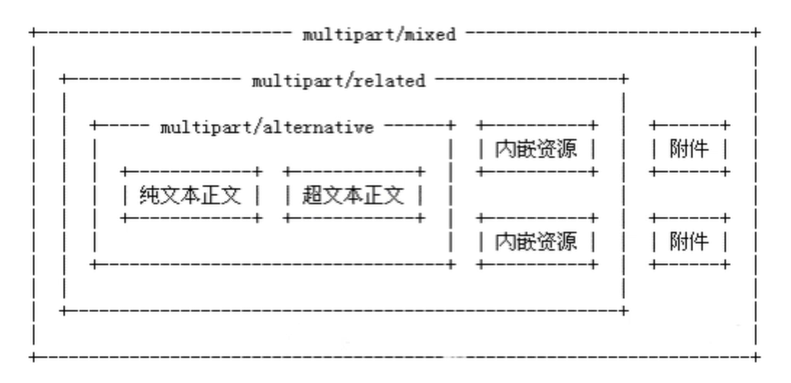
相较于简单邮件,复杂邮件变化的地方只是在于邮件内容本身会发送变化,而其他的步骤都是一样的:
- 准备一些参数;
- 获取session对象;
- 获取传输对象;
- 登陆授权;
- 写邮件 (和简单邮件相区别);
- 发送邮件;
- 关闭服务器资源。
发送包含图片的复杂邮件
1
2
3
4
5
6
7
8
9
10
11
12
13
14
15
16
17
18
19
20
21
22
23
24
25
26
27
28
29
30
31
32
33
34
35
36
37
38
39
40
41
42
43
44
45
46
47
48
49
50
51
52
53
54
55
56
57
58
59
60
61
62
63
64
65
66
67
68
69
70
71
72
73
74
75
76
77
78
79
80
81
82
83
84
85
86
87
88
89
90
91
92
93
94
95
96
97
98
99
100
101
102
103
104
105
106
107
108
109
110
111
112
113
114
| package com.github.test;
import com.sun.mail.util.MailSSLSocketFactory;
import javax.activation.DataHandler;
import javax.activation.FileDataSource;
import javax.mail.*;
import javax.mail.internet.InternetAddress;
import javax.mail.internet.MimeBodyPart;
import javax.mail.internet.MimeMessage;
import javax.mail.internet.MimeMultipart;
import java.util.Properties;
public class MailDemo01 {
public static void main(String[] args) throws Exception {
Properties prop = new Properties();
prop.setProperty("mail.host", "smtp.qq.com");
prop.setProperty("mail.transport.protocol", "smtp");
prop.setProperty("mail.smtp.auth", "true");
MailSSLSocketFactory sf = new MailSSLSocketFactory();
sf.setTrustAllHosts(true);
prop.put("mail.smtp.ssl.enable", "true");
prop.put("mail.smtp.ssl.socketFactory", sf);
Session session = Session.getDefaultInstance(prop, new Authenticator() {
@Override
public PasswordAuthentication getPasswordAuthentication() {
return new PasswordAuthentication("XXXX@qq.com", "授权码");
}
});
session.setDebug(true);
Transport ts = session.getTransport();
ts.connect("smtp.qq.com", "XXXX@qq.com", "授权码");
MimeMessage message = new MimeMessage(session);
message.setFrom(new InternetAddress("XXXX@qq.com"));
message.setRecipient(Message.RecipientType.TO, new InternetAddress("XXXX@qq.com"));
message.setSubject("简单邮件发送实现");
System.out.println("=============================复杂邮件的邮件内容设置==================================");
MimeBodyPart image = new MimeBodyPart();
DataHandler dh = new DataHandler(new FileDataSource("图片的绝对地址"));
image.setDataHandler(dh);
image.setContentID("p6.jpg");
MimeBodyPart text = new MimeBodyPart();
text.setContent("这是一封邮件正文带图片<../img src='cid:p6.jpg'>的邮件", "text/html;charset=UTF-8");
MimeMultipart mm = new MimeMultipart();
mm.addBodyPart(text);
mm.addBodyPart(image);
mm.setSubType("related");
message.setContent(mm);
message.saveChanges();
System.out.println("===============================================================");
ts.sendMessage(message, message.getAllRecipients());
ts.close();
}
}
|
1
2
3
4
5
6
7
8
9
10
11
12
13
14
15
16
17
18
19
20
21
22
23
24
25
26
27
28
29
30
|
MimeBodyPart image = new MimeBodyPart();
DataHandler dh = new DataHandler(new FileDataSource("图片的绝对地址"));
image.setDataHandler(dh);
image.setContentID("p6.jpg");
MimeBodyPart text = new MimeBodyPart();
text.setContent("这是一封邮件正文带图片<../img src='cid:p6.jpg'>的邮件", "text/html;charset=UTF-8");
MimeMultipart mm = new MimeMultipart();
mm.addBodyPart(text);
mm.addBodyPart(image);
mm.setSubType("related");
message.setContent(mm);
message.saveChanges();
|

发送包含附件的复杂邮件
1
2
3
4
5
6
7
8
9
10
11
12
13
14
15
16
17
18
19
20
21
22
23
24
25
26
27
28
29
30
31
32
33
34
35
36
37
38
39
40
41
42
43
44
45
46
47
48
49
50
51
52
53
| System.out.println("=============================复杂邮件的邮件内容设置==================================");
MimeBodyPart body1 = new MimeBodyPart();
body1.setDataHandler(new DataHandler(new FileDataSource("图片的绝对地址")));
body1.setContentID("some.png");
MimeBodyPart body2 = new MimeBodyPart();
body2.setContent("请注意,这是文本附件<../img src='cid:test.png'>","text/html;charset=utf-8");
MimeBodyPart body3 = new MimeBodyPart();
body3.setDataHandler(new DataHandler(new FileDataSource("附件1的绝对地址")));
body3.setFileName("demo.c");
MimeBodyPart body4 = new MimeBodyPart();
body4.setDataHandler(new DataHandler(new FileDataSource("附件2的绝对地址")));
body4.setFileName("demo.txt");
MimeMultipart multipart1 = new MimeMultipart();
multipart1.addBodyPart(body1);
multipart1.addBodyPart(body2);
multipart1.setSubType("related");
MimeBodyPart contentText = new MimeBodyPart();
contentText.setContent(multipart1);
MimeMultipart allFile =new MimeMultipart();
allFile.addBodyPart(body3);
allFile.addBodyPart(body4);
allFile.addBodyPart(contentText);
allFile.setSubType("mixed");
message.setContent(allFile);
message.saveChanges();
System.out.println("===============================================================");
|

4.网站注册发送邮件功能实现

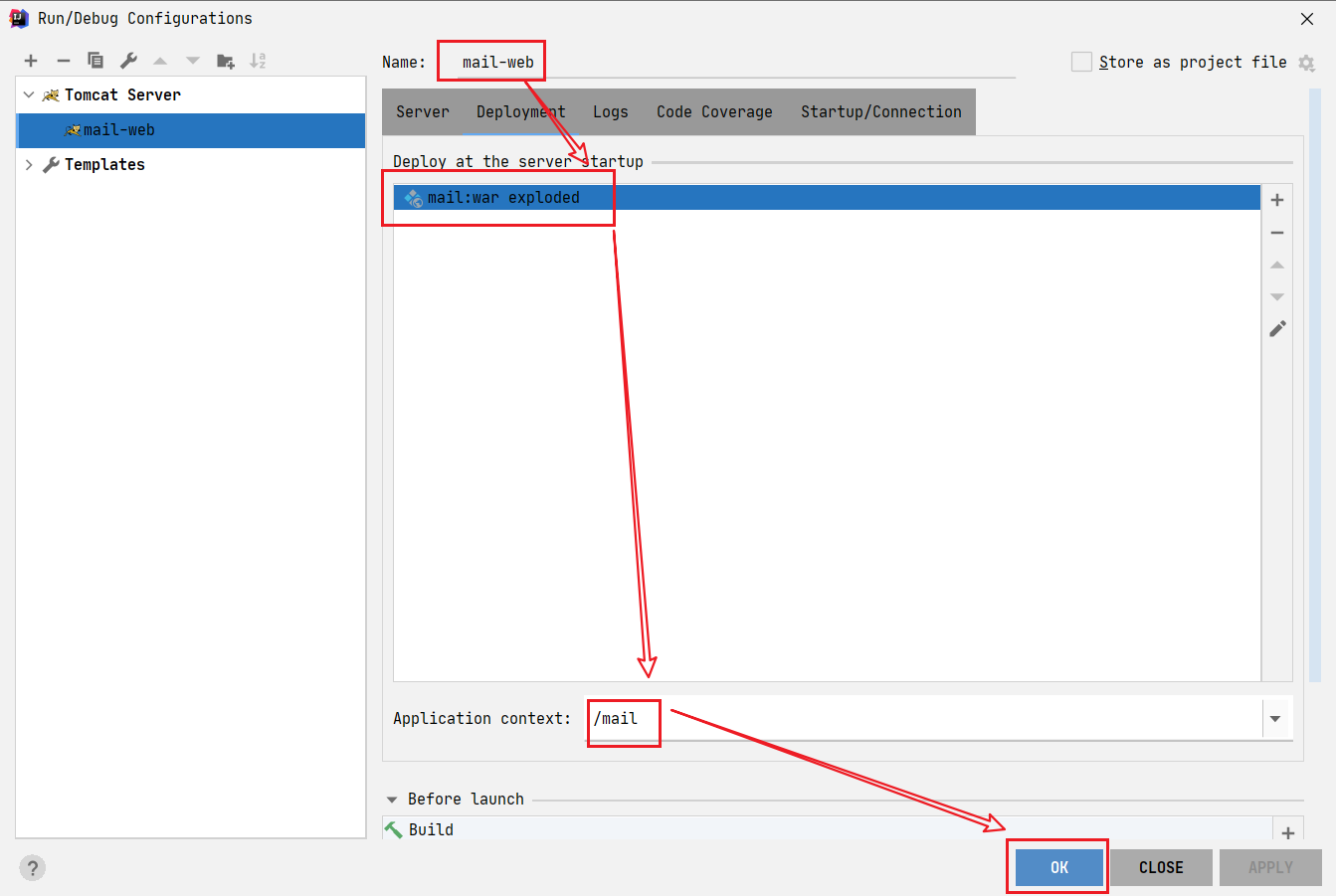

- 环境搭建完成,测试通过。
- 导入maven依赖——pom.xml:
1
2
3
4
5
6
7
8
9
10
11
12
13
14
15
16
17
18
19
20
21
22
23
24
25
26
27
28
29
30
31
32
33
34
35
36
37
38
39
40
41
42
43
44
45
46
47
48
49
50
| <?xml version="1.0" encoding="UTF-8"?>
<project xmlns="http://maven.apache.org/POM/4.0.0"
xmlns:xsi="http://www.w3.org/2001/XMLSchema-instance"
xsi:schemaLocation="http://maven.apache.org/POM/4.0.0 http://maven.apache.org/xsd/maven-4.0.0.xsd">
<modelVersion>4.0.0</modelVersion>
<groupId>org.example</groupId>
<artifactId>mail</artifactId>
<version>1.0-SNAPSHOT</version>
<dependencies>
<dependency>
<groupId>javax.servlet</groupId>
<artifactId>servlet-api</artifactId>
<version>2.5</version>
</dependency>
<dependency>
<groupId>javax.servlet.jsp</groupId>
<artifactId>javax.servlet.jsp-api</artifactId>
<version>2.3.3</version>
</dependency>
<dependency>
<groupId>javax.servlet.jsp.jstl</groupId>
<artifactId>jstl-api</artifactId>
<version>1.2</version>
</dependency>
<dependency>
<groupId>taglibs</groupId>
<artifactId>standard</artifactId>
<version>1.1.2</version>
</dependency>
<dependency>
<groupId>javax.activation</groupId>
<artifactId>activation</artifactId>
<version>1.1</version>
</dependency>
<dependency>
<groupId>javax.mail</groupId>
<artifactId>mail</artifactId>
<version>1.4.7</version>
</dependency>
</dependencies>
</project>
|
- 拷贝前端素材;
- index.jsp——注册页面;
- info.jsp——提示成功页面;
1
2
3
4
5
6
7
8
9
10
11
12
13
14
15
16
17
| <%@ page contentType="text/html;charset=UTF-8" %>
<%--注册填写邮箱的前端页面--%>
<html>
<head>
<title>注册</title>
</head>
<body>
<form action="${pageContext.request.contextPath}/RegisterServlet.do" method="post">
用户名:<input type="text" name="username"><br/>
密码:<input type="password" name="password"><br/>
邮箱:<input type="text" name="email"><br/>
<input type="submit" value="注册">
</form>
</body>
</html>
|
1
2
3
4
5
6
7
8
9
10
11
12
| <%@ page contentType="text/html;charset=UTF-8" %>
<html>
<head>
<title>注册成功</title>
</head>
<body>
<h2>🎉注册成功🎉</h2>
${message}
</body>
</html>
|
1
2
3
4
5
6
7
8
9
10
11
12
13
14
15
16
17
18
19
20
21
22
23
24
25
26
27
28
29
30
31
32
33
34
35
36
37
38
39
40
41
42
43
44
45
46
47
48
49
| package com.github.pojo;
public class User {
private String username;
private String password;
private String email;
public User() {
}
public User(String username, String password, String email) {
this.username = username;
this.password = password;
this.email = email;
}
public String getUsername() {
return username;
}
public void setUsername(String username) {
this.username = username;
}
public String getPassword() {
return password;
}
public void setPassword(String password) {
this.password = password;
}
public String getEmail() {
return email;
}
public void setEmail(String email) {
this.email = email;
}
@Override
public String toString() {
return "User{" +
"username='" + username + '\'' +
", password='" + password + '\'' +
", email='" + email + '\'' +
'}';
}
}
|
1
2
3
4
5
6
7
8
9
10
11
12
13
14
15
16
17
18
19
20
21
22
23
24
25
26
27
28
29
30
31
32
33
34
35
36
37
38
39
40
41
42
43
44
45
46
47
48
49
50
51
52
53
54
55
56
57
58
59
60
61
62
63
64
65
66
67
68
69
70
71
72
73
74
75
76
77
78
79
80
81
82
83
84
85
86
87
88
89
90
91
92
93
| package com.github.util;
import com.github.pojo.User;
import com.sun.mail.util.MailSSLSocketFactory;
import javax.mail.*;
import javax.mail.internet.InternetAddress;
import javax.mail.internet.MimeMessage;
import java.util.Properties;
public class Sendmail extends Thread{
private String from = "XXXX@qq.com";
private String username = "XXXX@qq.com";
private String password = "授权码";
private String host = "smtp.qq.com";
private User user;
public Sendmail(User user) {
this.user = user;
}
@Override
public void run() {
try {
Properties prop = new Properties();
prop.setProperty("mail.host", host);
prop.setProperty("mail.transport.protocol", "smtp");
prop.setProperty("mail.smtp.auth", "true");
MailSSLSocketFactory sf = new MailSSLSocketFactory();
sf.setTrustAllHosts(true);
prop.put("mail.smtp.ssl.enable", "true");
prop.put("mail.smtp.ssl.socketFactory", sf);
Session session = Session.getDefaultInstance(prop, new Authenticator() {
@Override
public PasswordAuthentication getPasswordAuthentication() {
return new PasswordAuthentication("XXXX@qq.com", "授权码");
}
});
session.setDebug(true);
Transport ts = session.getTransport();
ts.connect(host, username, password);
MimeMessage message = new MimeMessage(session);
message.setFrom(new InternetAddress(username));
message.setRecipient(Message.RecipientType.TO, new InternetAddress(user.getEmail()));
message.setSubject("用户注册邮件!");
message.setContent("<p><h2>恭喜注册成功!</h2></p>您的用户名为: <h4>"+user.getUsername()+
"</h4><p>您的密码:" + user.getPassword() +
"</p><p>请妥善保管您的密码,如有问题请及时联系网站客服,再次欢迎您的加入!!</p>", "text/html;charset=UTF-8");
ts.sendMessage(message, message.getAllRecipients());
ts.close();
} catch (Exception e) {
e.printStackTrace();
}
}
}
|
1
2
3
4
5
6
7
8
9
10
11
12
13
14
15
16
17
18
19
20
21
22
23
24
25
26
27
28
29
30
31
32
33
34
35
36
37
38
| package com.github.servlet;
import com.github.pojo.User;
import com.github.util.Sendmail;
import javax.servlet.ServletException;
import javax.servlet.http.HttpServlet;
import javax.servlet.http.HttpServletRequest;
import javax.servlet.http.HttpServletResponse;
import java.io.IOException;
public class RegisterServlet extends HttpServlet {
@Override
protected void doGet(HttpServletRequest req, HttpServletResponse resp) throws ServletException, IOException {
String username = req.getParameter("username");
String password = req.getParameter("password");
String email = req.getParameter("email");
System.out.println(username+password+email);
User user = new User(username,password,email);
Sendmail sendmail = new Sendmail(user);
new Thread(sendmail).start();
req.setAttribute("message","注册成功!我们已经向您的邮箱发送了邮件,请您及时进行查收。由于网络原因,您收到邮件的时间存在延迟,敬请谅解~");
req.getRequestDispatcher("info.jsp").forward(req,resp);
}
@Override
protected void doPost(HttpServletRequest req, HttpServletResponse resp) throws ServletException, IOException {
doGet(req, resp);
}
}
|
1
2
3
4
5
6
7
8
9
10
11
12
13
14
15
16
| <?xml version="1.0" encoding="UTF-8"?>
<web-app xmlns="http://xmlns.jcp.org/xml/ns/javaee"
xmlns:xsi="http://www.w3.org/2001/XMLSchema-instance"
xsi:schemaLocation="http://xmlns.jcp.org/xml/ns/javaee http://xmlns.jcp.org/xml/ns/javaee/web-app_4_0.xsd"
version="4.0">
<servlet>
<servlet-name>RegisterServlet</servlet-name>
<servlet-class>com.github.servlet.RegisterServlet</servlet-class>
</servlet>
<servlet-mapping>
<servlet-name>RegisterServlet</servlet-name>
<url-pattern>/RegisterServlet.do</url-pattern>
</servlet-mapping>
</web-app>
|

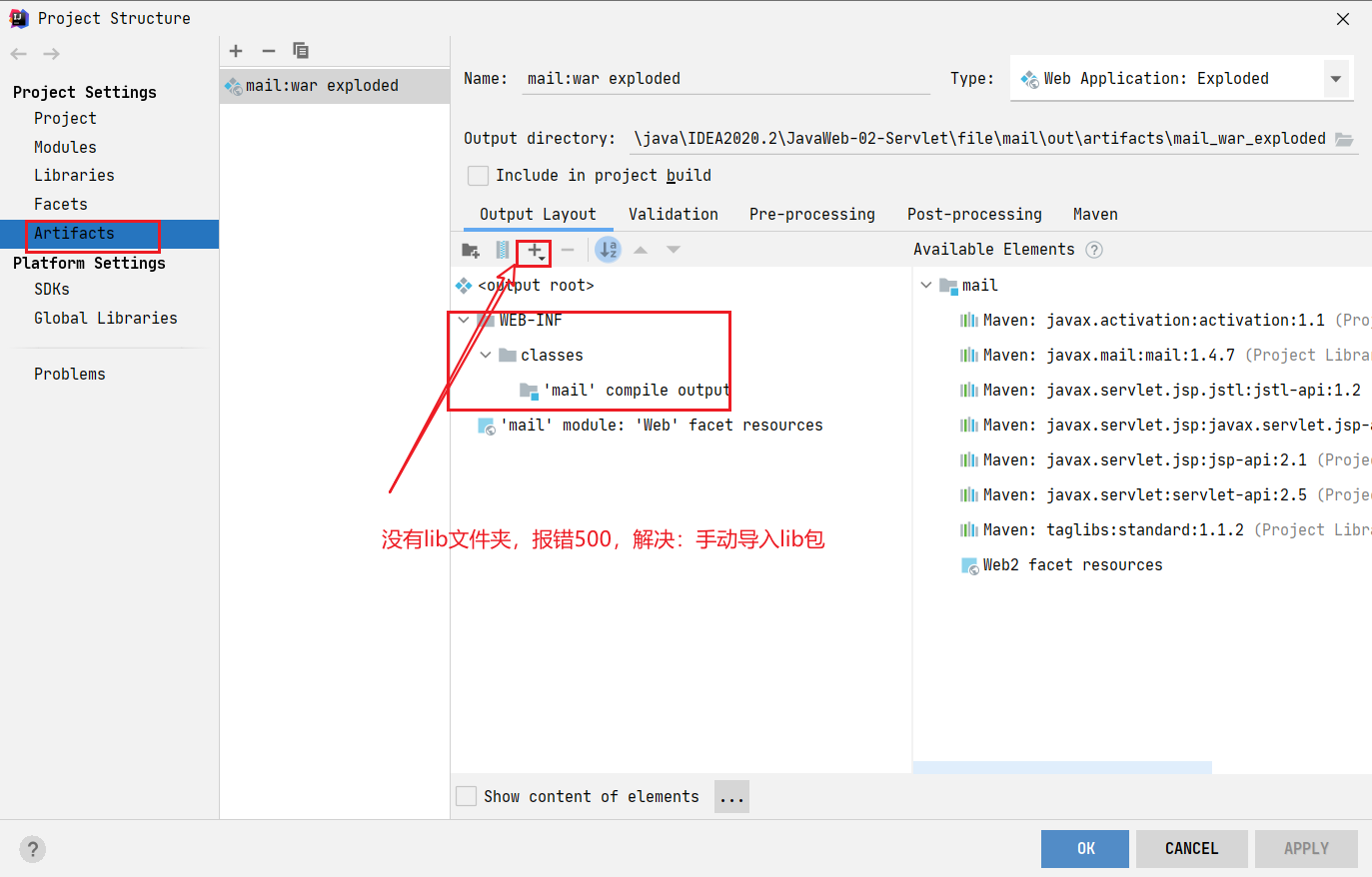
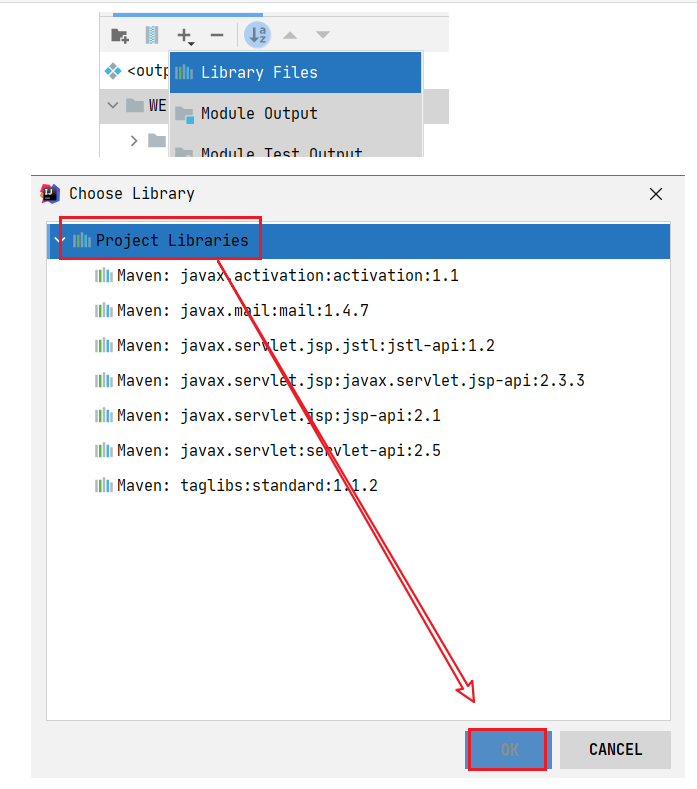
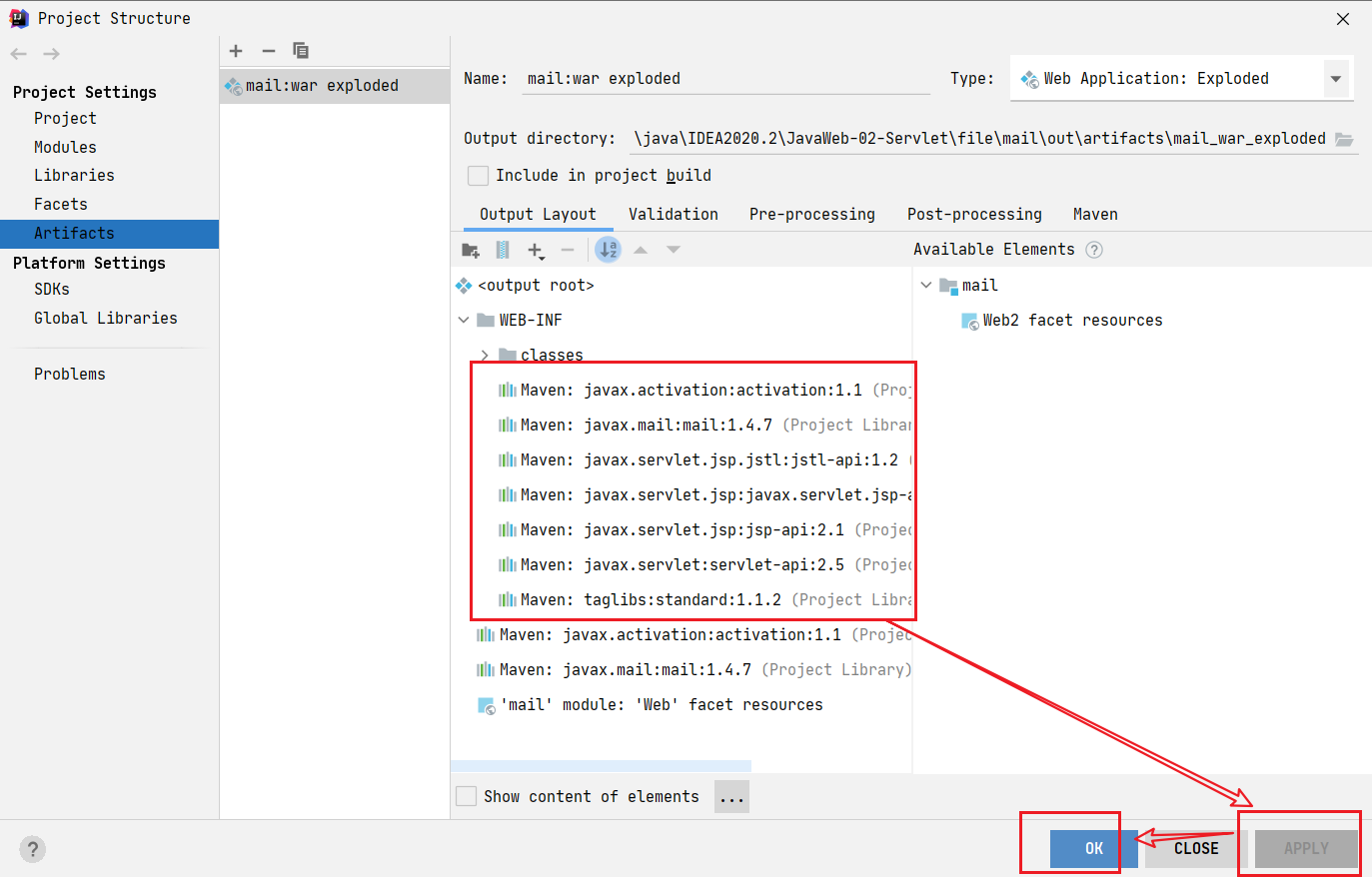
- ==再次运行,还是报错500==;
- 将activation-1.1.jar、mail-1.4.7.jar导入到Tomcat中的lib文件夹中。
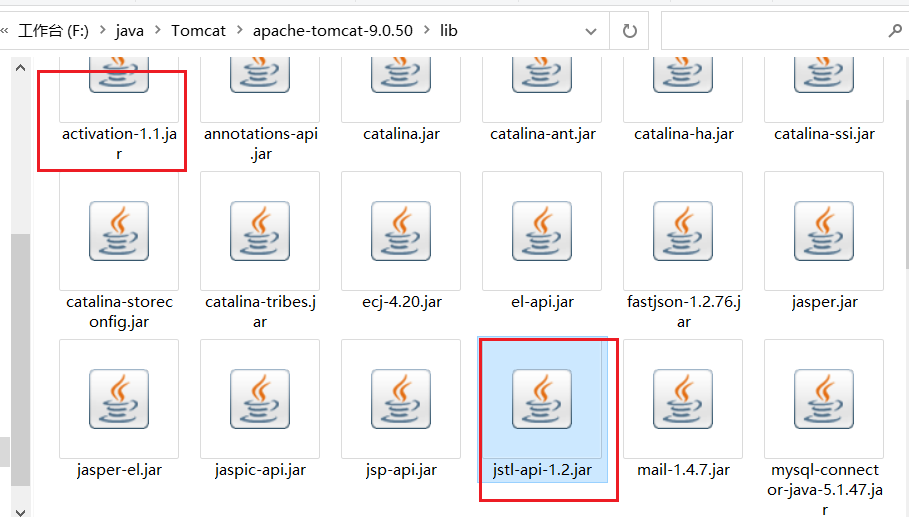
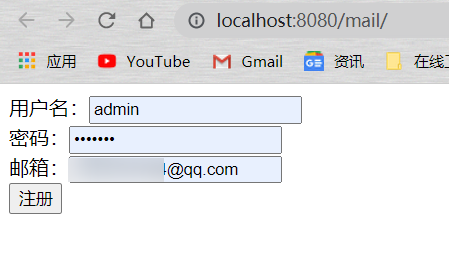
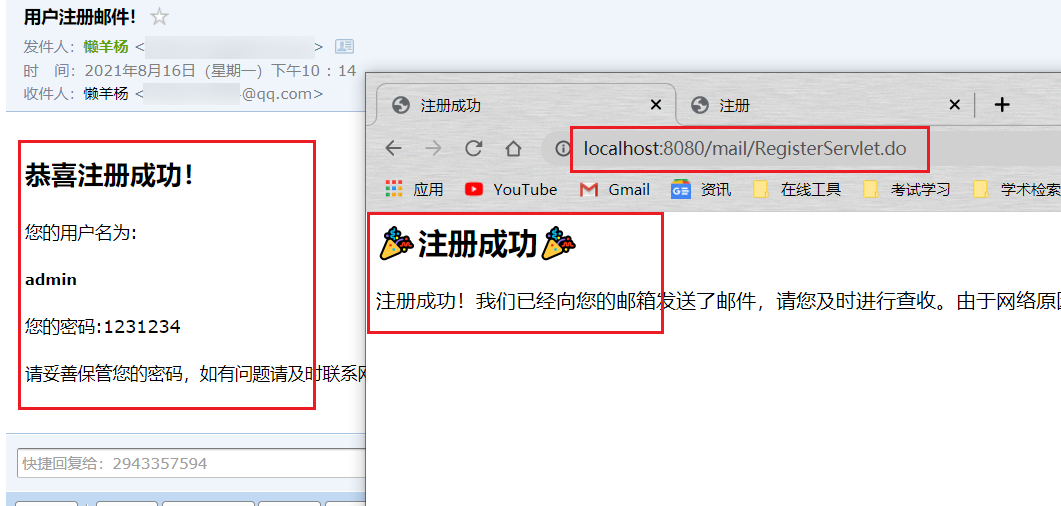
🎉🎉全剧终🎉🎉












































































































































































